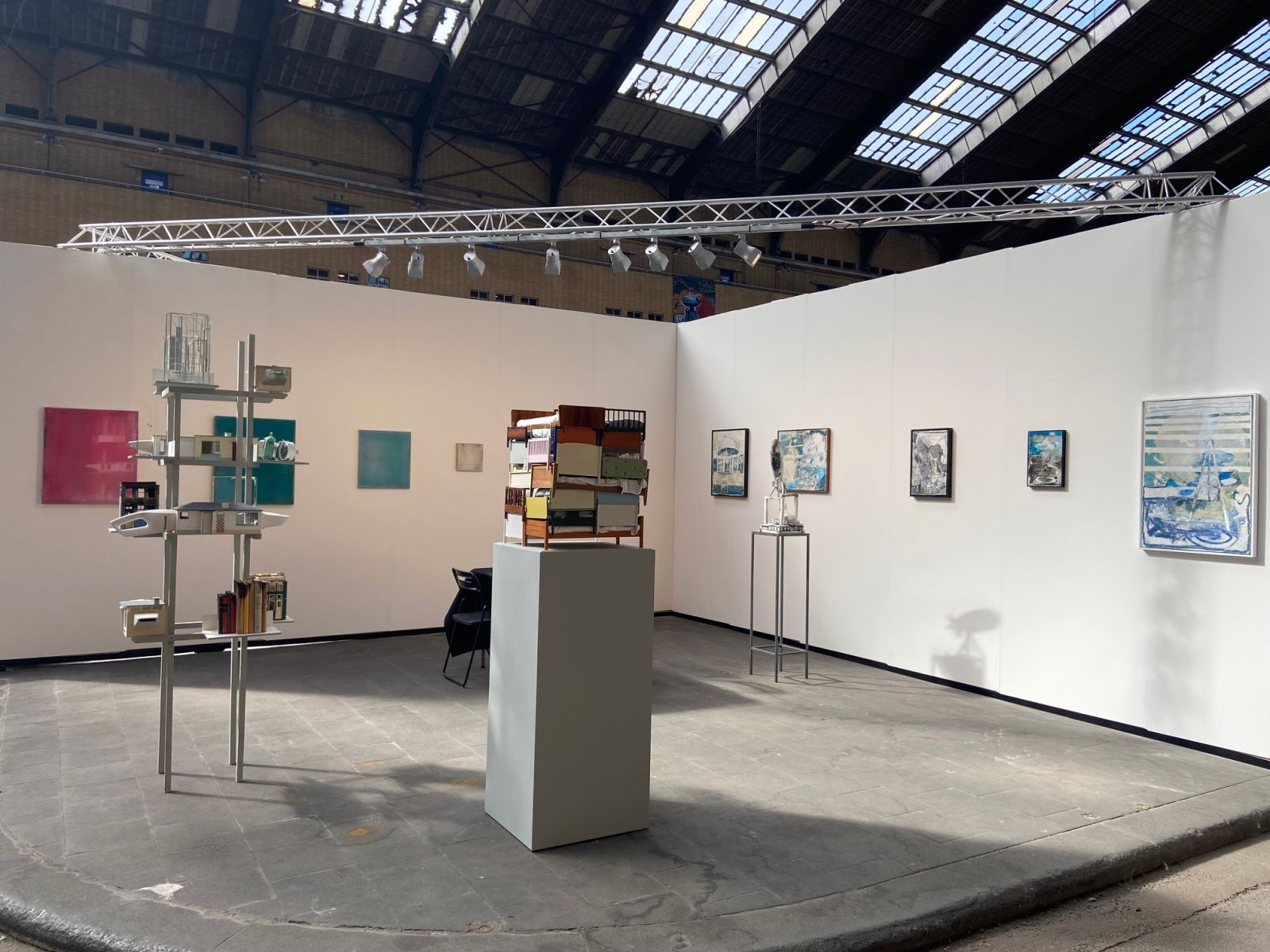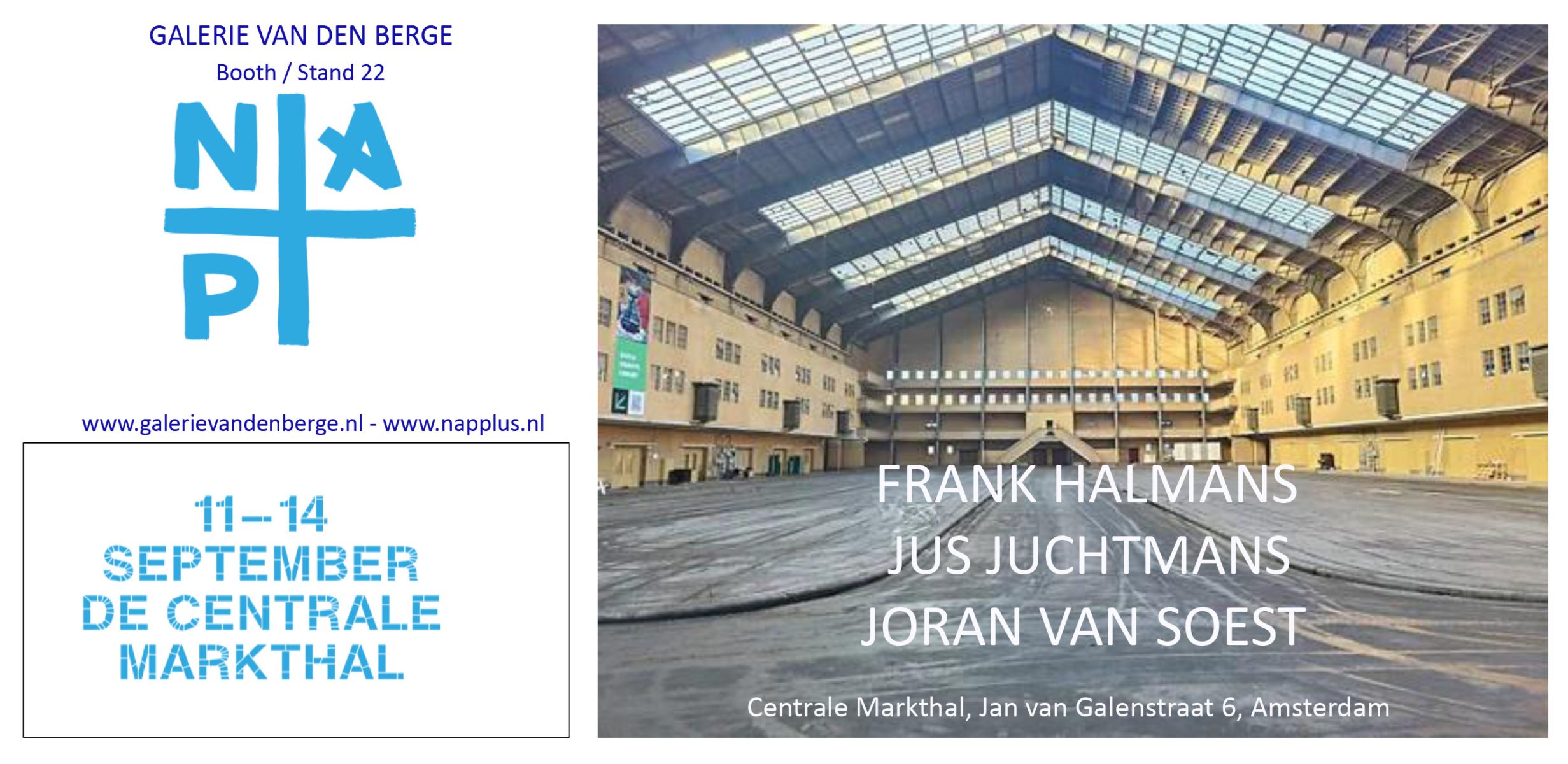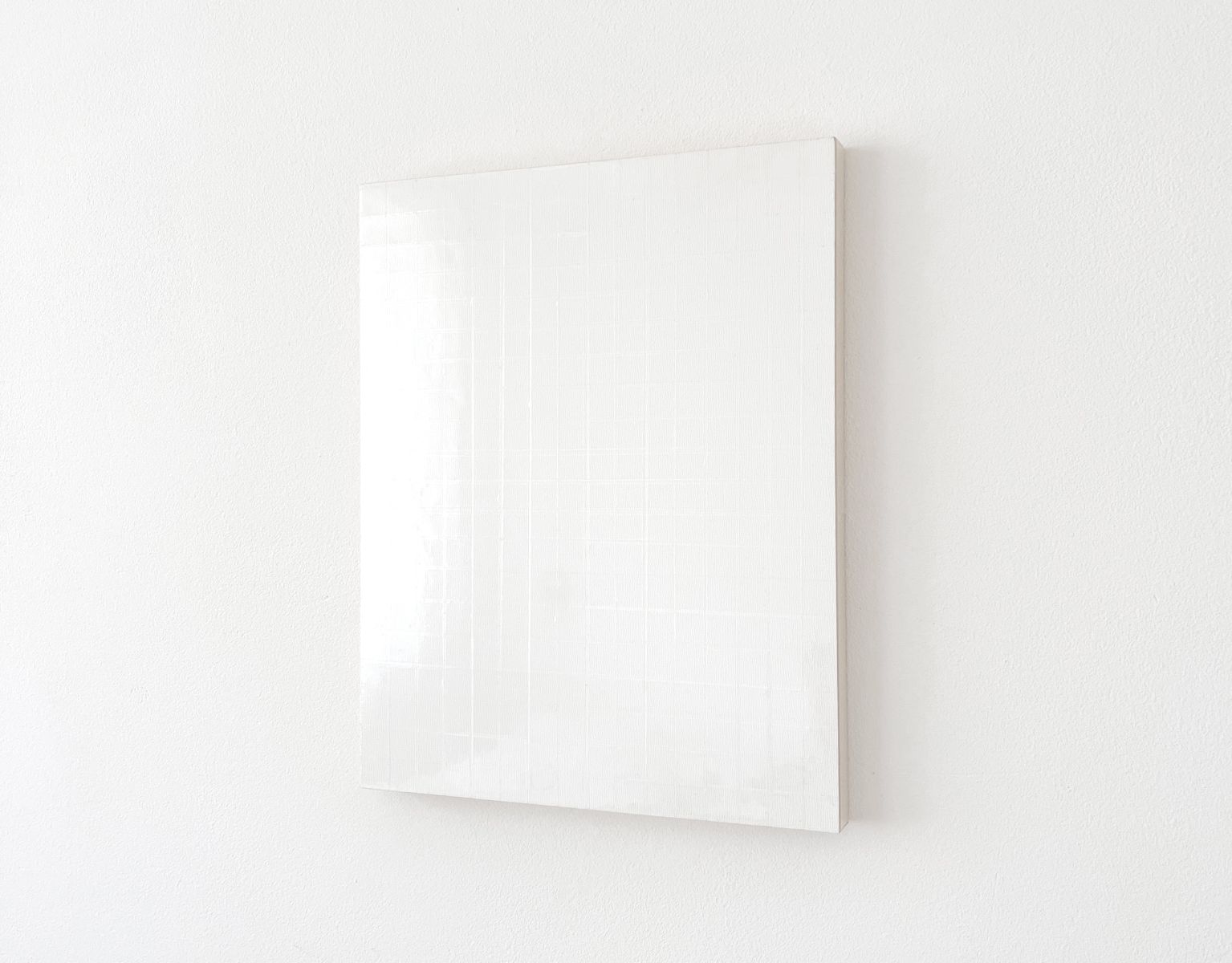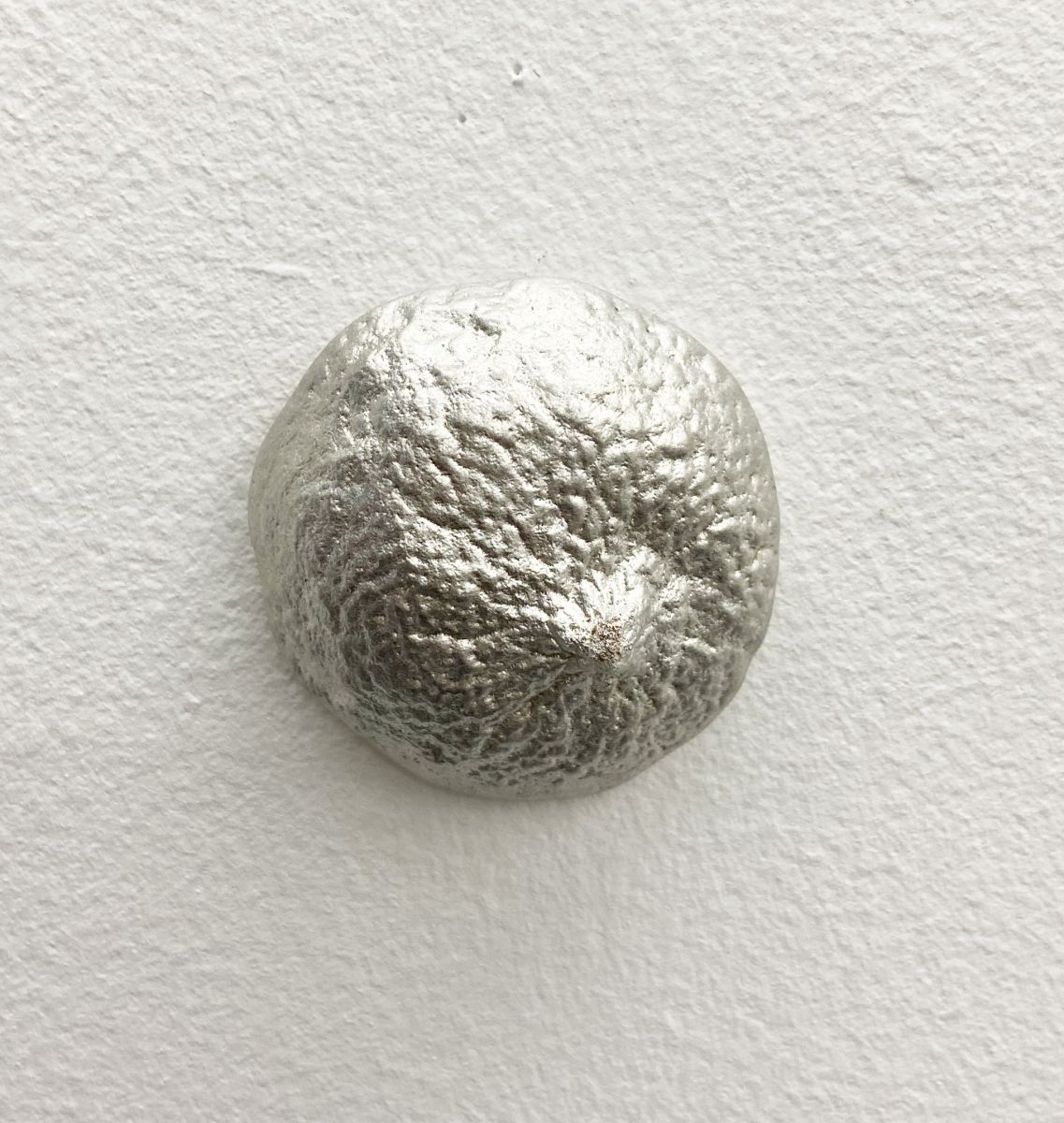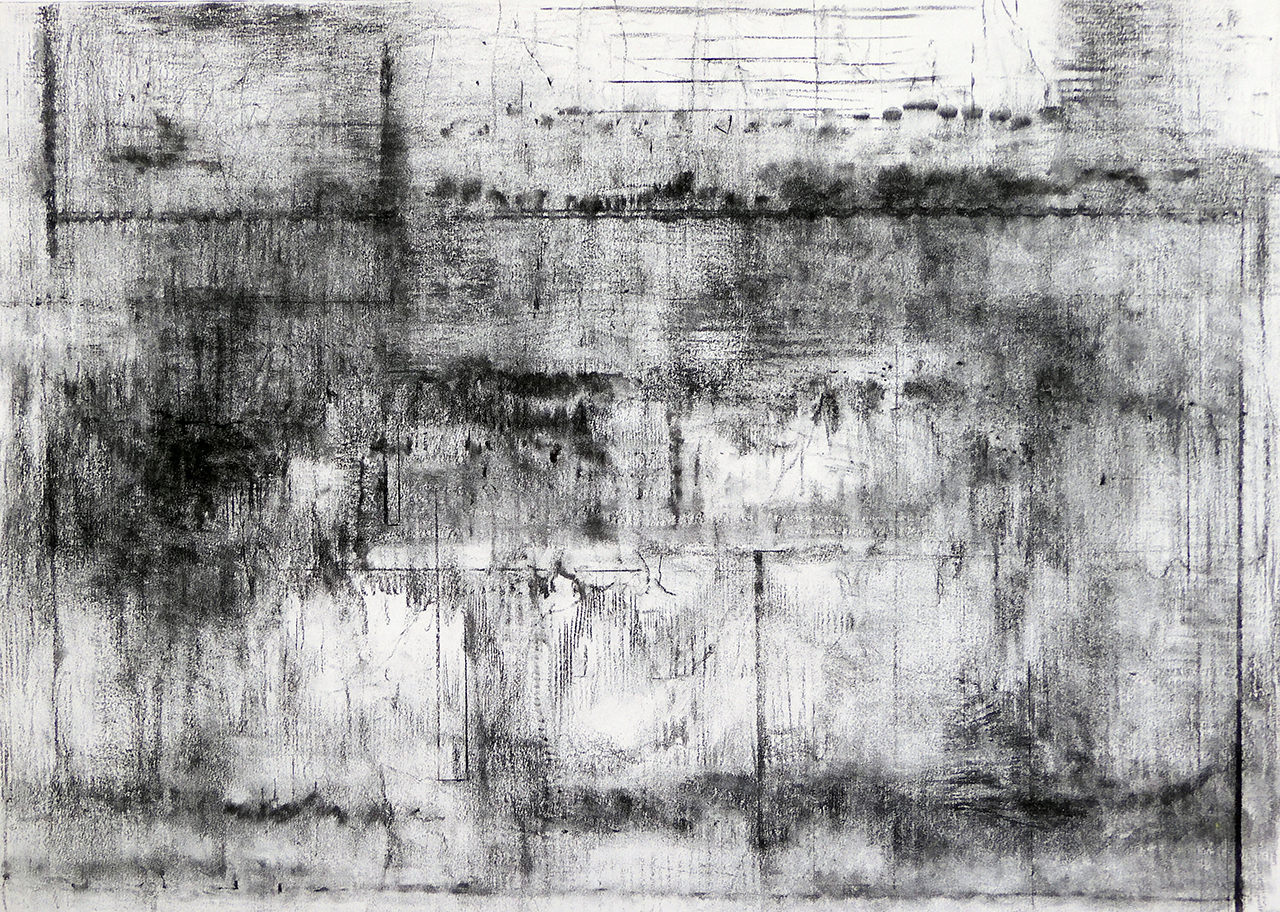2025
18/01 - 22/02 - 2025
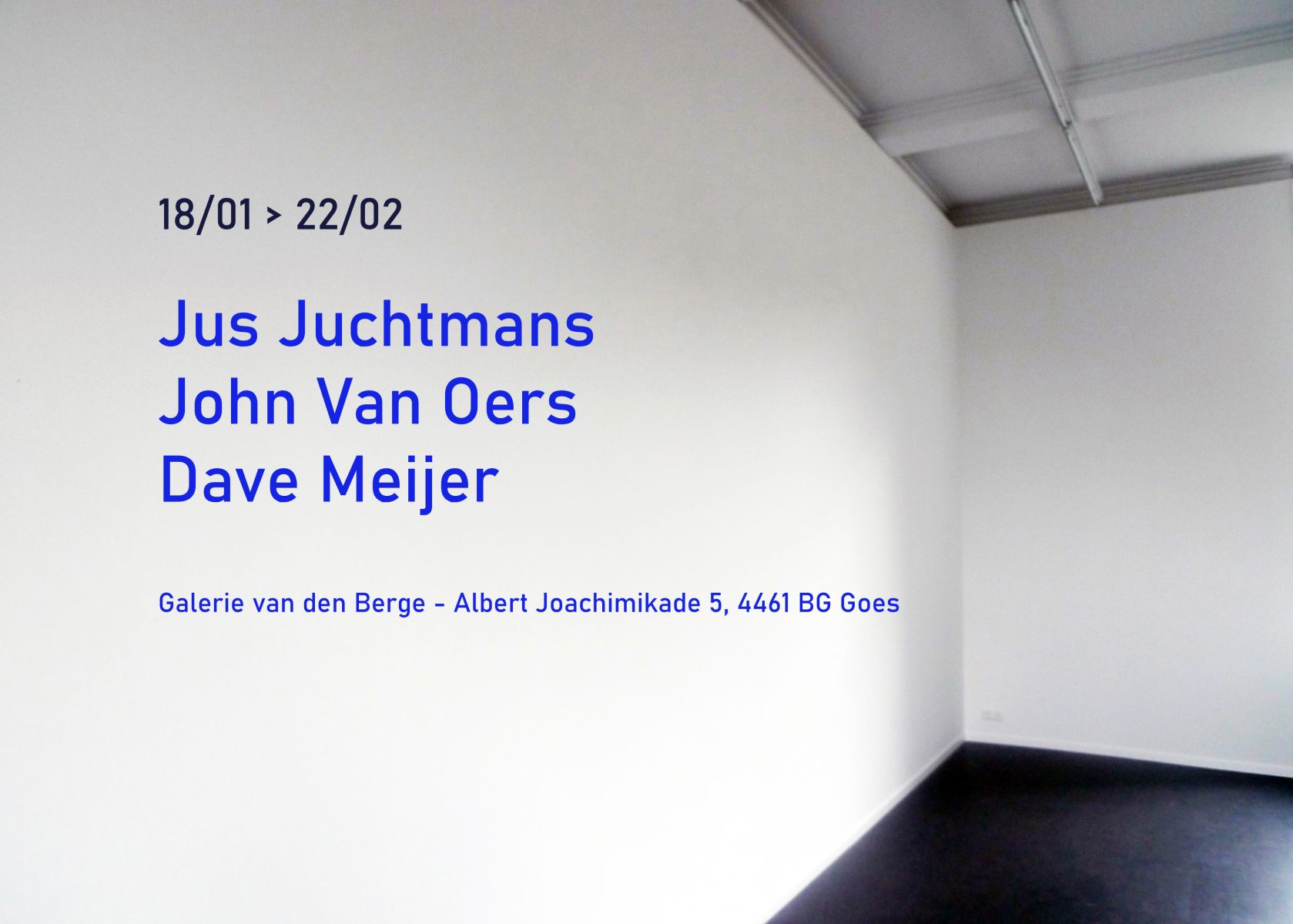
Lees hier het prachtige artikel dat Flor Linckens schreef voor Gallery Viewer Magazine
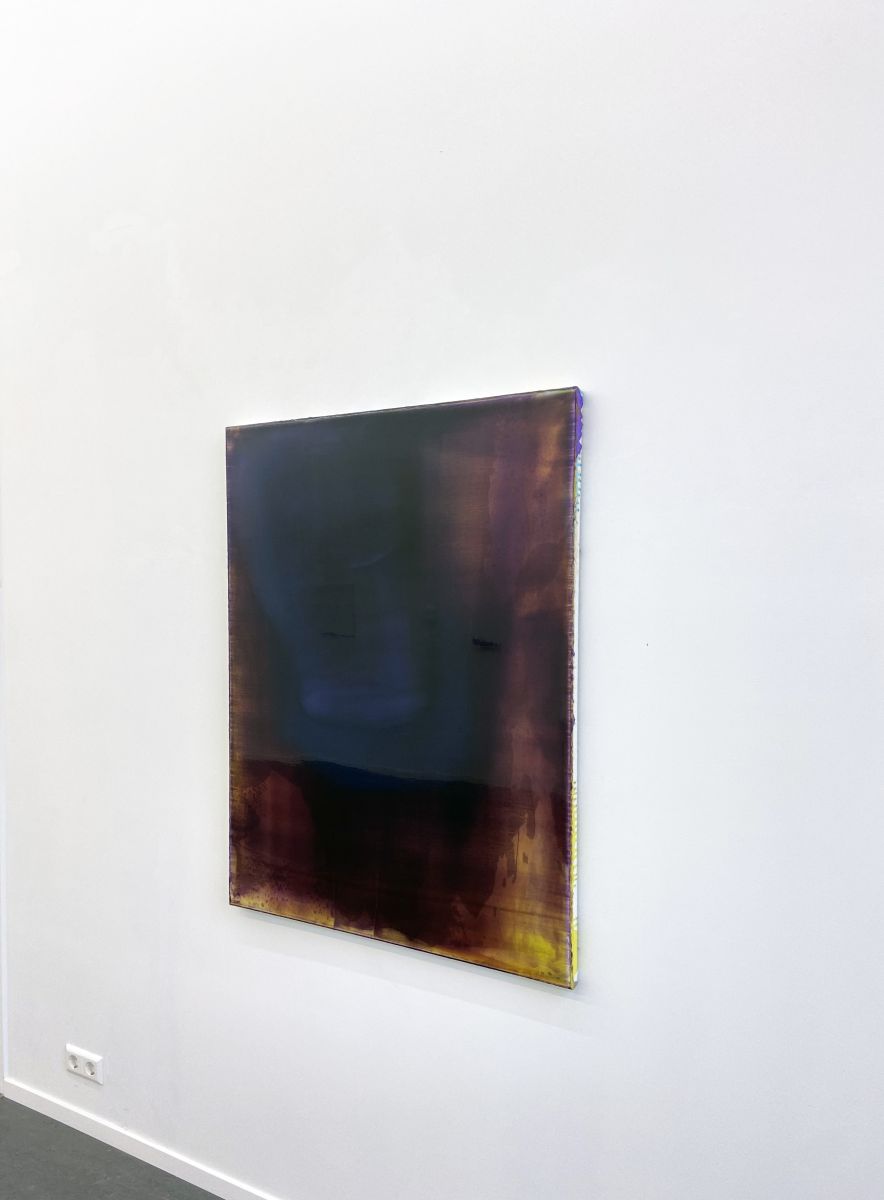
Jus Juchtmans
20241021 (2024)
Acrylic on linen, 120 x 90 cm
Jus Juchtmans
Schilderijen van Jus Juchtmans zijn vijvers waarin je jezelf weerspiegeld ziet. Je kunt erin verdrinken. Het licht zuigt je naar de diepte, naar de onderstromen, de draaikolken en alles wat onder het oppervlak huist, fonkelt en vibreert.
Wat is er op Juchtmans’ doeken te zien? Niets bijzonders eigenlijk. Vlekken, strepen, lijnen, vlakken, glinstering en kleur. Bij laag scherend licht zie je ook sleepsporen en krassen, minuscule belletjes, putjes soms. Het hoort erbij, want niets is perfect.
Wat valt er op Juchtmans’ schilderijen dan te zien? Alles. Door de reflectie van de werken worden de kamer, de omgeving, de lucht, de wolken, het licht, de verlichting en zelfs de toeschouwer mee in het werk gezogen. Elk moment is er iets anders te zien. Juchtmans’ werken zijn geen dode materie. Ze leven.
Werken van Juchtmans verbazen omdat Juchtmans in zijn lab, zijn atelier, elke dag nieuwe kleuren uitvindt. Ze verleiden door hun sensualiteit, maar ze zijn niet vrijblijvend, koket of oppervlakkig. Ze laten zich niet zo maar consumeren, ze lokken je uit je tent, ze nodigen je uit om te participeren. Werken van Juchtmans zijn helemaal af, maar niet afgesloten. Ze veranderen op elk moment, want ze zijn kleur en kleur is trilling, wemeling, versnelling. Schilderijen van Juchtmans functioneren als diamanten. Elk laag breekt het licht anders.
Elk soort licht creëert nieuwe waarnemingen.
(Korte samenvatting van een tekst van Peter Theunynck)
Paintings by Jus Juchtmans are ponds in which you see yourself reflected. You can drown in them. The light sucks you into the depths, the undercurrents, the whirlpools and everything that lurks, sparkles and vibrates under the surface.
What can be seen on Juchtmans' canvases? Nothing special really. Flecks, stripes, lines, planes, shimmer and colour. In low shearing light, you also see drag marks and scratches, tiny bubbles, pits sometimes. It's part of it, because nothing is perfect.
So what is there to see in Juchtmans' paintings? Everything. The reflection of the works draws the room, the surroundings, the sky, the clouds, the light, the lighting and even the viewer into the work. Every moment there is something different to see. Juchtmans' works are not dead matter. They are alive.
Juchtmans' works amaze because in his lab, his studio, Juchtmans invents new colours every day. They seduce by their sensuality, but they are not non-committal, coquettish or superficial. They don't allow themselves to be easily consumed, they lure you out of your tent, they invite you to participate. Works by Juchtmans are completely finished, but not closed. They change at any moment, because they are colour and colour is vibration, swarming, acceleration. Paintings by Juchtmans function like diamonds. Each layer refracts light differently.
Each kind of light creates new perceptions.
(Brief summary of a text by Peter Theunynck)

Jus Juchtmans
20240926 (2024)
Acrylic on linen, 50 x 45 cm
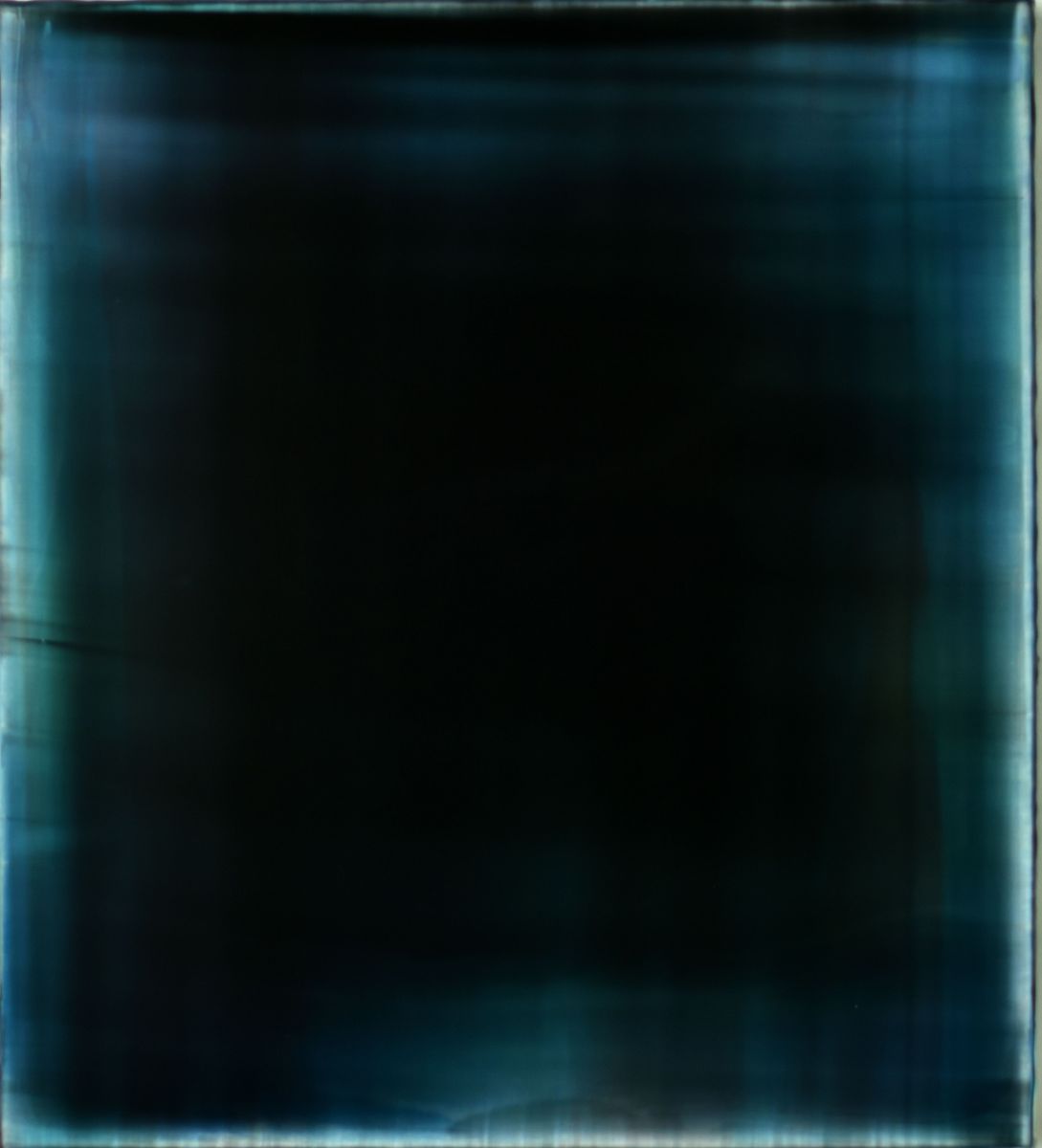
Jus Juchtmans (BE)
20230303 (2023)
Acrylic on linen, 50 x 45 cm
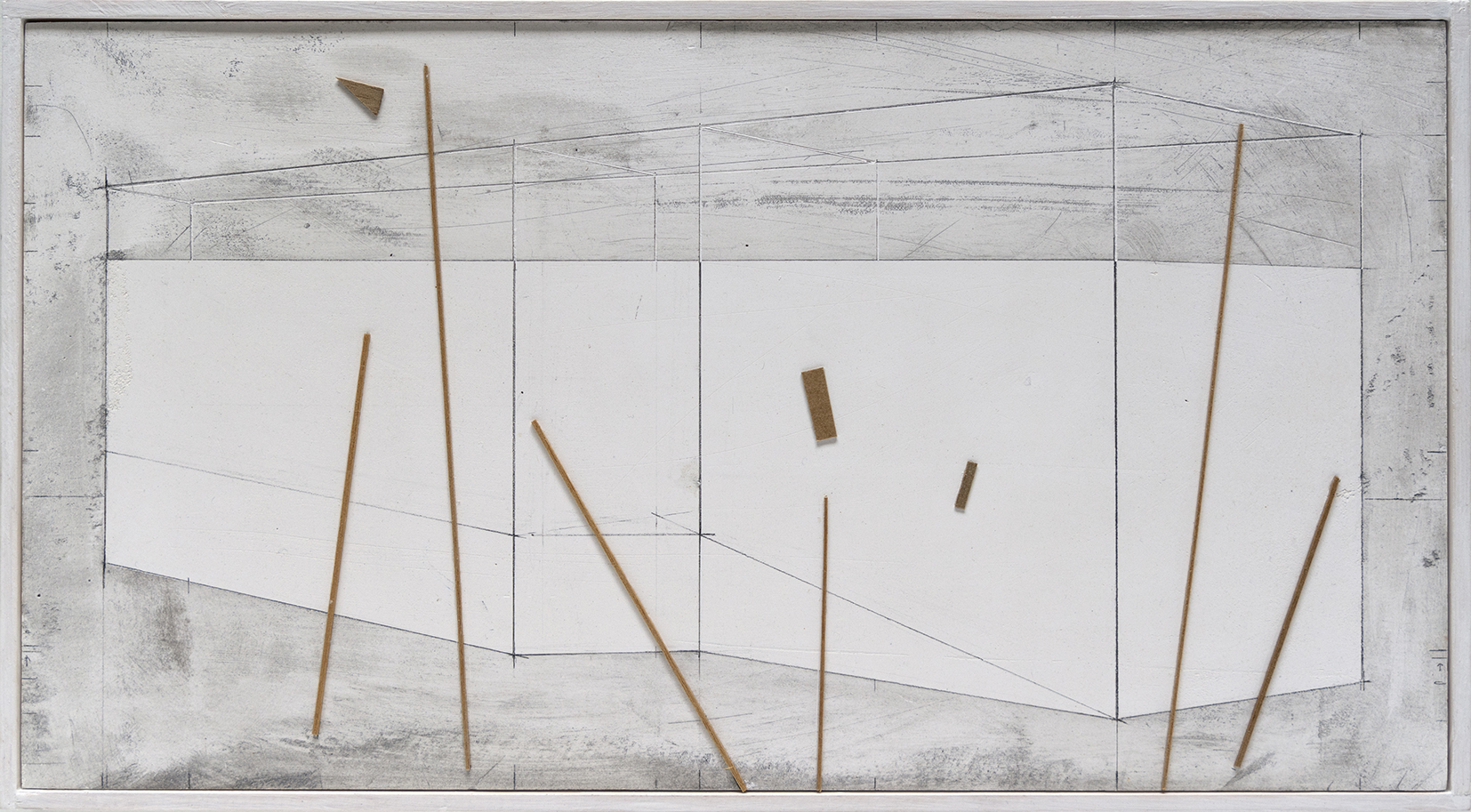
John Van Oers
‘Tres Banderitas' (2020)
Plaster, pencil, pigment, cardboard, wood, 30,2 x 16, 7 x 1,8 cm
John Van Oers
“Het uitgangspunt van mijn werk is altijd concreet en niet-abstract. Dit kan een anekdote uit mijn jeugd zijn, iets wat ik heb meegemaakt op reis, een observatie uit mijn directe omgeving, ... Ik ben echter voortdurend bezig met de vraag of een werk in wording niet te duidelijk is. Ik heb de neiging om te stileren, te abstraheren of figuratieve elementen weg te laten. In deze metamorfose transformeert het werk en wordt de persoonlijke oorsprong vervangen door een meer universele essentie. Wat ooit duidelijk was, wordt gehuld in mysterie. Kunst creëren is een dans van verbergen en onthullen, een delicaat samenspel van verbergen en onthullen.”
Als beeldhouwer ontwikkelde John Van Oers een heel eigen universum door middel van terugkerende vormen die hij afzwakt door ze te verkleinen: stadslandschappen, zwembaden, buiten- of binnenarchitectuur, tribunes, slagbomen, ramen, trappen, enz. Men herkent onmiddellijk zijn “touch” wanneer men een van zijn sculpturen tegenkomt.
Deze bijzonderheid is niet alleen te danken aan de herhaling van de vormen die hij creëert en aan de buitengewone zuiverheid die ze kenmerkt, maar ook aan de geest die ze bewoont en die ze uiterst levendig maakt, zeer aanwezig in de ruimte. Zijn sculpturen zijn bewoond: door gedachten, door reflectie, door een verlangen om in minimale vormen iets te materialiseren dat als de ziel van plaatsen zou zijn, de essentie van dingen.
“The starting point of my work is always concrete and non-abstract. This can be an anecdote from my youth, something I experienced while traveling, an observation from my immediate surroundings, ... I am, however, constantly occupied with the question of whether a work in the making is not too clear. I tend to stylize, abstract, or strip away figurative elements. In this metamorphosis, the work transforms, and the personal origin is replaced by a more universal essence. What once was clear becomes shrouded in mystery. Creating art is a dance of concealment and revelation, a delicate interplay of hiding and unveiling.”
As a sculptor, John Van Oers developed a very distinctive universe through recurring forms that he declines by miniaturizing them: urban landscapes, swimming pools, exterior or interior architecture, grandstands, barriers, windows, stairs, etc. One immediately identifies his "touch" when coming across one of his sculptures.
This singularity is due not only to the recurrence of these forms that he creates and to the extraordinary purity that characterizes them, but also to the spirit that inhabits them and that makes them extremely alive, very present in space. His sculptures are inhabited: by thought, by a reflection, by a desire to materialize in minimal forms something that would be like the soul of places, the essence of things.
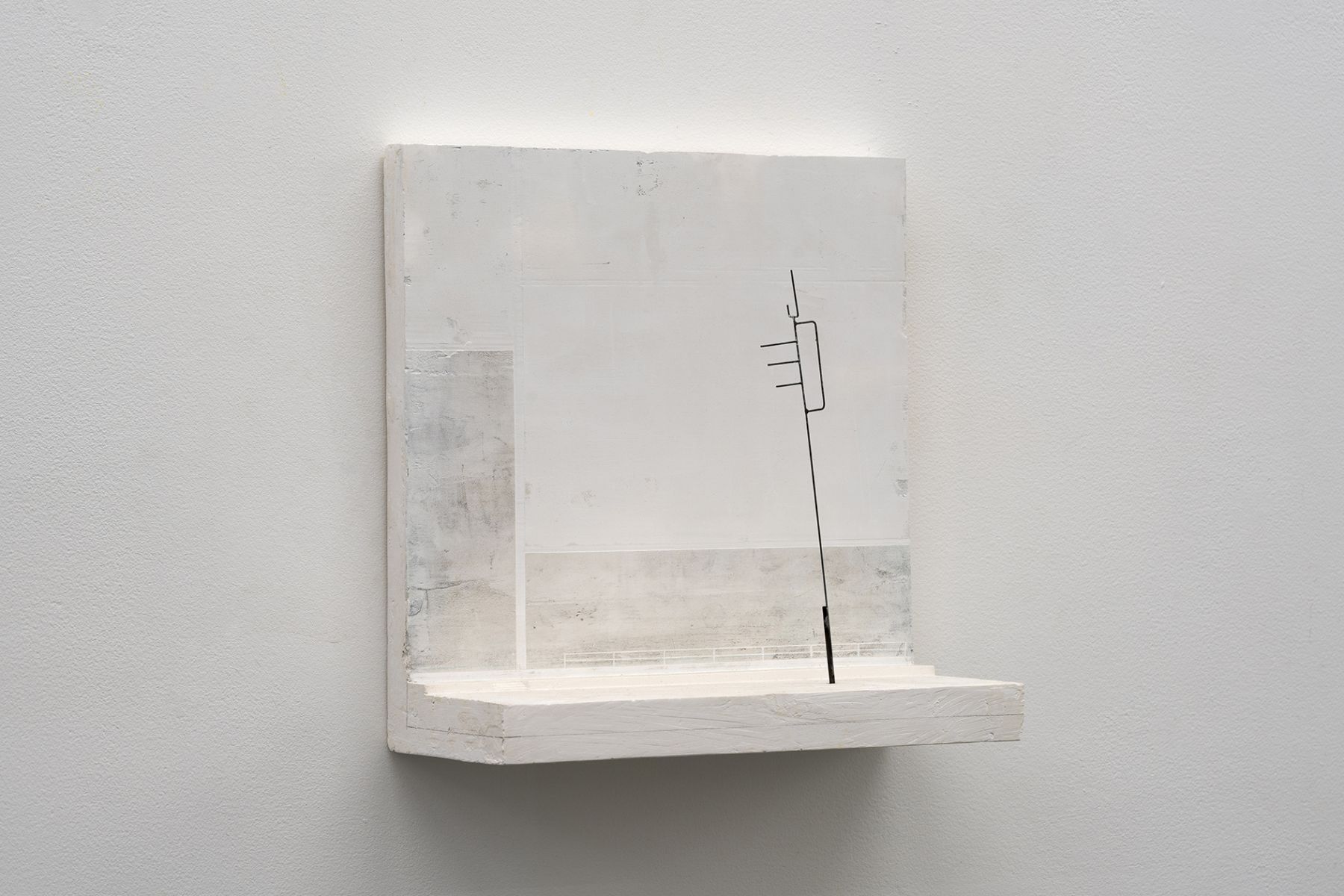
John Van Oers (BE)
Sea Wall Antenna (2024)
Plaster, steel, pigment, pencil, 20,8 x 20,3 x 8,7 cm
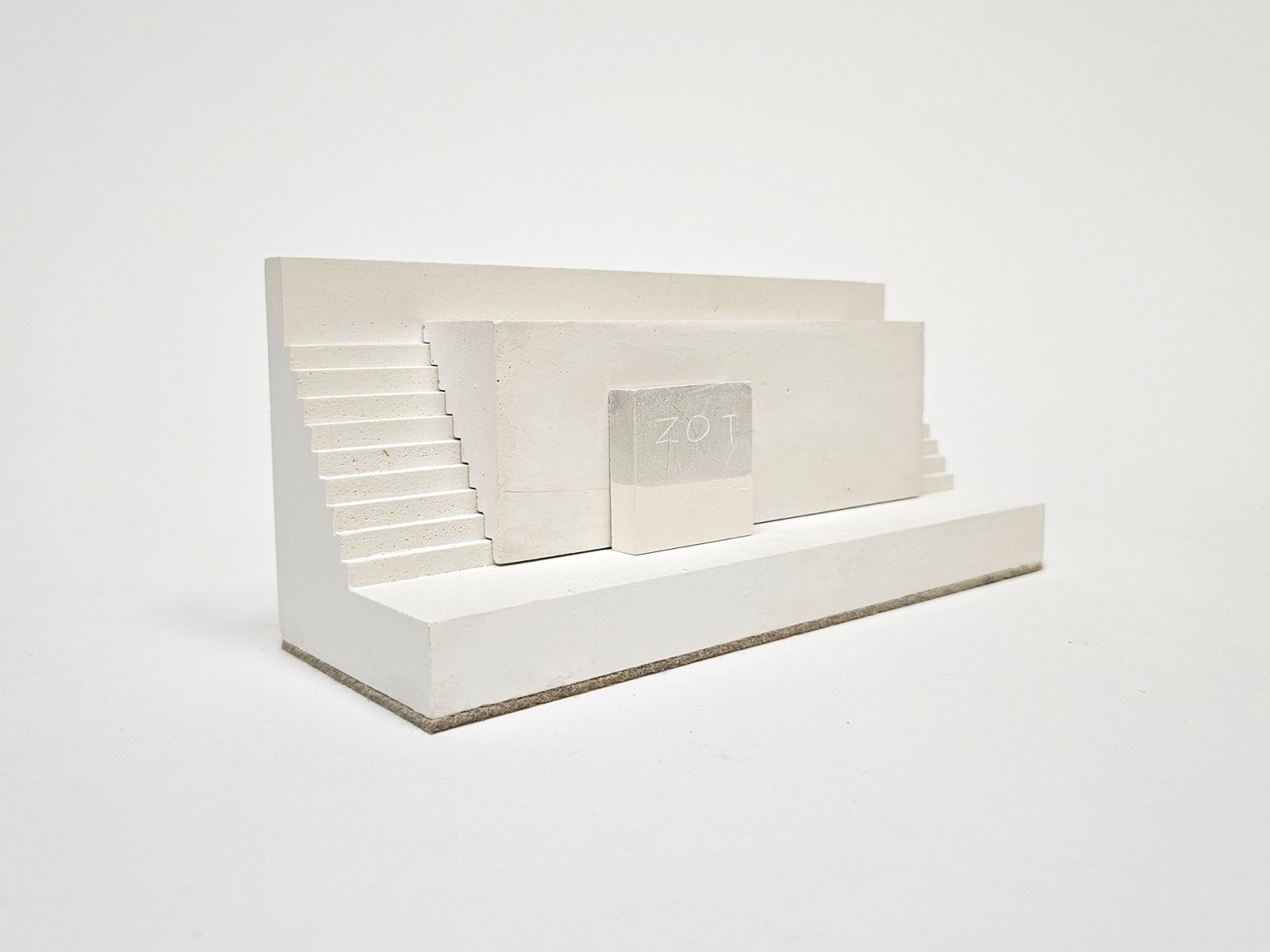
John Van Oers (BE)
‘ZOT’ (2022)
Porcelain plaster, pigment, felt, 21 x 8.8 x 7 cm
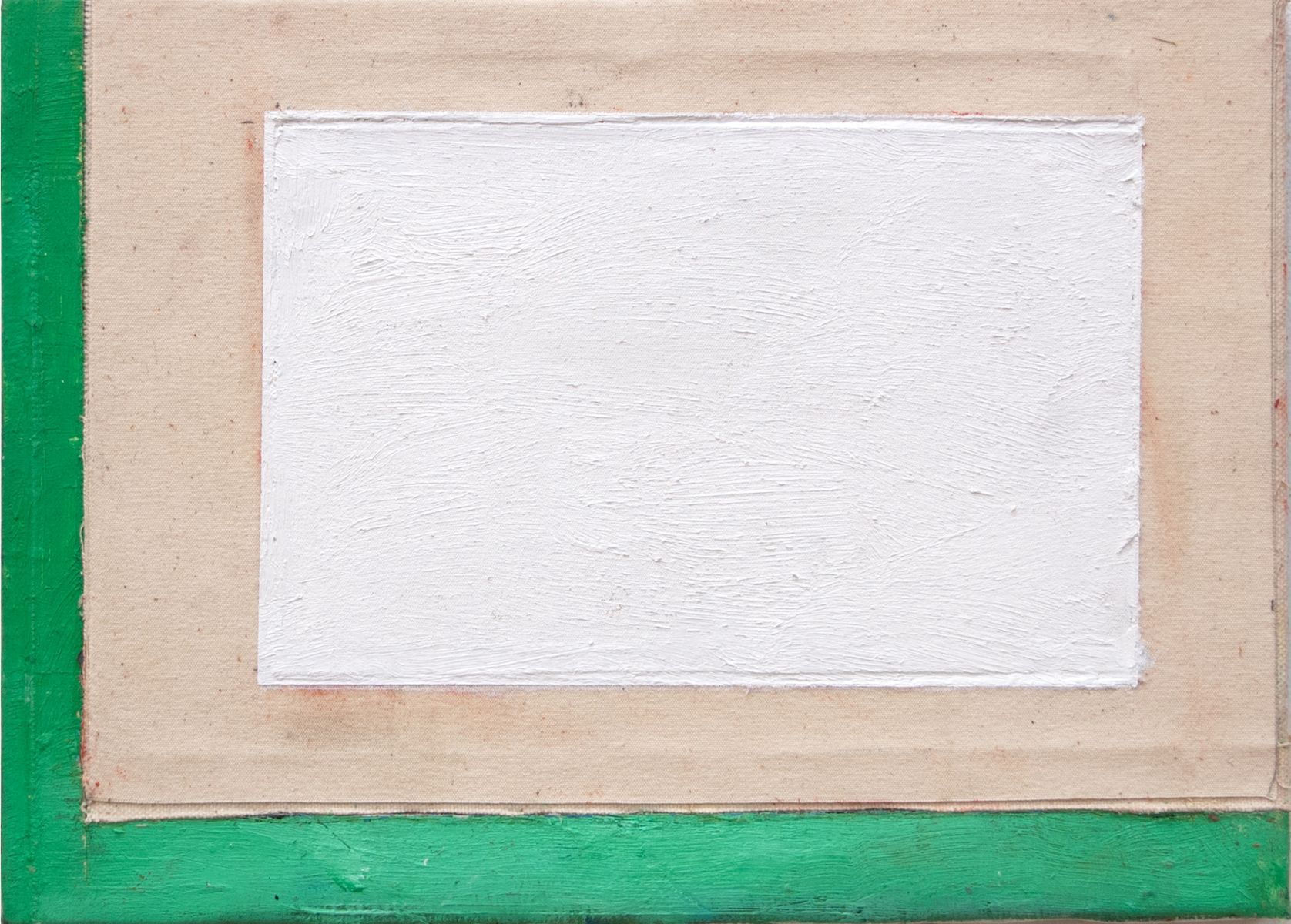
Dave Meijer
Ateliervenster / Studio Window [04] - 2024
Oil on canvas/panel, 21 x 30 cm
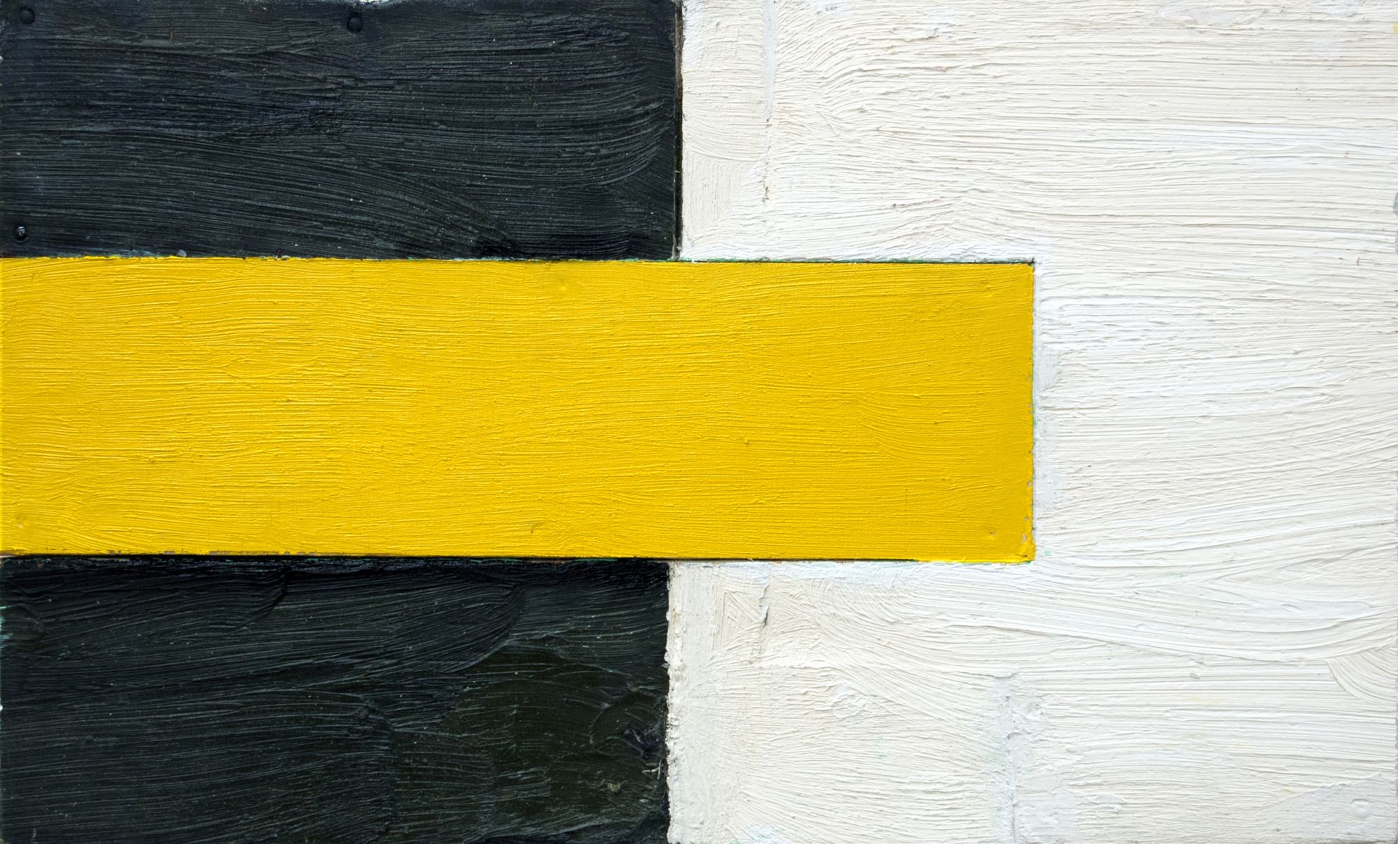
Dave Meijer (NL)
‘Ateliervenster / Studio Window’ (2024) - L 36
Oil on panel, 21,5 x 35,5 cm
sold
Dave Meijer
Dave Meijer behoort tot het soort schilders voor wie het schilderen een moeizaam proces is. Langzaam wordt het beeld aan de materie ontworsteld. Steeds moet de schilder corrigeren, bijwerken, verf weghalen, wegschuren, nieuwe lagen verf opbrengen. Meer dan eens gebeurt het dat het schilderij uiteindelijk vast komt te zitten in de verf. De openheid is verloren gegaan en het proces begint van voren af aan.
Eindeloos zoekt hij naar het ultieme beeld, waarin hij nastreeft dat het schilderij alleen in zichzelf waar is en gerechtvaardigd wordt in verhouding tot de dagelijkse omgeving waarin hij verblijft en zijn werk tot stand komt.
Al zijn werken maken de indruk te bestaan uit imperfecties, uit het tegen elkaar aan wrikken van ongelijke delen, zoals het land, de lucht en het water ongelijksoortig zijn en met elkaar wringen. Het schilderij mag nooit helemaal af zijn. Het moet nog iets in het vooruitzicht stellen.
Dit streven vinden wij terug in zowel de autonome schilderijen als in omvangrijke serie achtige reeksen. Elke reeks vormt één onlosmakelijk geheel waarbij ieder deel een vaste plaats in het grid heeft en waarbij de delen met elkaar de werking van een monochroom schilderij vormen: Het kader wordt denkbeeldig doorbroken tot in het oneindige.
Dave Meijer belongs to the kind of painters for whom painting is a laborious process. Slowly, the image is wrested from the material. The painter constantly has to correct, touch up, remove paint, sand away, apply new layers of paint. More than once it happens that the painting eventually gets stuck in the paint. The openness is lost and the process starts from scratch.
Endlessly, he searches for the ultimate image, in which he strives for the painting to be true only in itself and justified in relation to the everyday environment in which he resides and his work is created.
All his works give the impression of being made up of imperfections, of prying unequal parts against each other, just as the land, the sky and the water are disparate and twist with each other. The painting should never be completely finished. It must still have something ahead of it.
We find this aspiration in both autonomous paintings and extensive series-like sequences. Each series forms one inseparable whole where each part has a fixed place in the grid and where the parts together form the effect of a monochrome painting: The frame is imaginary broken into infinity.
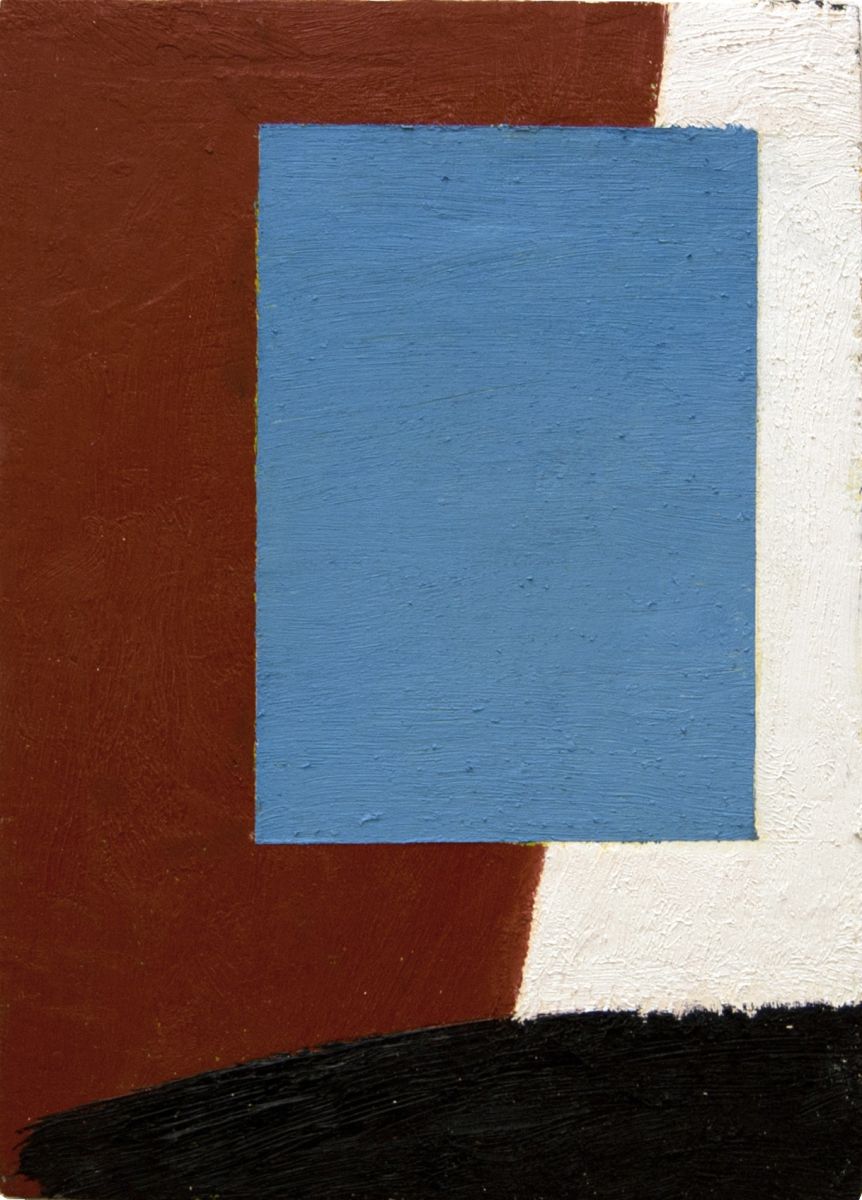
Dave Meijer
‘Ateliervenster’ / ‘Studio Window’ L 34 (2024)
Oil on panel, 30 x 21.5 cm
01/03 > 12/04
Een tentoonstelling met de 10 vrouwelijke kunstenaars van de galerie
Groupshow with our 10 female artists
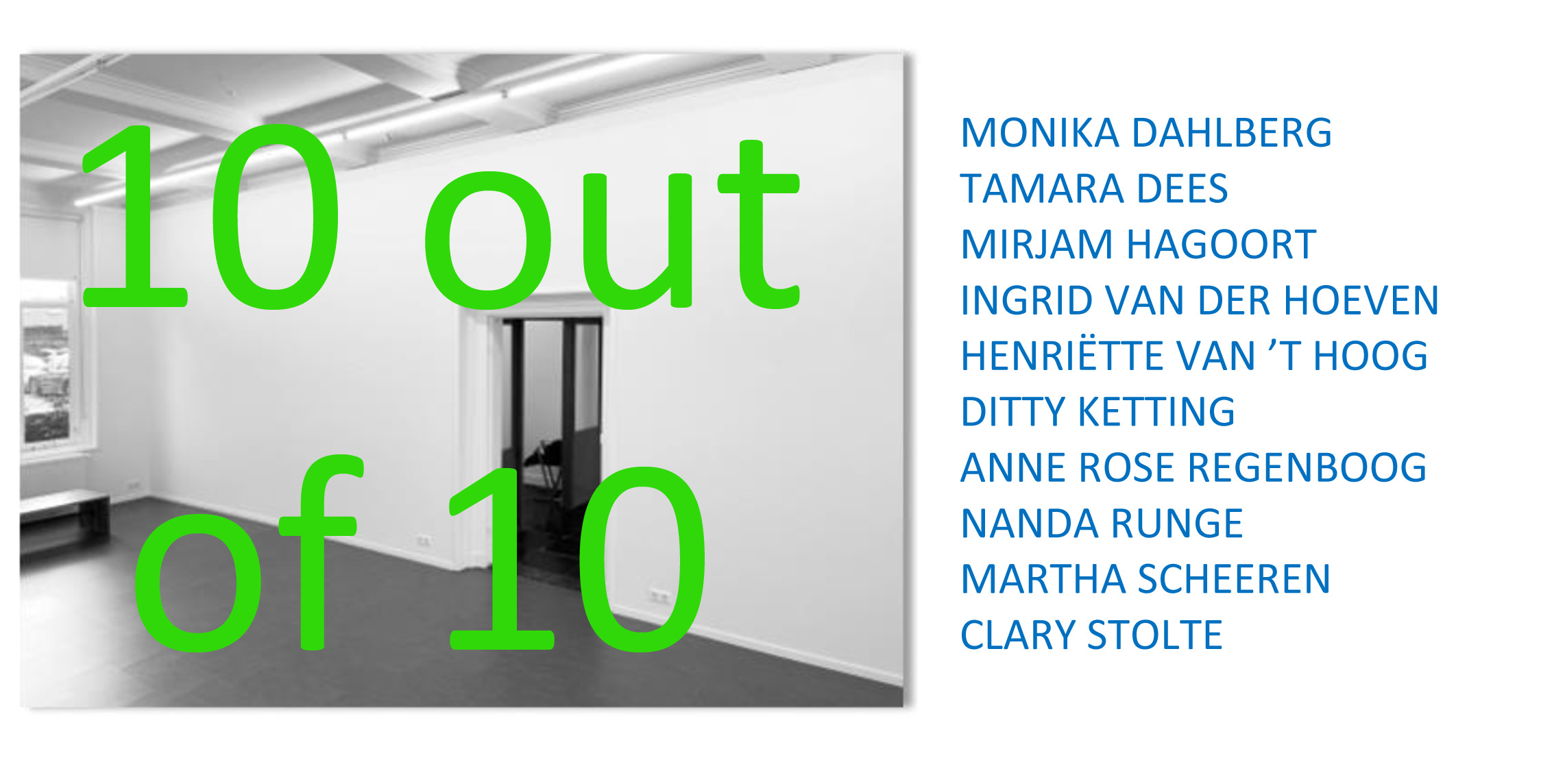
%20overfzicht%20zaal%2002%20adj.jpg)
Ditty Ketting, Anne Rose Regenboog, HenrIëtte van 't Hoog
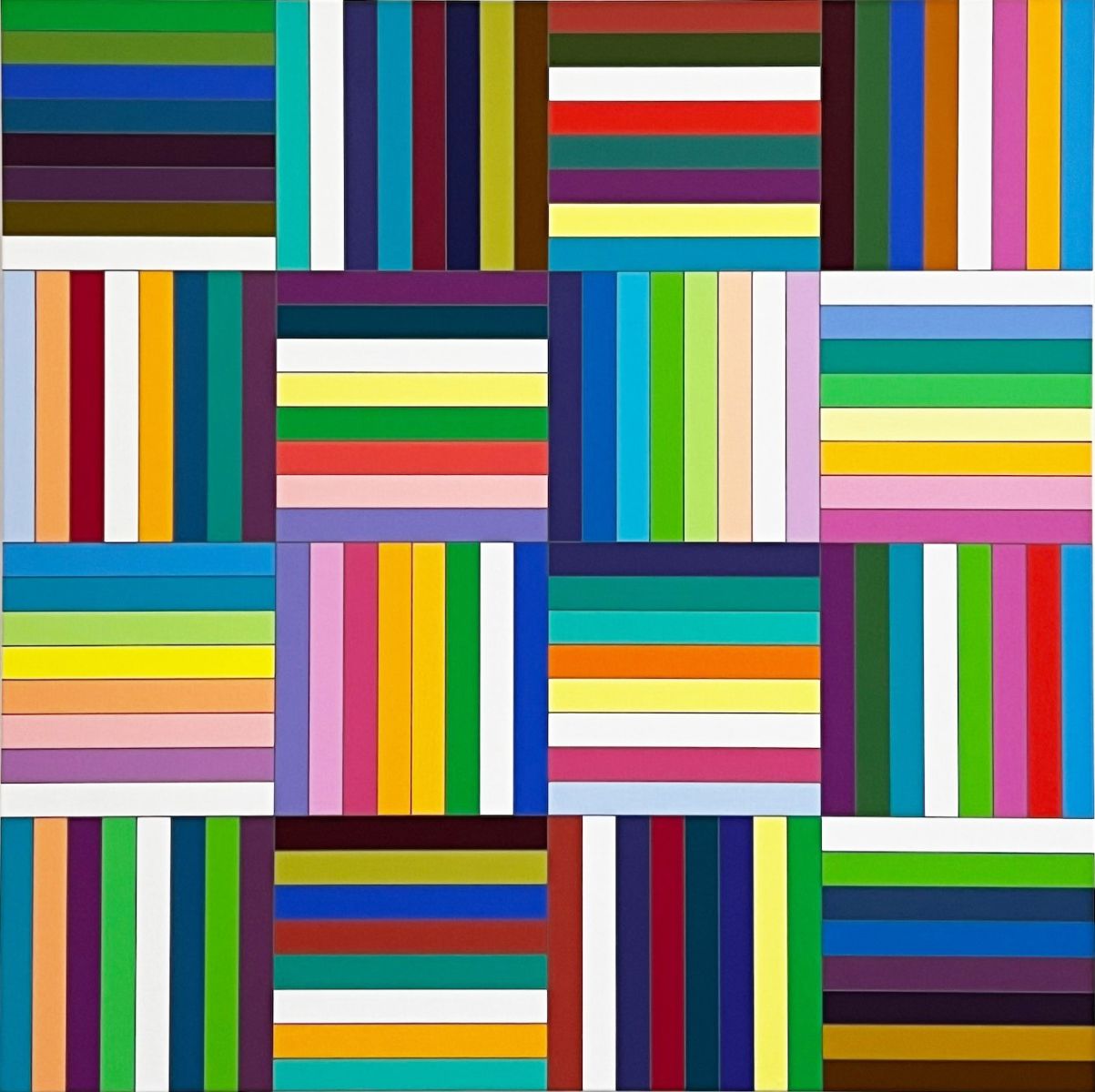
Ditty Ketting
Untitled # 540 (2024)
Acrylic on linen, 96 x 96 cm
Photo: Bob Goedewaagen
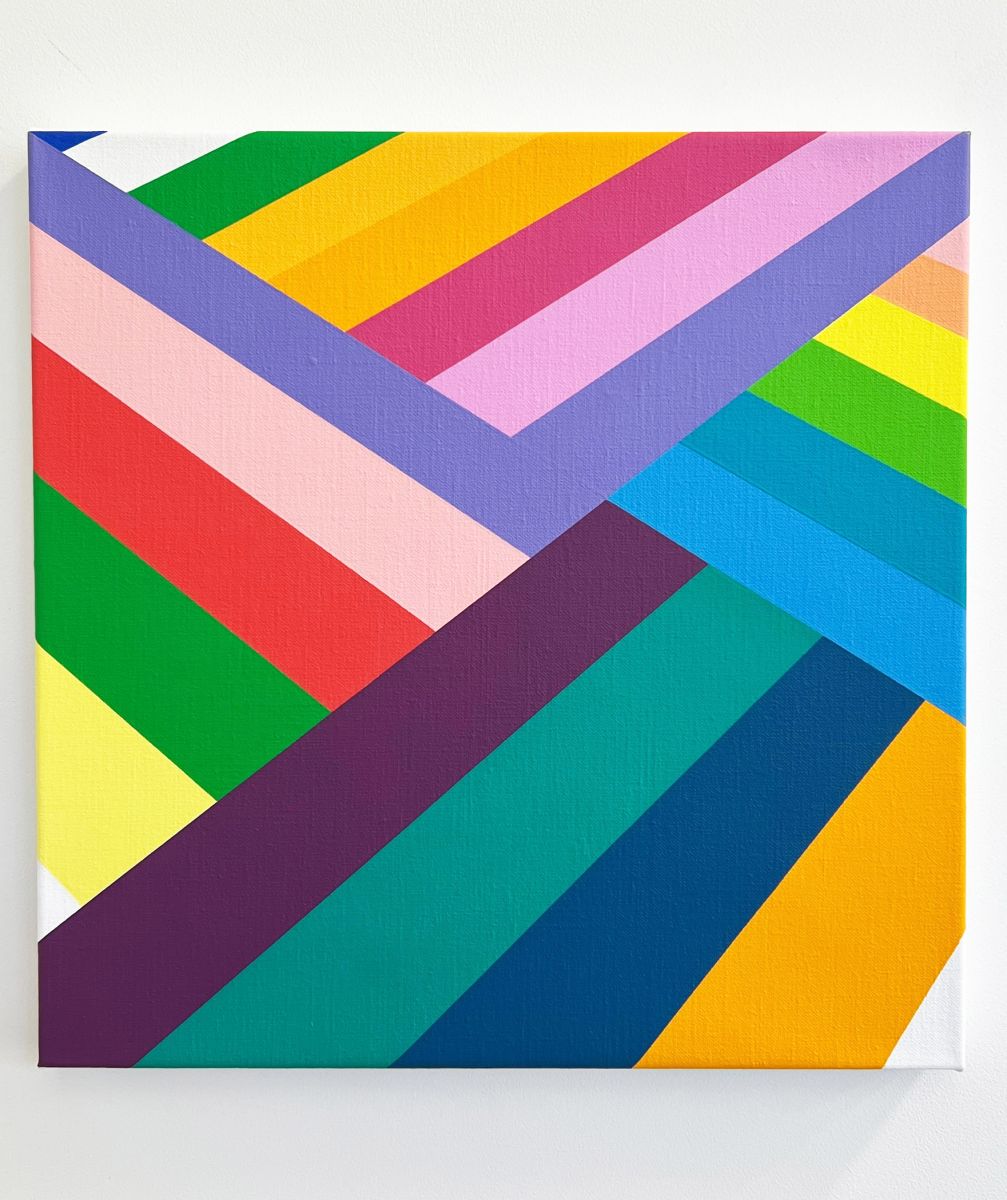
Ditty Ketting
Untitled # 541 (2025)
Acrylic on linen, 36 x 36 cm
Photo: Bob Goedewaagen
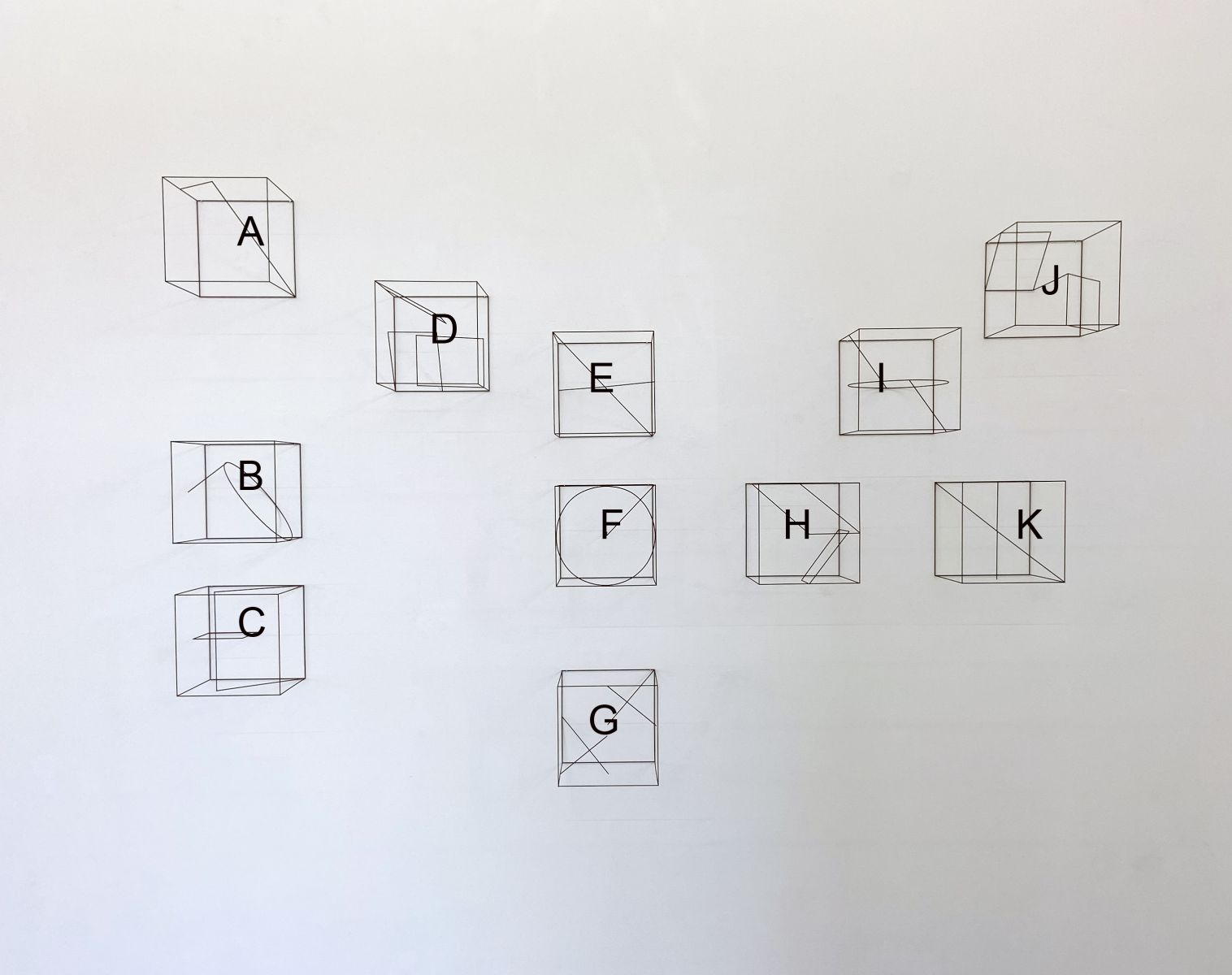
.jpg)
Overview Cube objects Anne Rose Regenboog ‘Cube (F)’ 2025
Steel wire, rustpatina, 20 x 20 x 20 cm
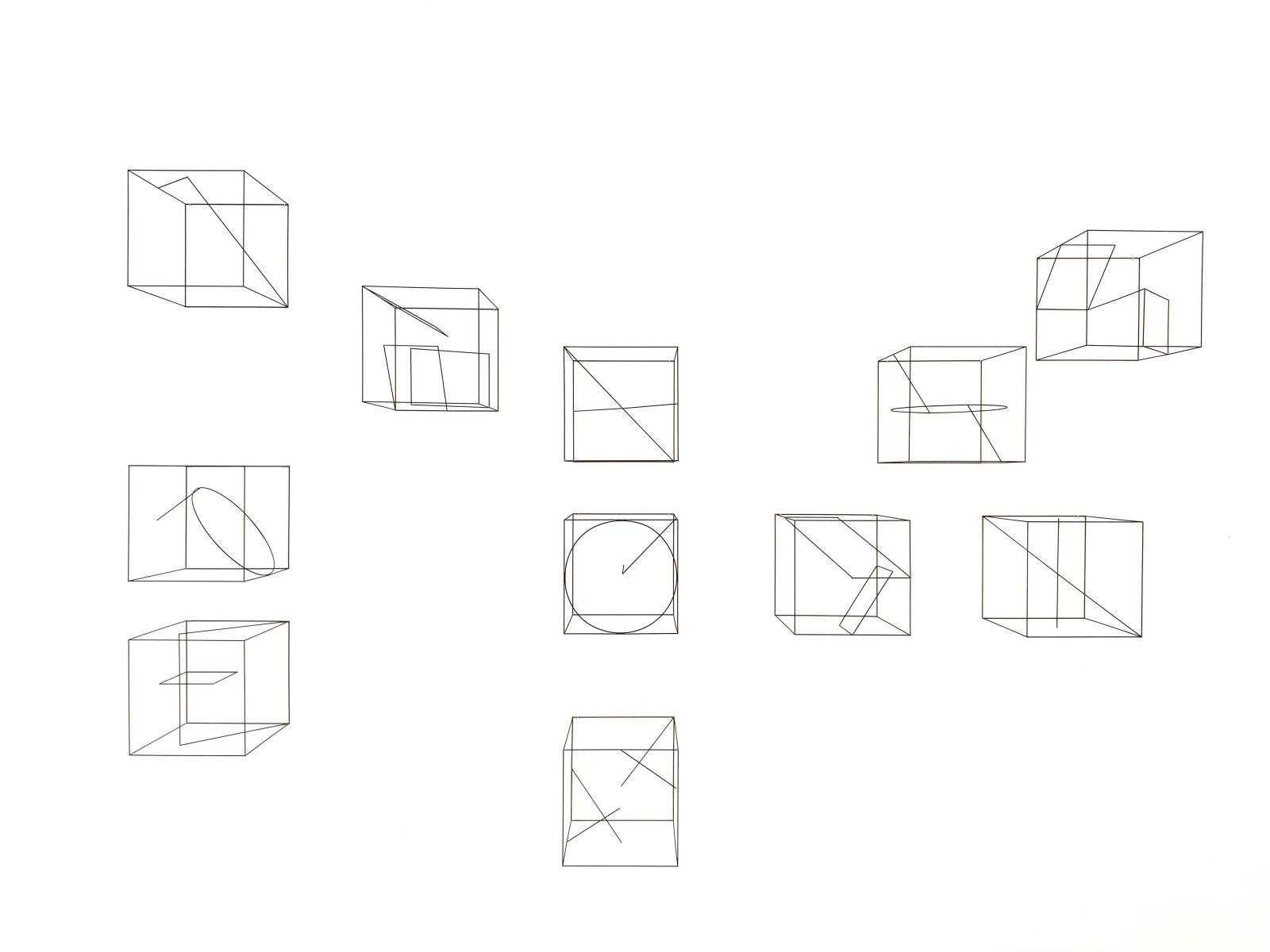
Gallery wall with 11 Cubes
A cube wall object can be hung on any rib allowing many views
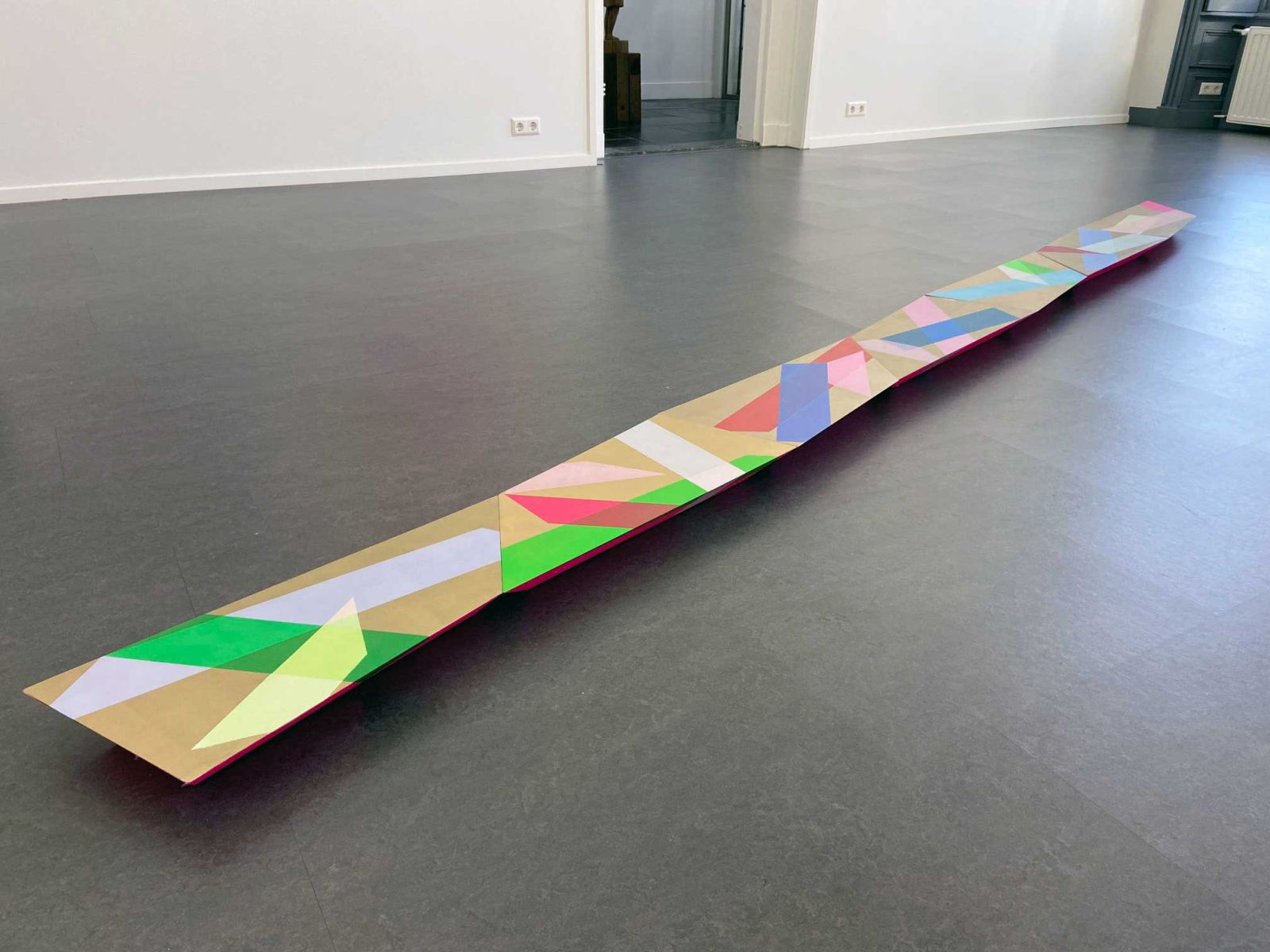
Henriëtte van 't Hoog
‘Airstrips I’ (2017)
Acrylic on MDF (7 parts) 440 x 27 x 7 cm
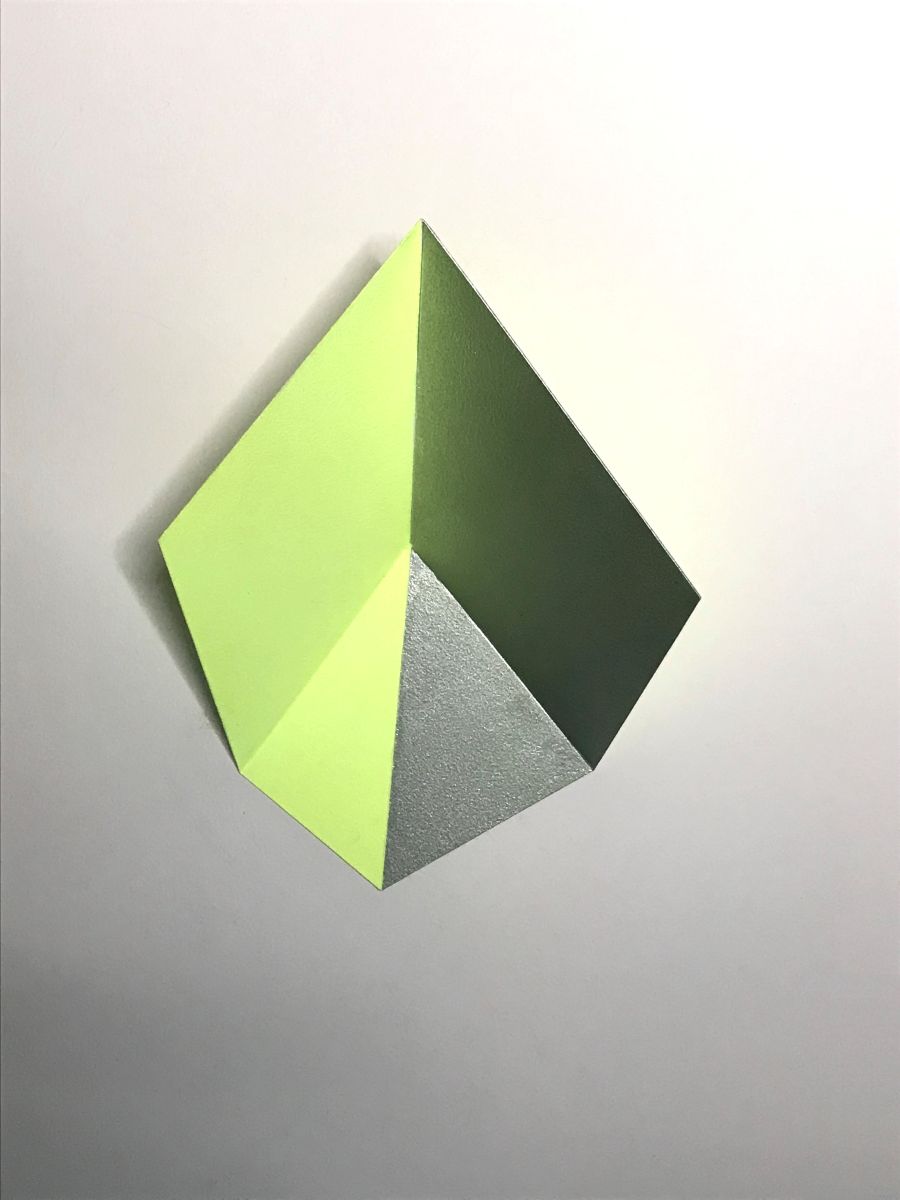
Henriëtte van 't Hoog
‘Foton Diagonal’ (2017)
Acrylic on zinc, 26 x 18 x 11 cm
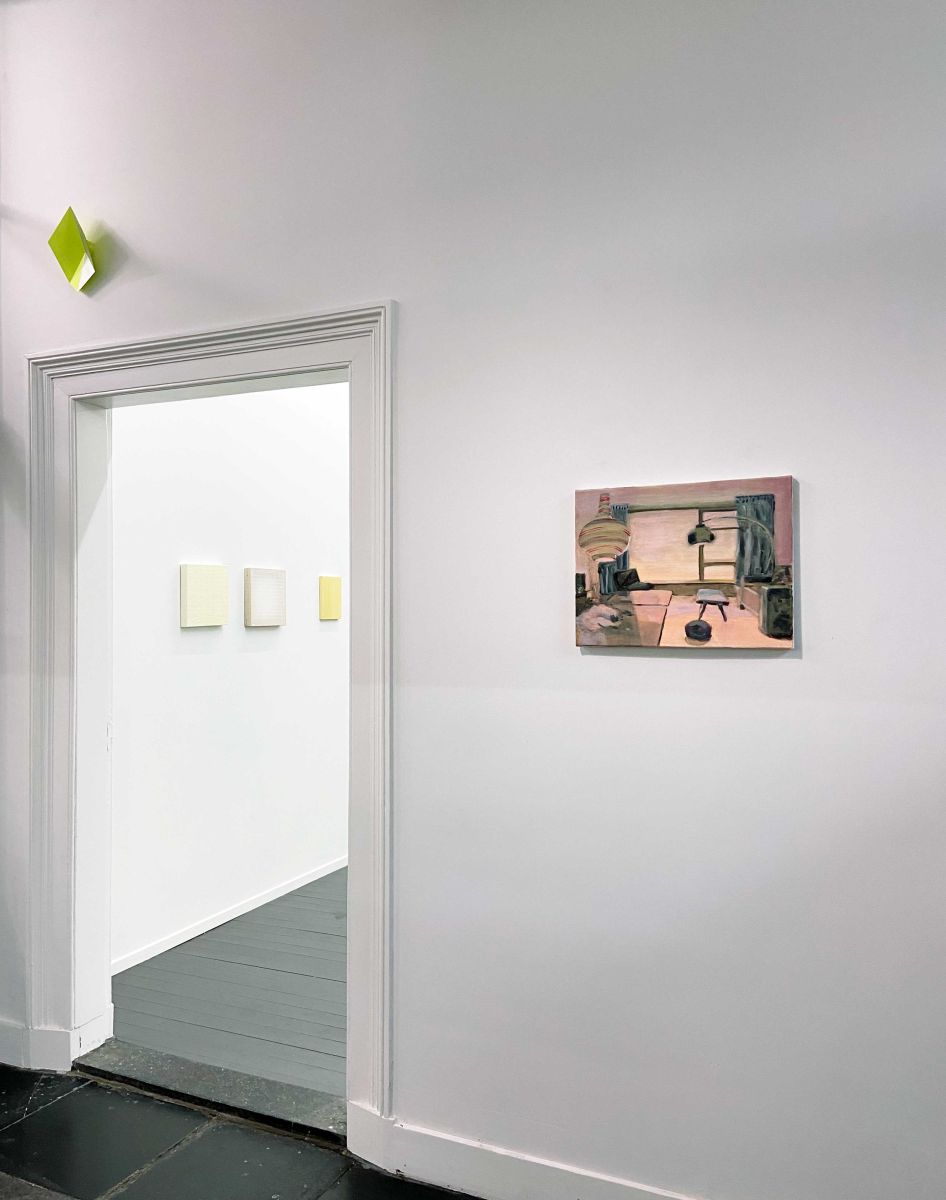
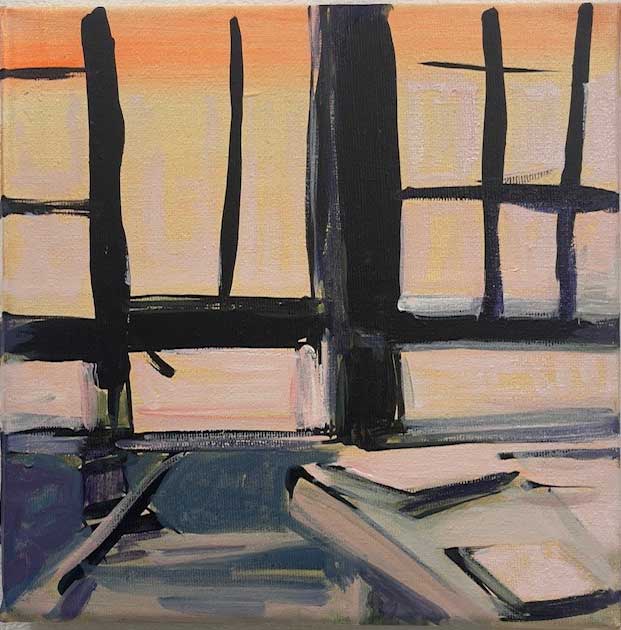
L: Gallery corridor
R: Nanda Runge, ‘De zon en ik’ ('The sun and I') - 2025, oil and acrylic on linen, 20 x 20 cm

Nanda Runge
‘De flat # 3' (2025)
Oil and acrylic on linen, 40 x 50 cm
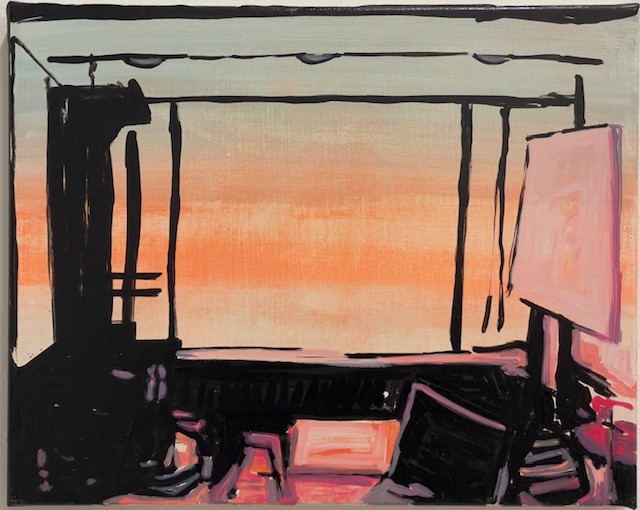
Nanda Runge
‘Misschien kan ik er aan wennen' (2025)
Oil and acrylic on linen, 40 x 50 cm
%20martha%20monika-experiment.jpg)
Monika Dahlberg, Martha Scheeren
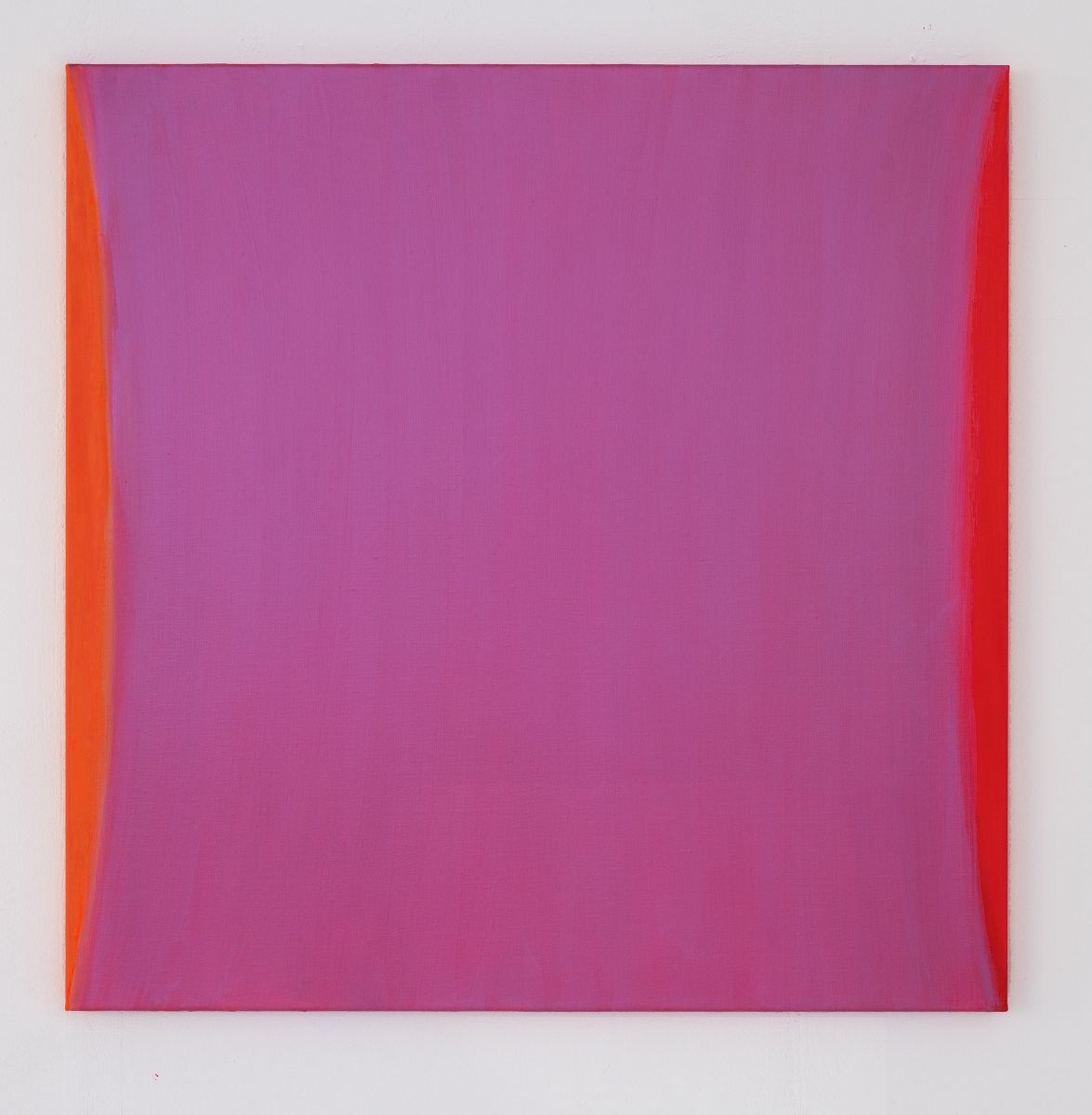
Martha Scheeren
Untitled (2024)
Acrylic on linen, 80 x 80 cm
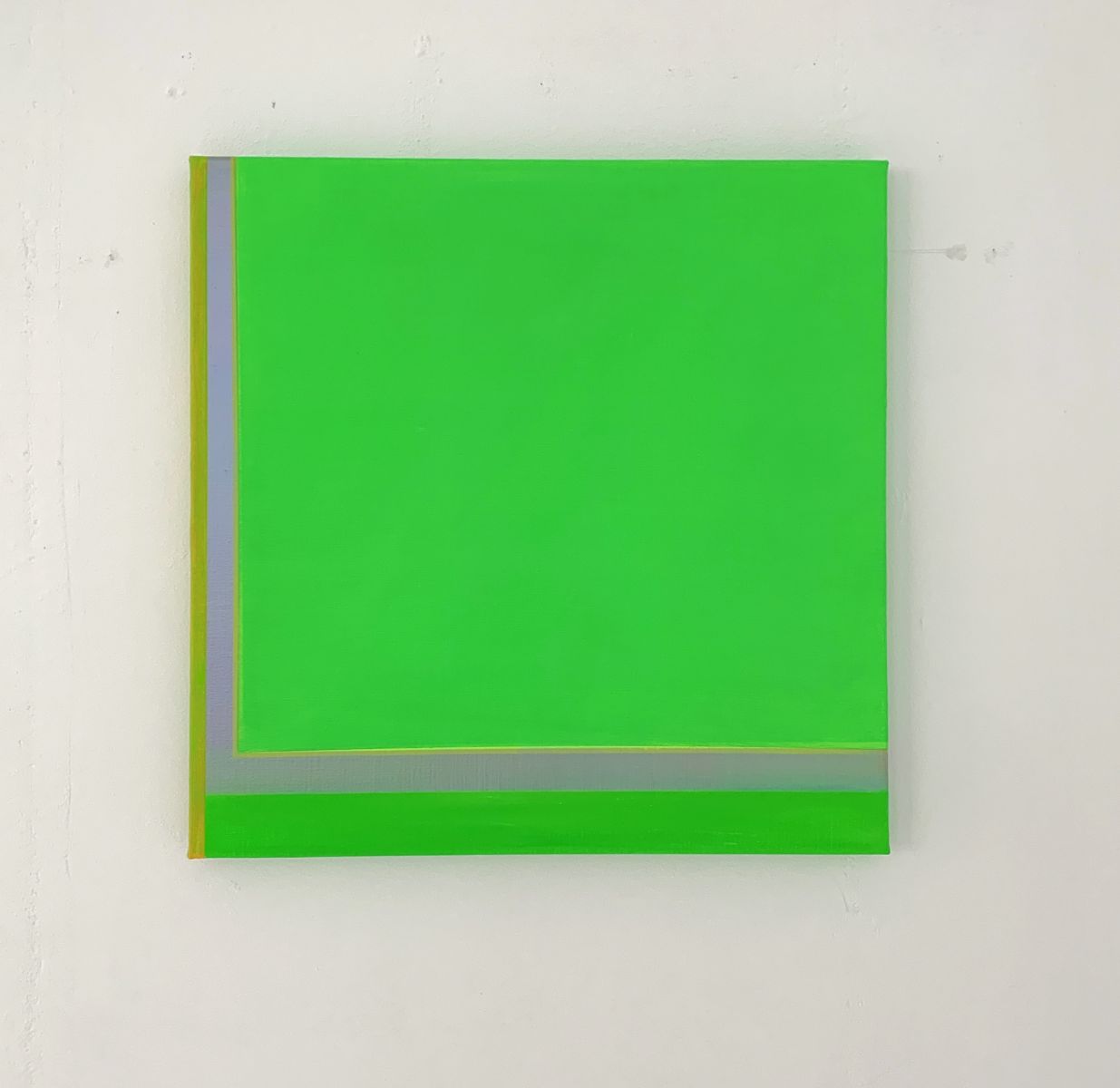
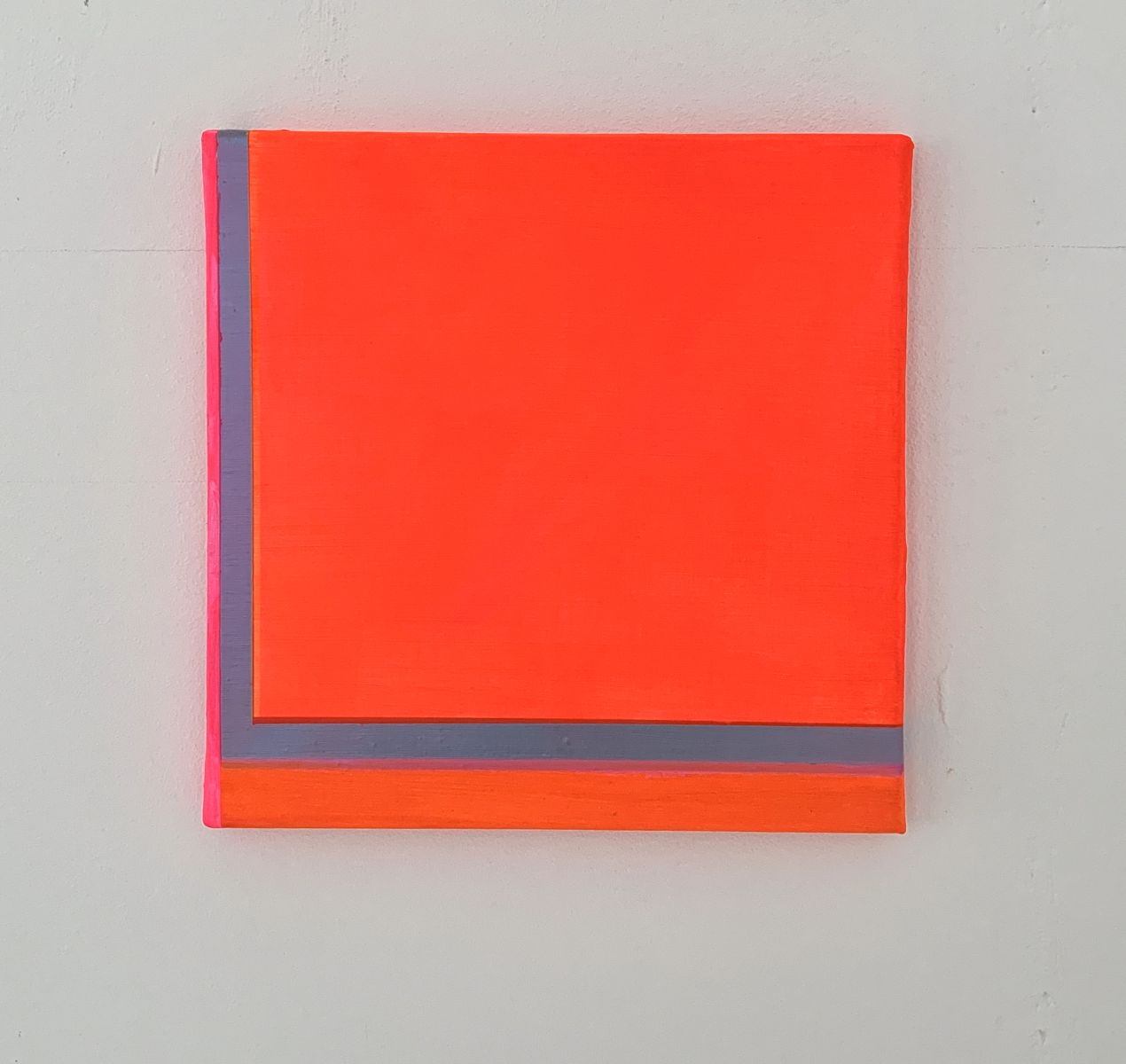
Martha Scheeren Martha Scheeren
Untitled (35) 2025 Untitled (37) 2024
Acrylic on linen, 50 x 50 cm Acrylic on linen, 30 x 30 cm
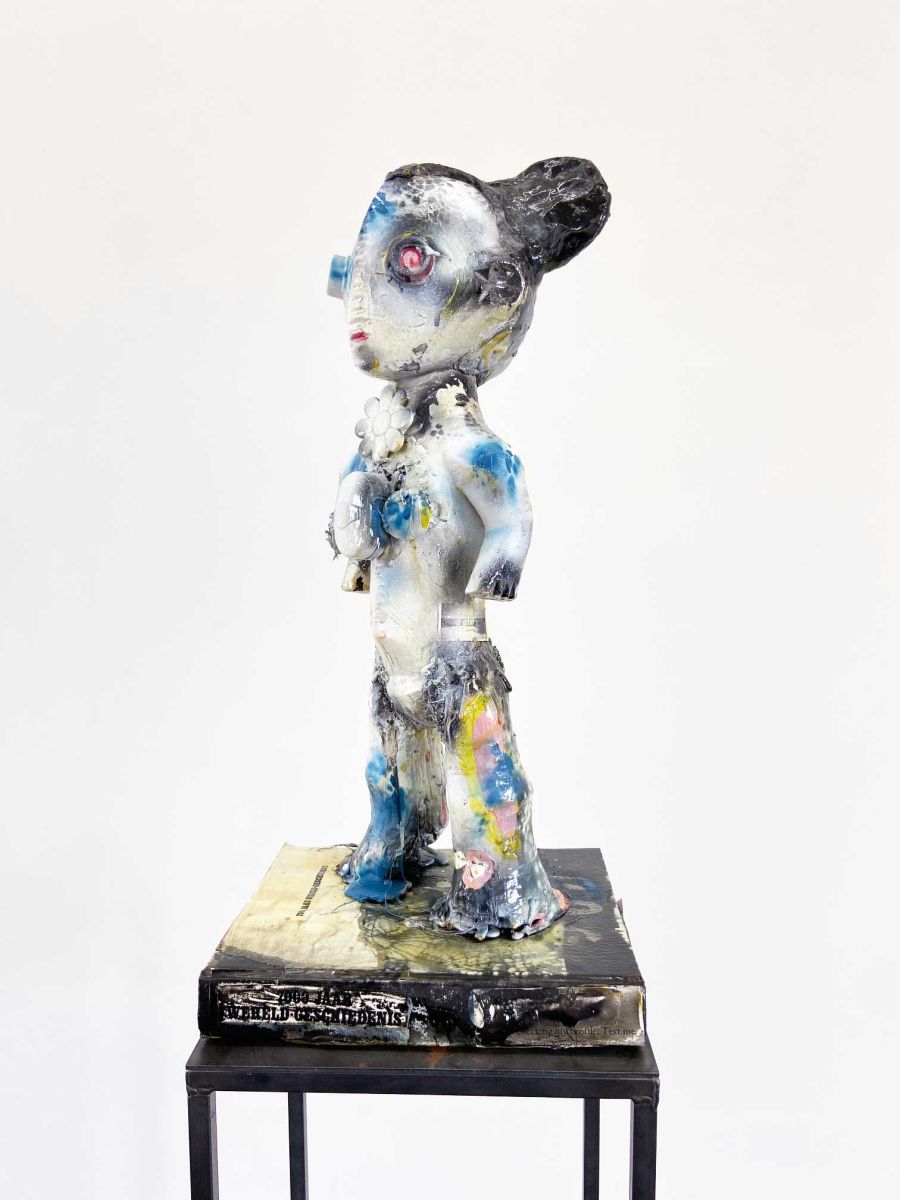
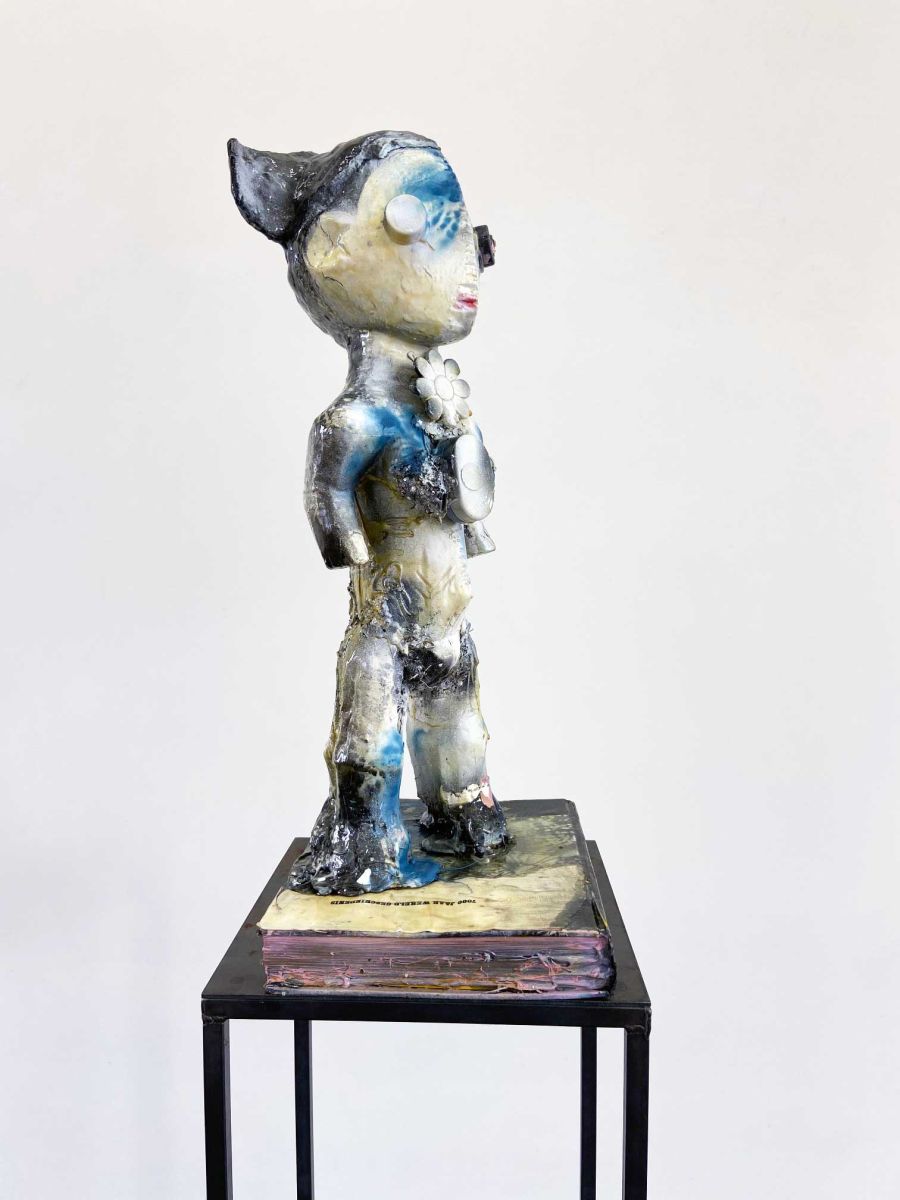
Monika Dahlberg
‘Kapsoo ndatetab chii asi en tataab kov‘ / (One cannot harvest honey from a single flower)
Various materials, 63 x 29 x 24 cm
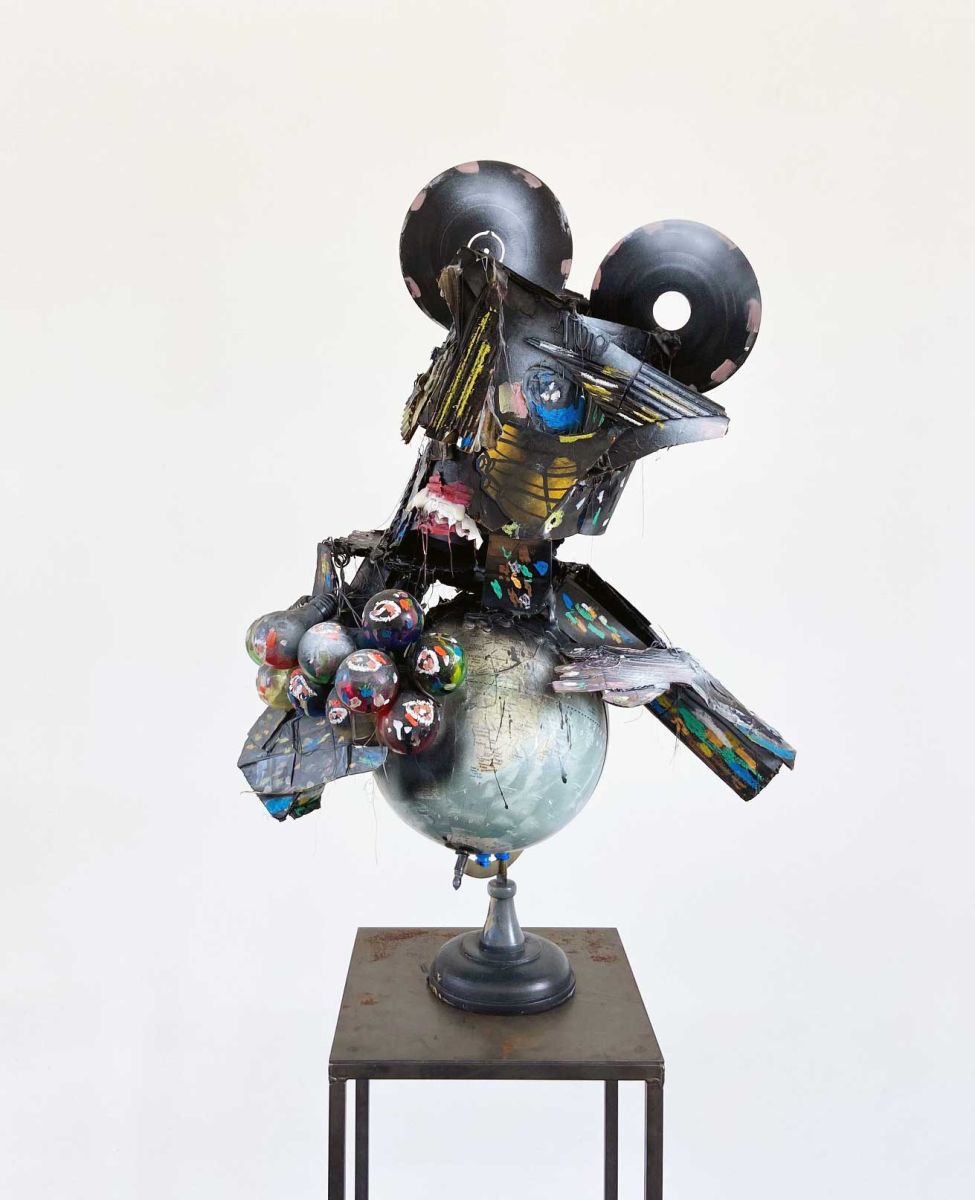
Monika Dahlberg
'Chepkendi kele mung wan’ (A small spark can cause a large fire)
Various materials (a.o. globe, light bulbs, 45 rpm vinyl singles, paint, cardboard), app. 83 x 57 x 30 cm
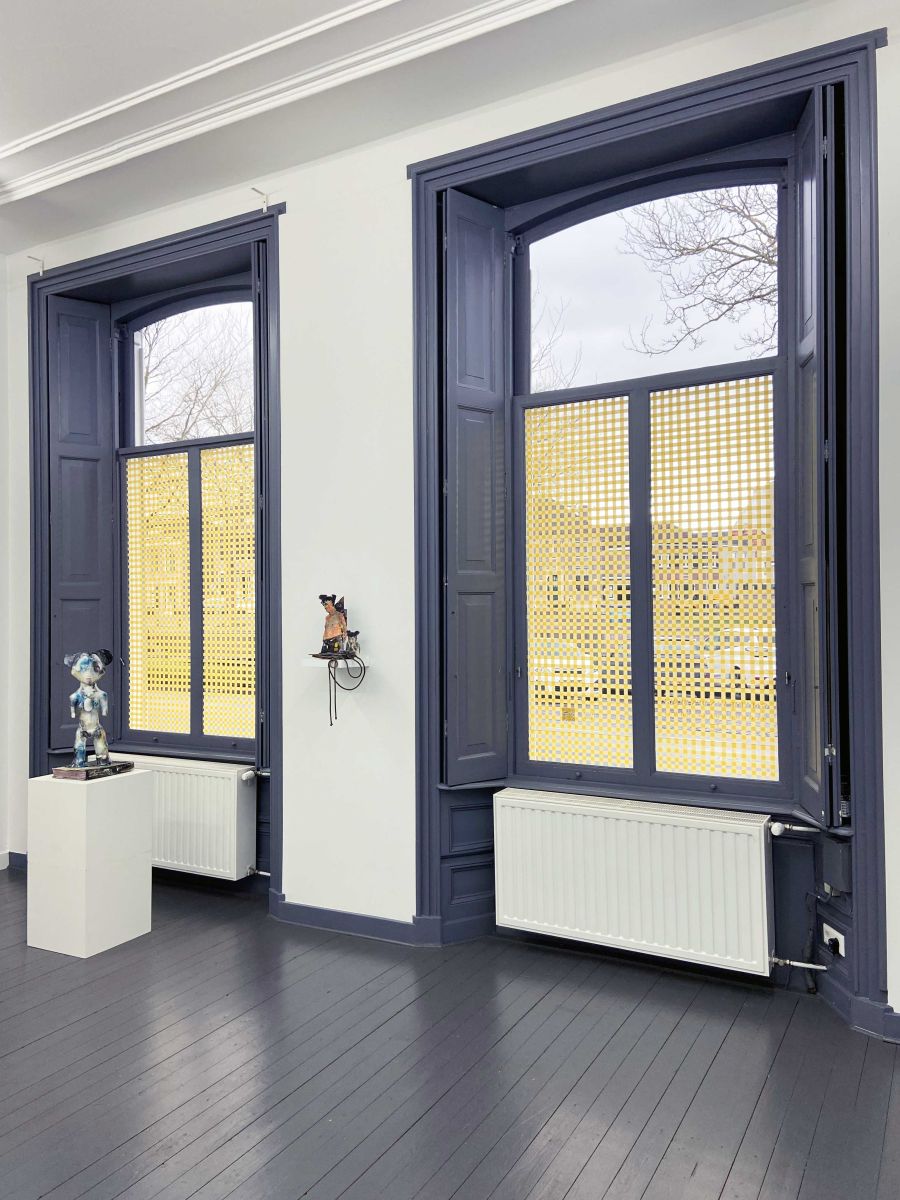
Gallery space (Kamer / Room) with sculptures by Manika Dahlberg and the site specific intervention ('Taped windows') by Clary Stolte
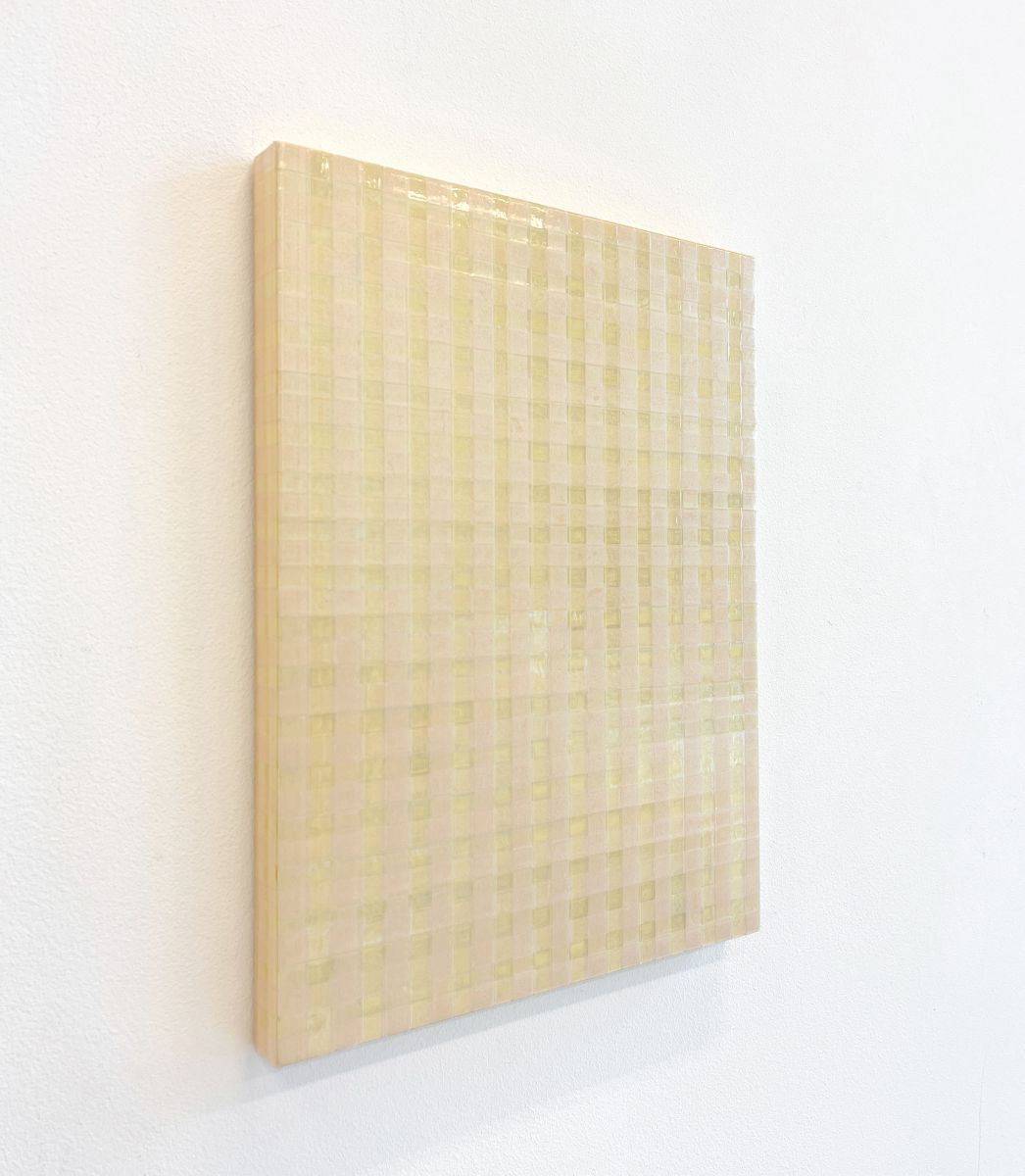
Clary Stolte Clary Stolte
002418 grid tape - yellow/brown (2025) ‘White variation #5 on Td’ (2024)
Tape on wooden panel, 30 x 24 cm Tape on wooden panel, 30 x 24 cm
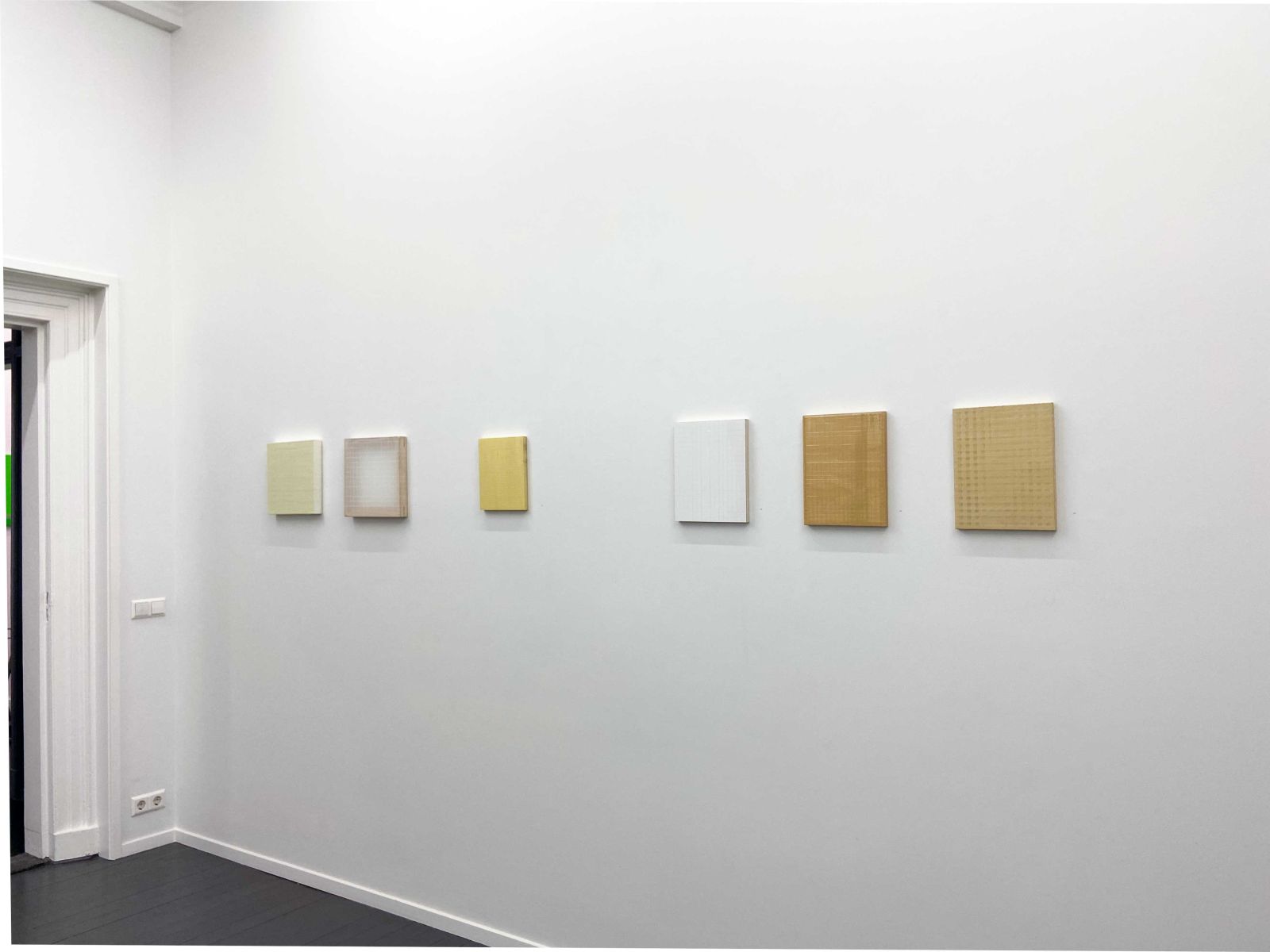
Clary Stolte, 6 tape works
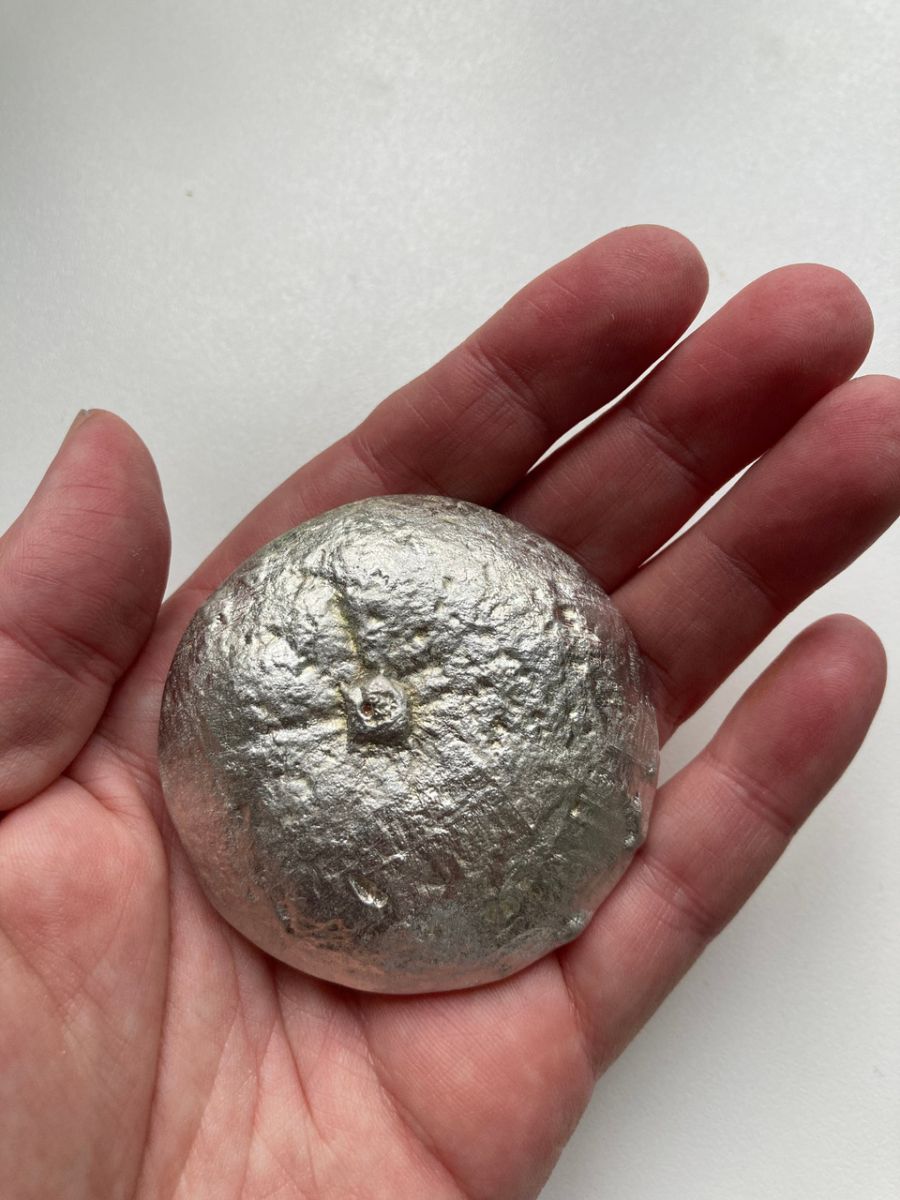
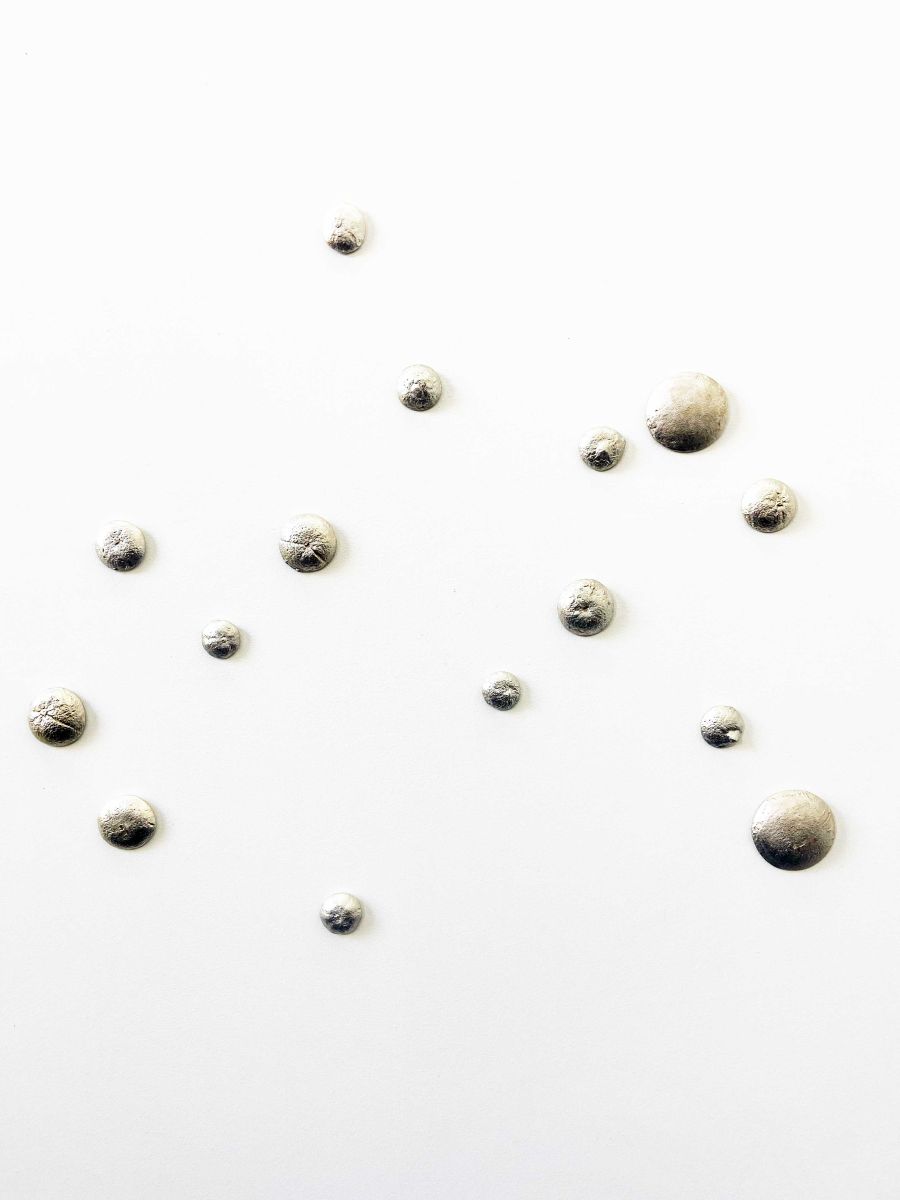
Tamara Dees
‘If life gives you lemons'
Tin, 15 unique works, multiple sizes, Ø app. 4 > 9 cm

Tamara Dees Tamara Dees
‘If life gives you lemons (G- TD02) ’If life gives you lemons (i -TD04)
Tin, ∅ 5 cm Tin, ∅ 4 cm
%20kamer%2001-adj.jpg)
Ditty Ketting, Tamara Dees, Clary Stolte
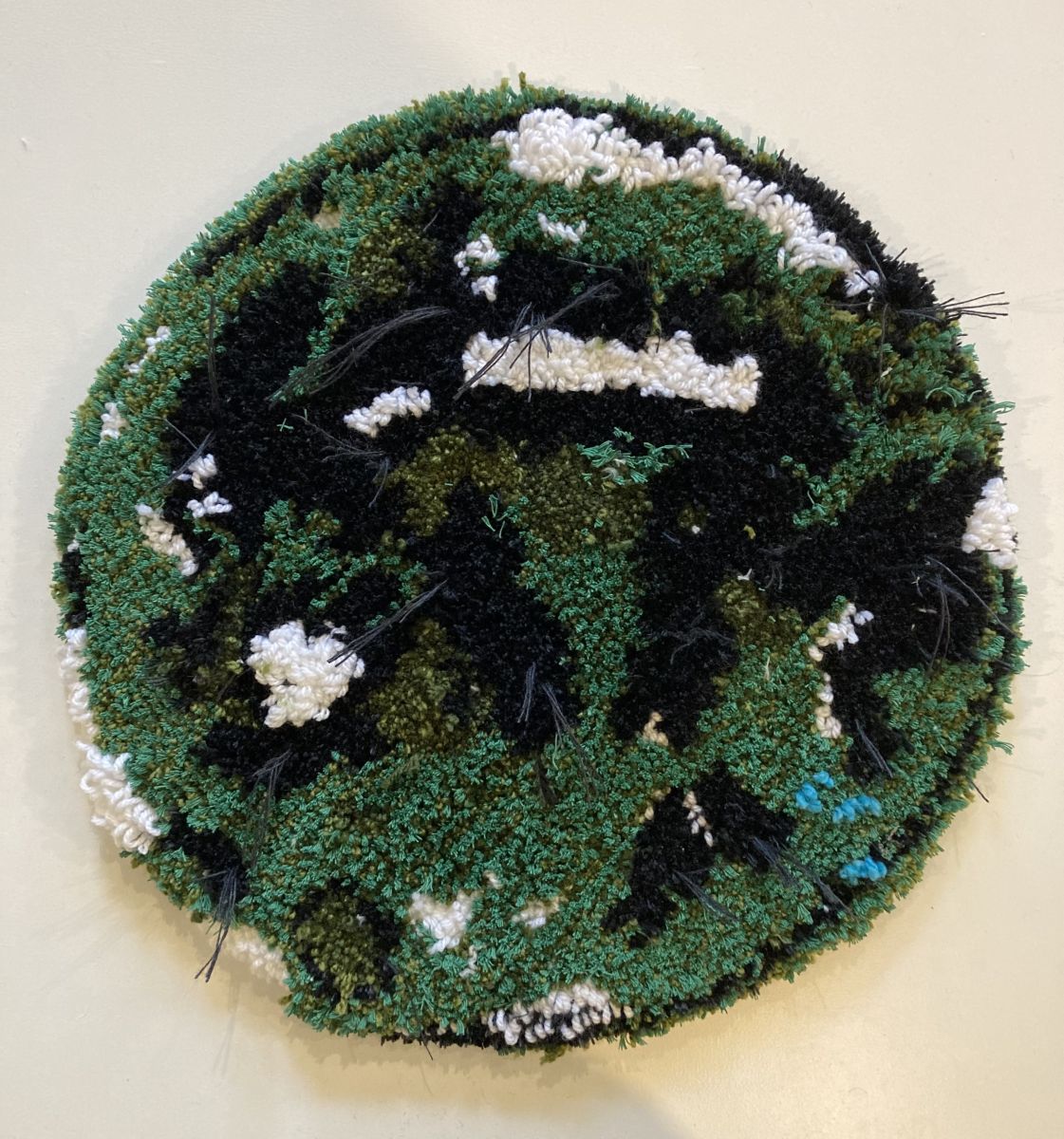
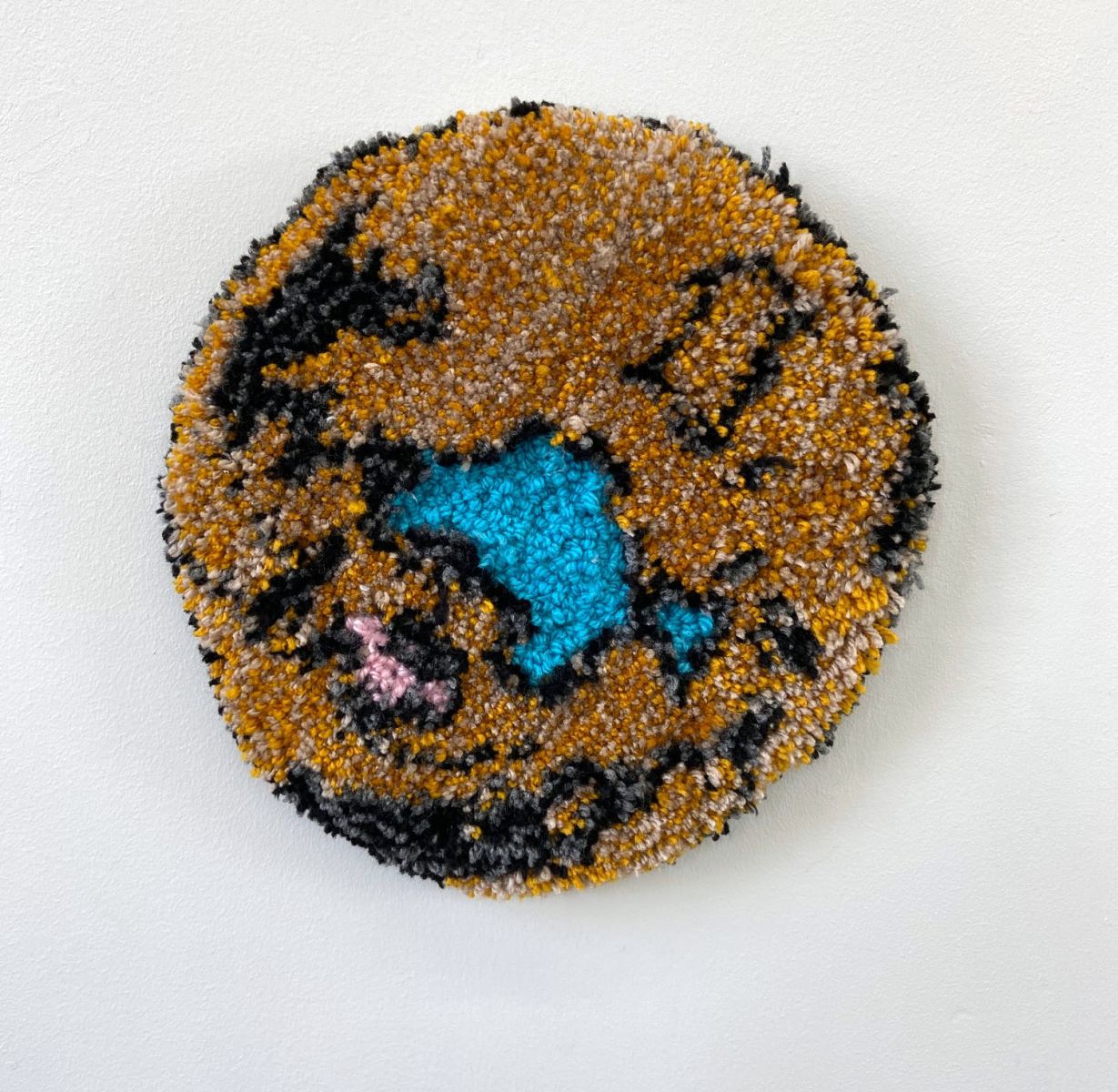
Tamara Dees Tamara Dees
‘Mooring # 1’ 'Mooring # 3'
Tufted fabrics, Ø app. 42 cm Tufted fabrics, Ø app. 29 cm
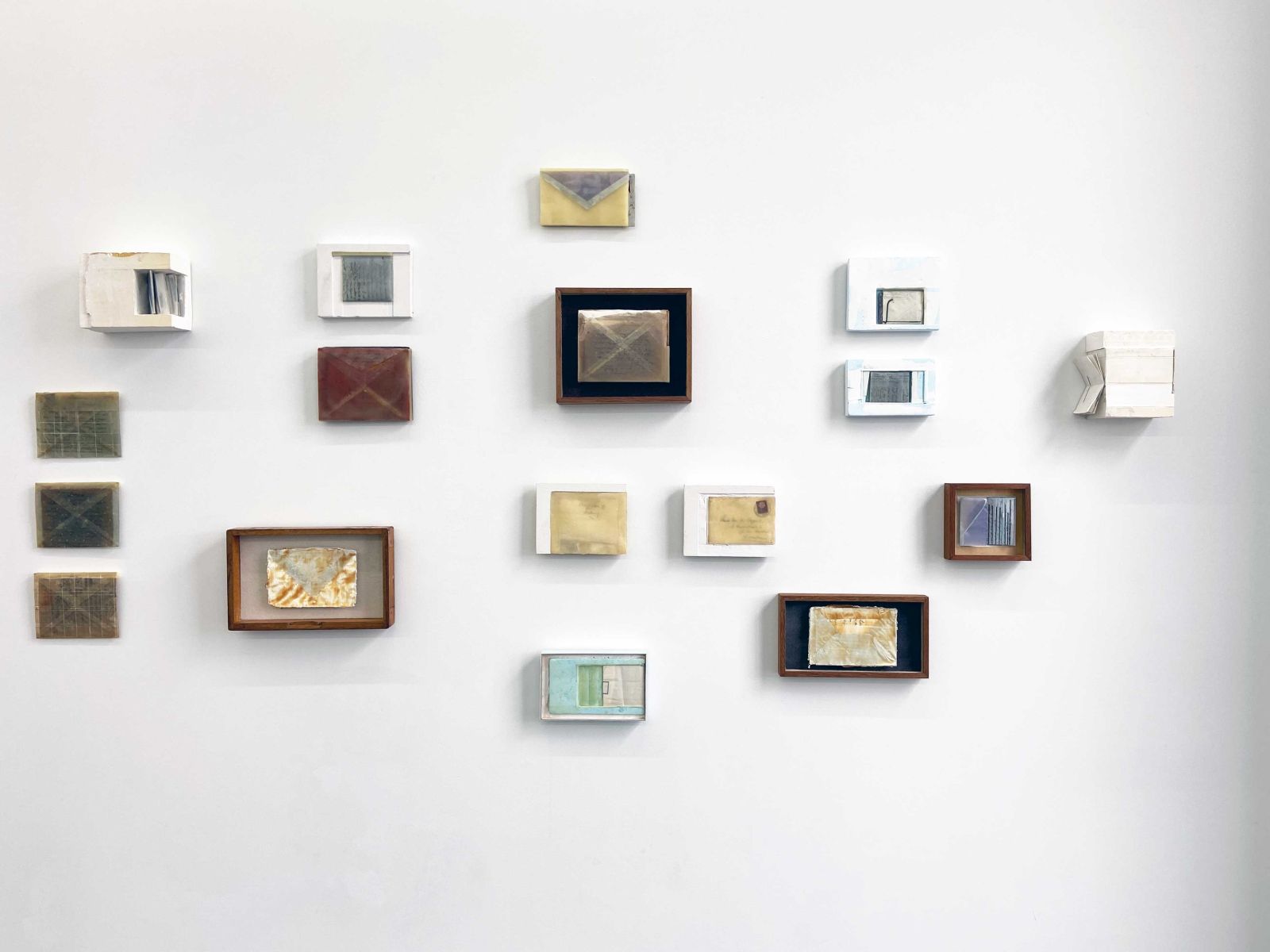
Mirjam Hagoort - '1953 to 1957'
In de jaren tussen 1953 en 1957 ontvouwt zich een geschiedenis, vastgelegd in brieven. Een verhouding, een correspondentie, een relatie uitgedrukt in woorden, twee mensen verbonden door brieven.
Die erfenis, nalatenschap, van een geschreven correspondentie als herinnering aan een tijdspanne is gesorteerd en in stapeltjes geordend….. nieuwe verhoudingen ontstaan maar nu in maat en volume.
Met het verwerken van de brieven vormt zich een geschiedenis die blijft, geconserveerd en verhuld in was en gips.
In de galerie toont Mirjam Hagoort 17 objecten waarin 17 brieven zijn verwerkt.
In the years between 1953 and 1957, a history unfolds, recorded in letters. A relationship, a correspondence, a relationship expressed in words, two people connected by letters.
That legacy, legacy, of a written correspondence as a memory of a time span is sorted and arranged in piles..... new relationships emerge but now in size and volume. With the processing of the letters, a history forms that remains, preserved and cloaked in wax and plaster.
In the gallery, Mirjam Hagoort shows 17 objects incorporating 17 letters.
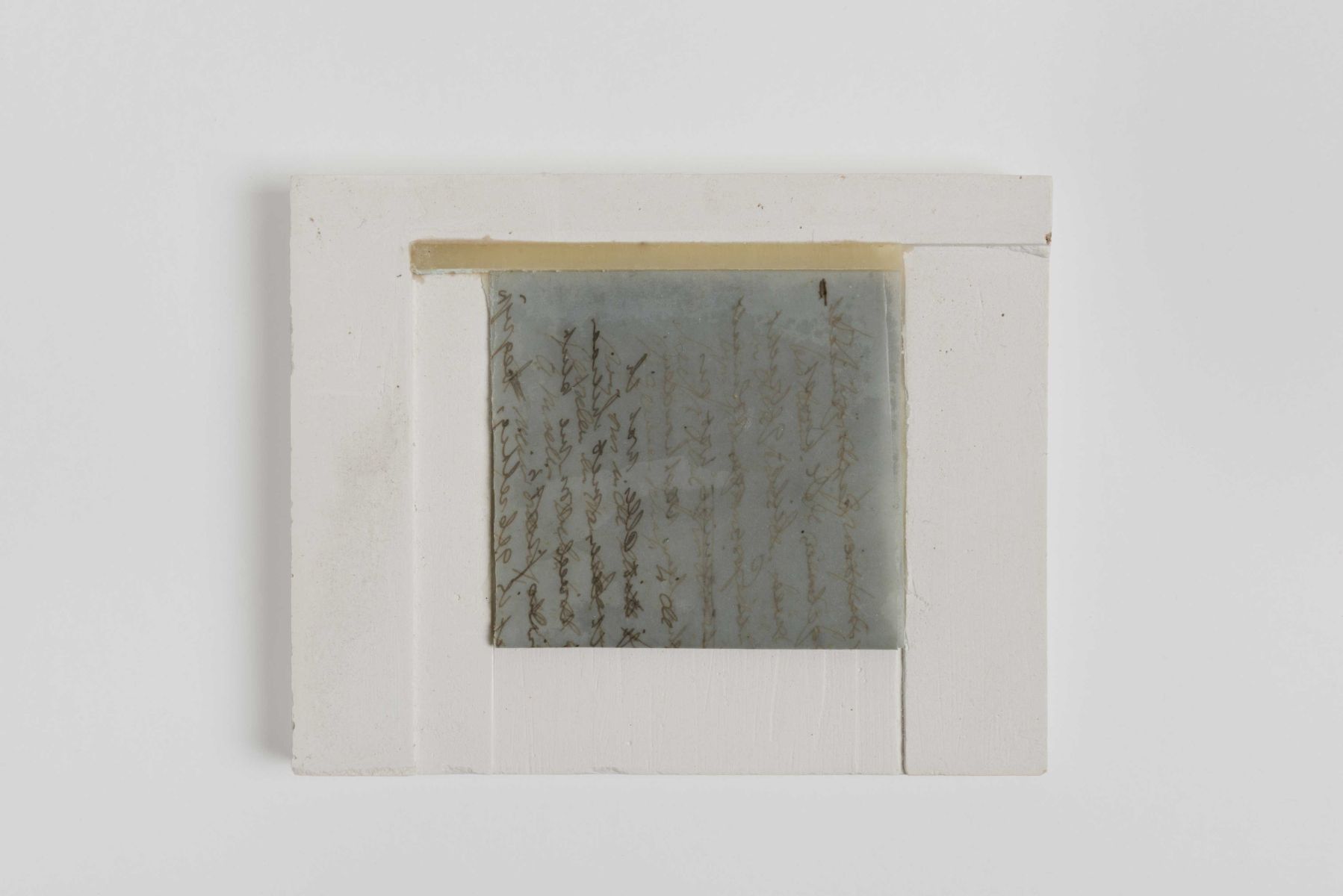
Mirjam Hagoort
Untitled (2025-07)
(Letter)paper, wax, plaster, 12.5 x 15.5 x 2 cm
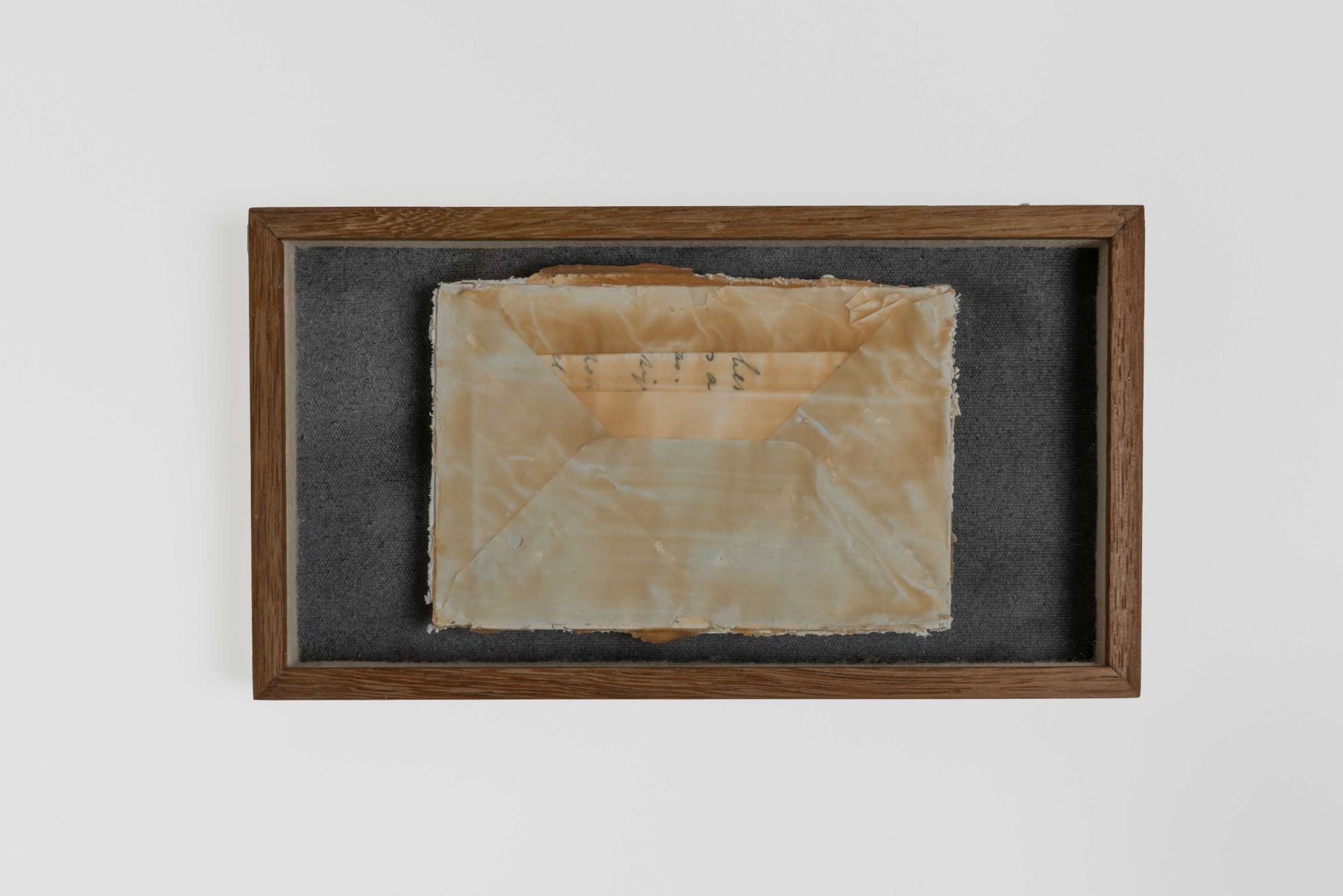
Mirjam Hagoort
Untitled (2025-10)
(Letter)paper, rubber, plaster, cotton, felt, wood, 14 x 25 cm
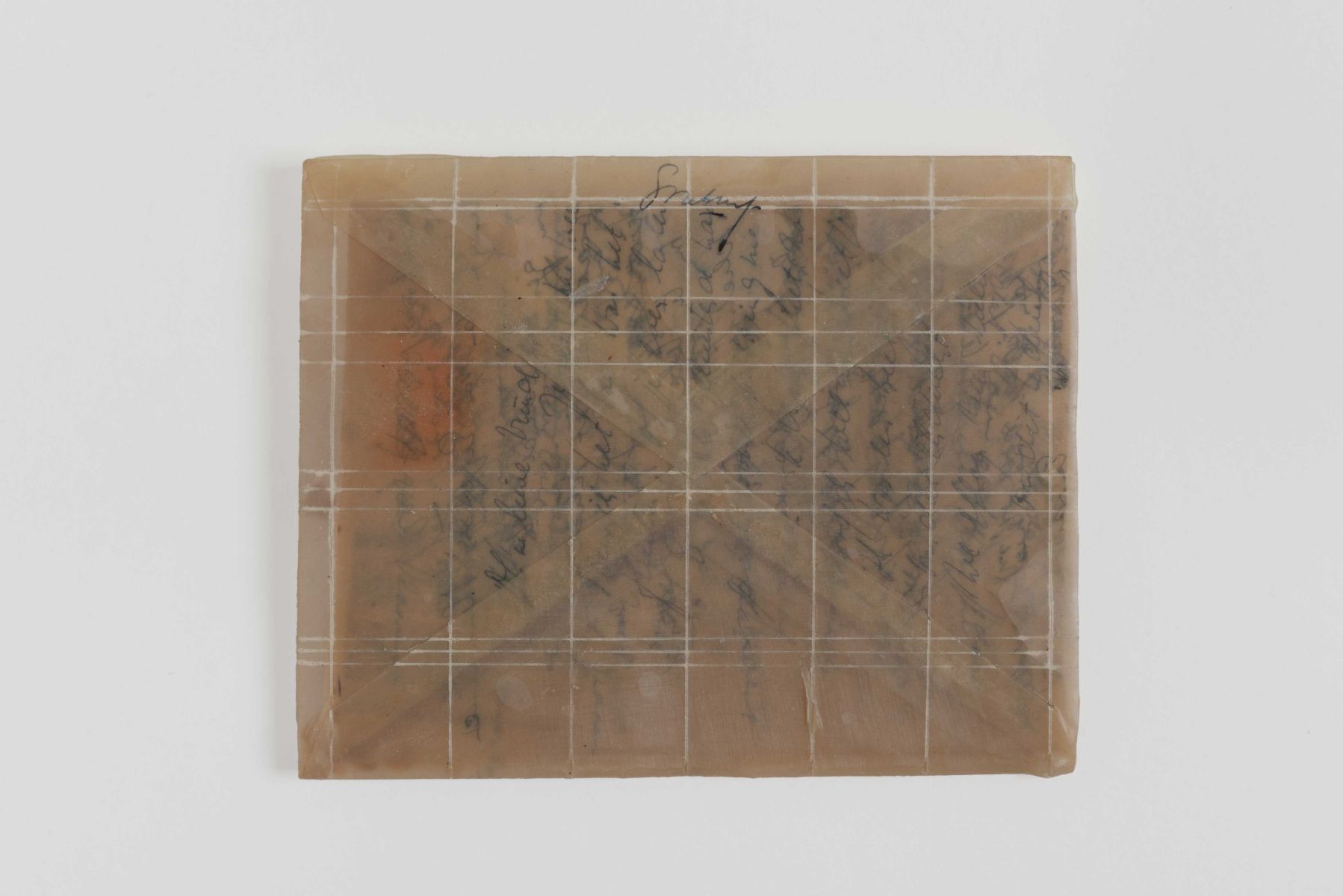
Mirjam Hagoort
Untitled (2025-16)
(Letter)paper, wax, 11 x 14,5 cm
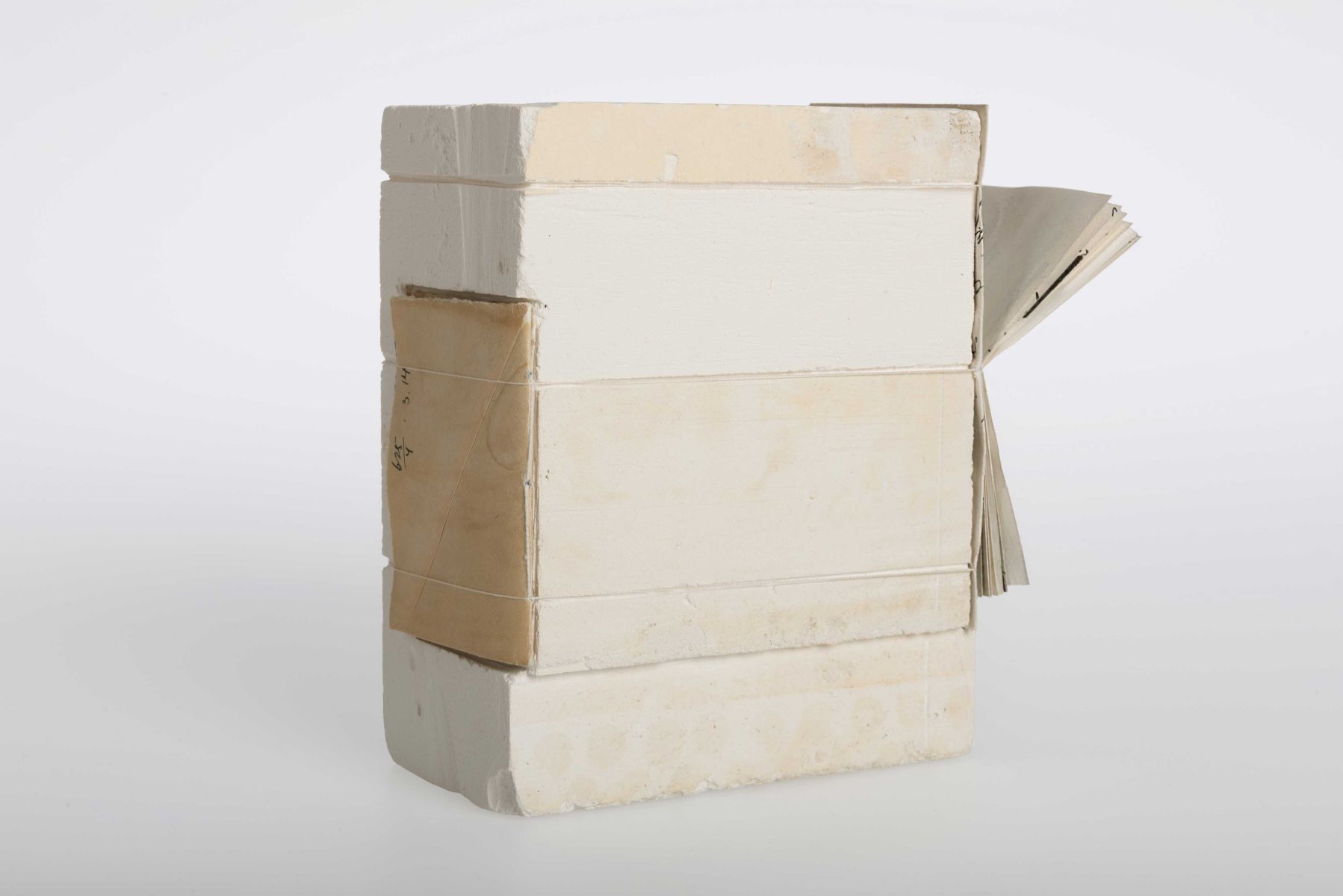
Mirjam Hagoort
Untitled (2025-04)
(Letter)paper, plaster, cotton, 14,5 x 11,5 x 7 cm
-ingrid-web.jpg)
%20overfzicht%20zaal%2003.jpeg)
Zaal (Large Room) - Overviews
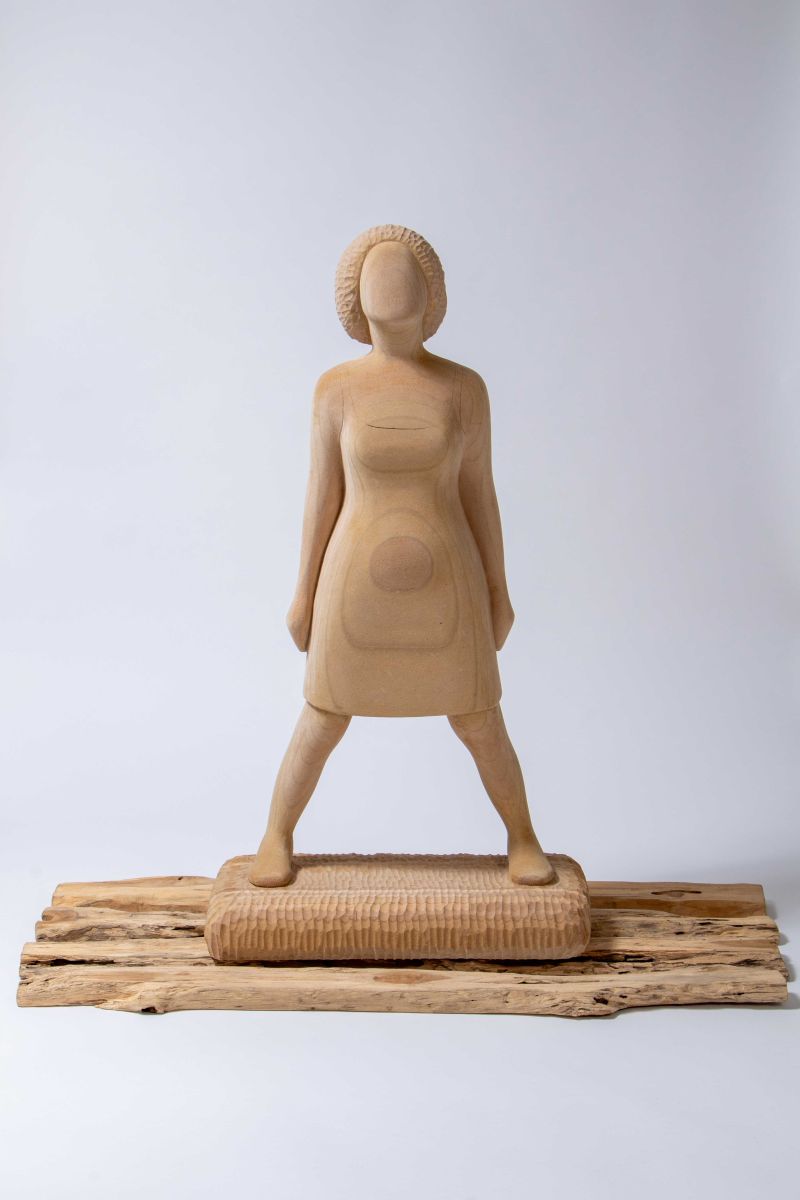
Ingrid van der Hoeven
‘No compromises’ (2025)
MDF, 100 x 48 x 21 cm / Pedestal re-used teak wood
Photo: Erik van den Akker
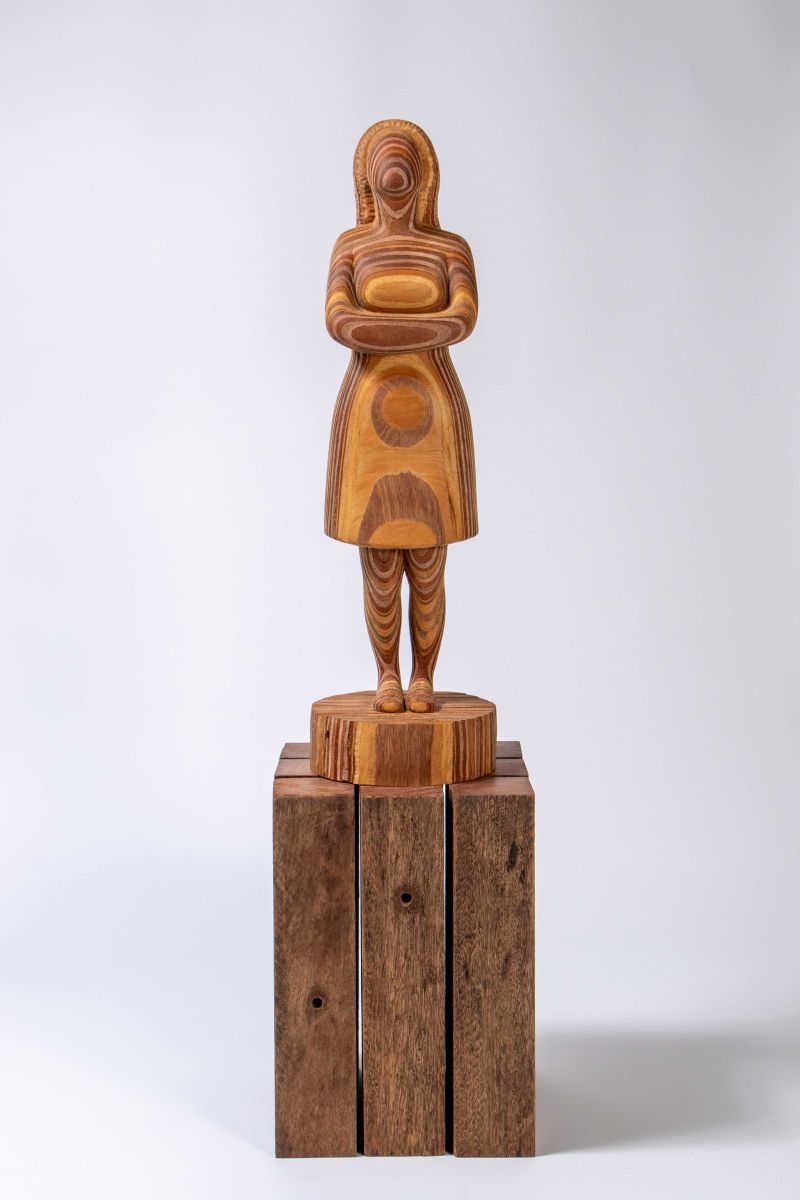
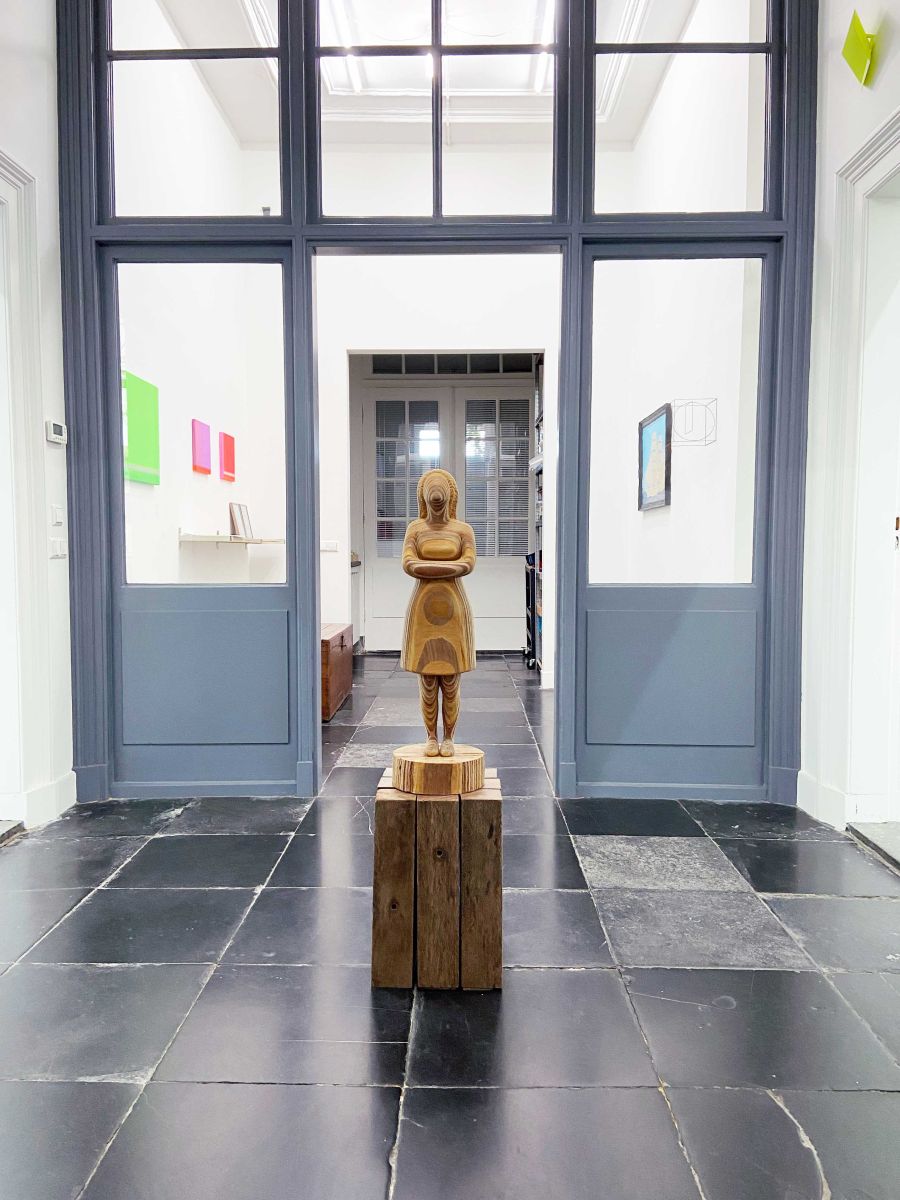
Ingrid van der Hoeven
‘No doubt about’ (2025)
Meranti plywood, 24 x 24 x 81 cm - Pedestal re-used Azobe, 33 x 33 x 45 cm
Photo left: Erik van den Akker
03/05 > 07/06
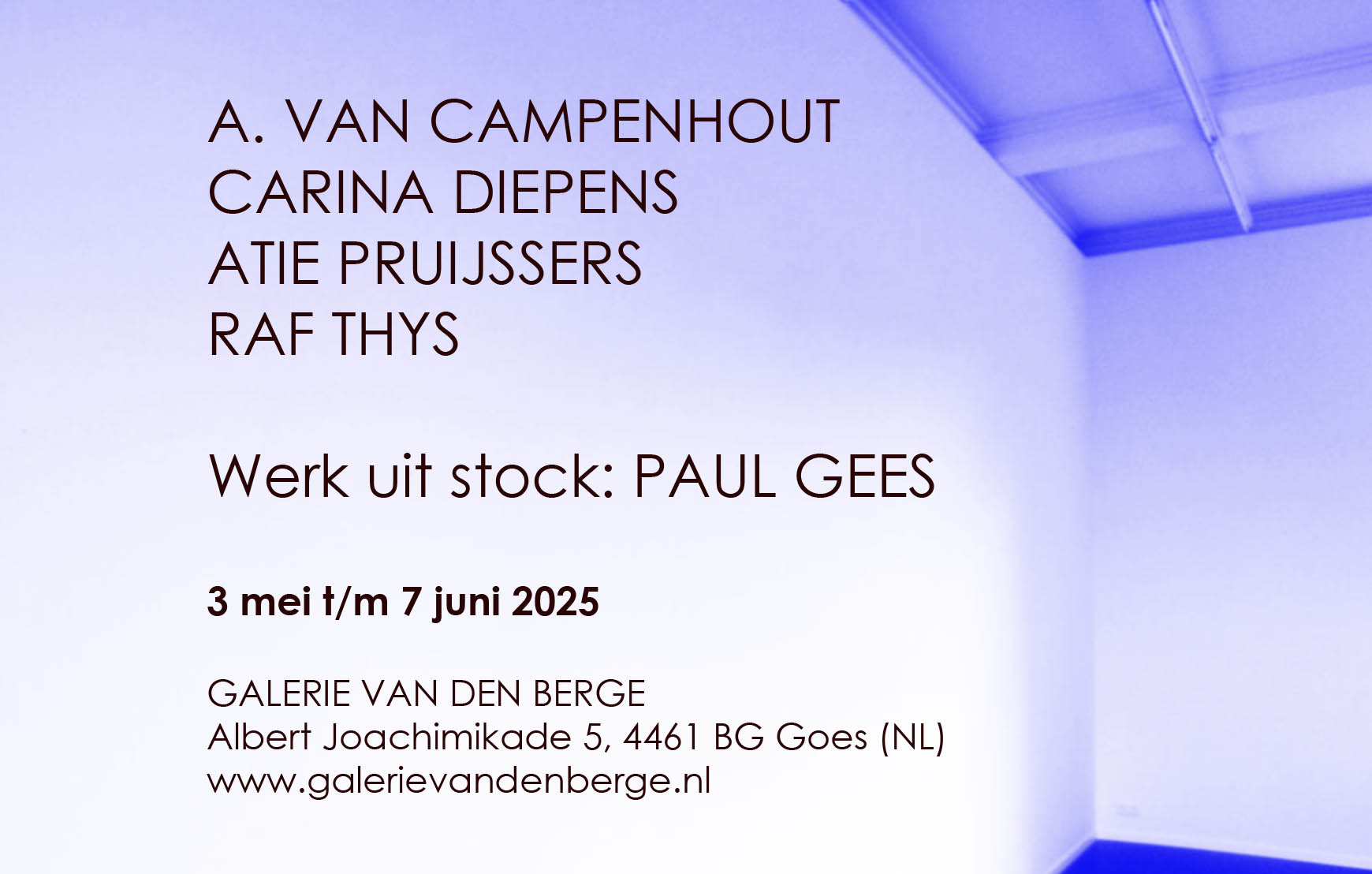
Check our page on Gallery Viewer (more works, details and prices)
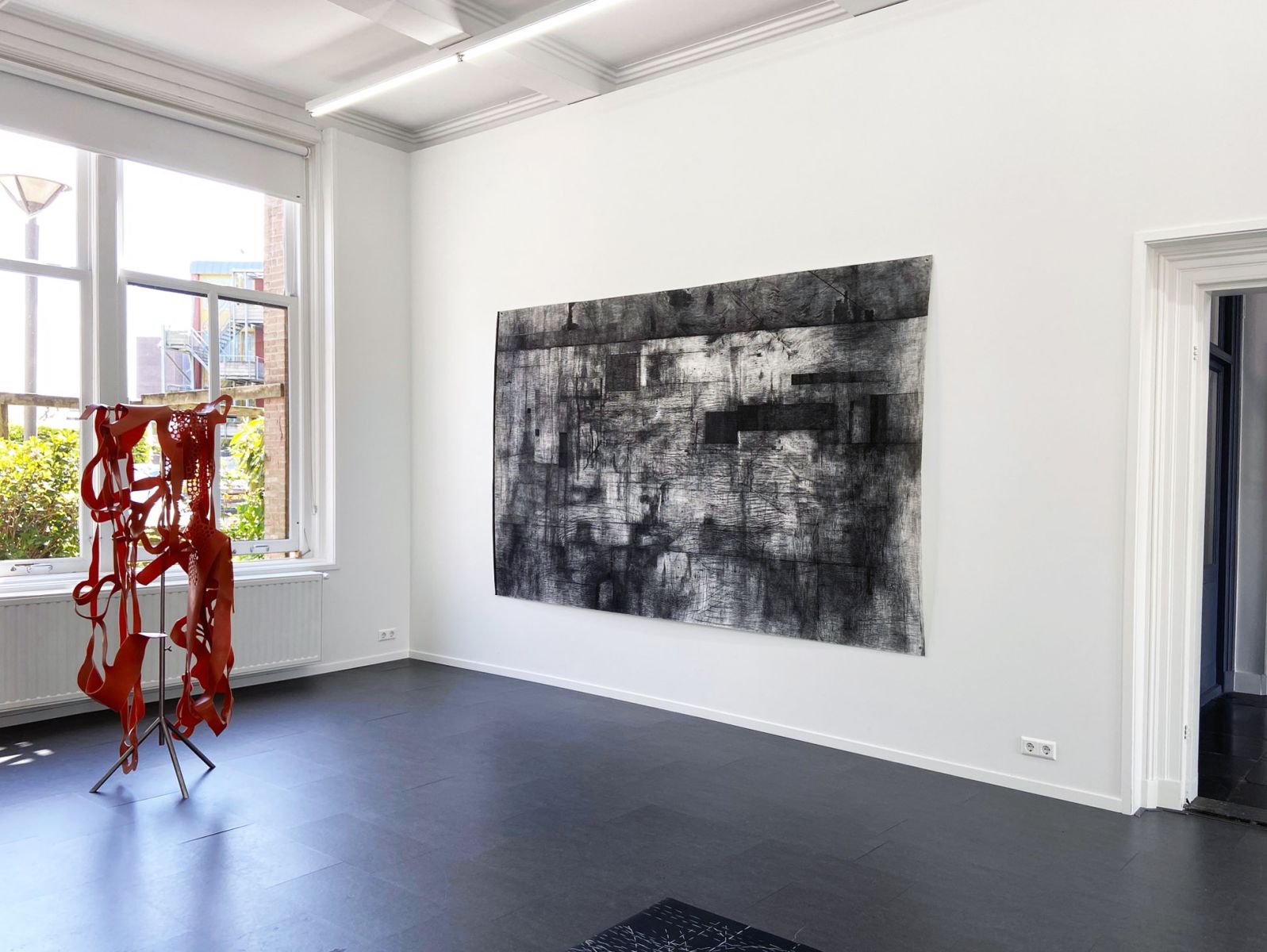
L: Carina Diepens, ‘The silhouette of The Far Away Dramatic Neckline’ (2024), Rubber, steel, 175 x 65 x 50 cm
R: A. van Campenhout, Untitled (2014), Charcoal on paper, 196 x 315 cm

A. van Campenhout
Untitled (2025)
Charcoal on paper, 50 x 70 cm
A. van Campenhout
Untitled (2024)
Charcoal on paper, 49,9 x 70 cm
Text (NL/UK) Lut Pil about A. van Campenhout / exhibition 'RADAR (2020)
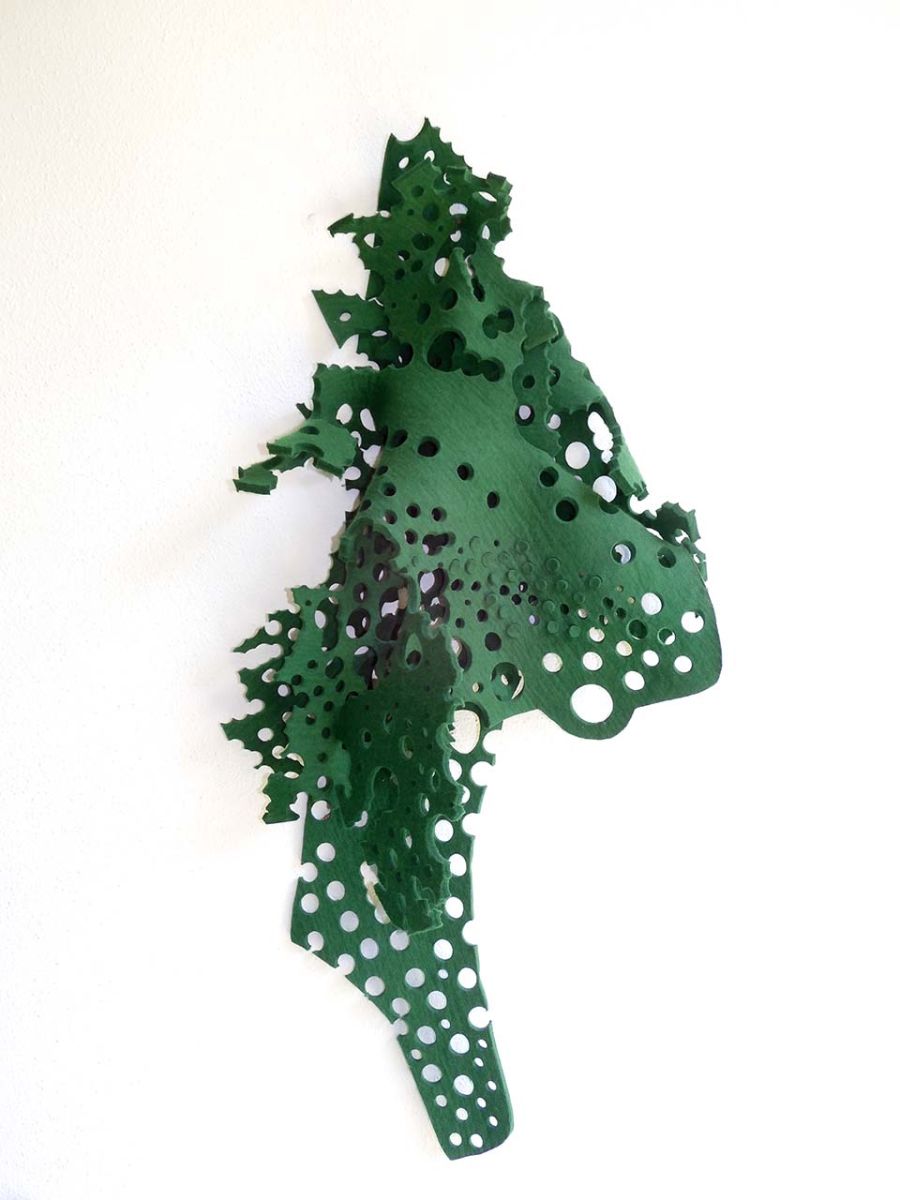
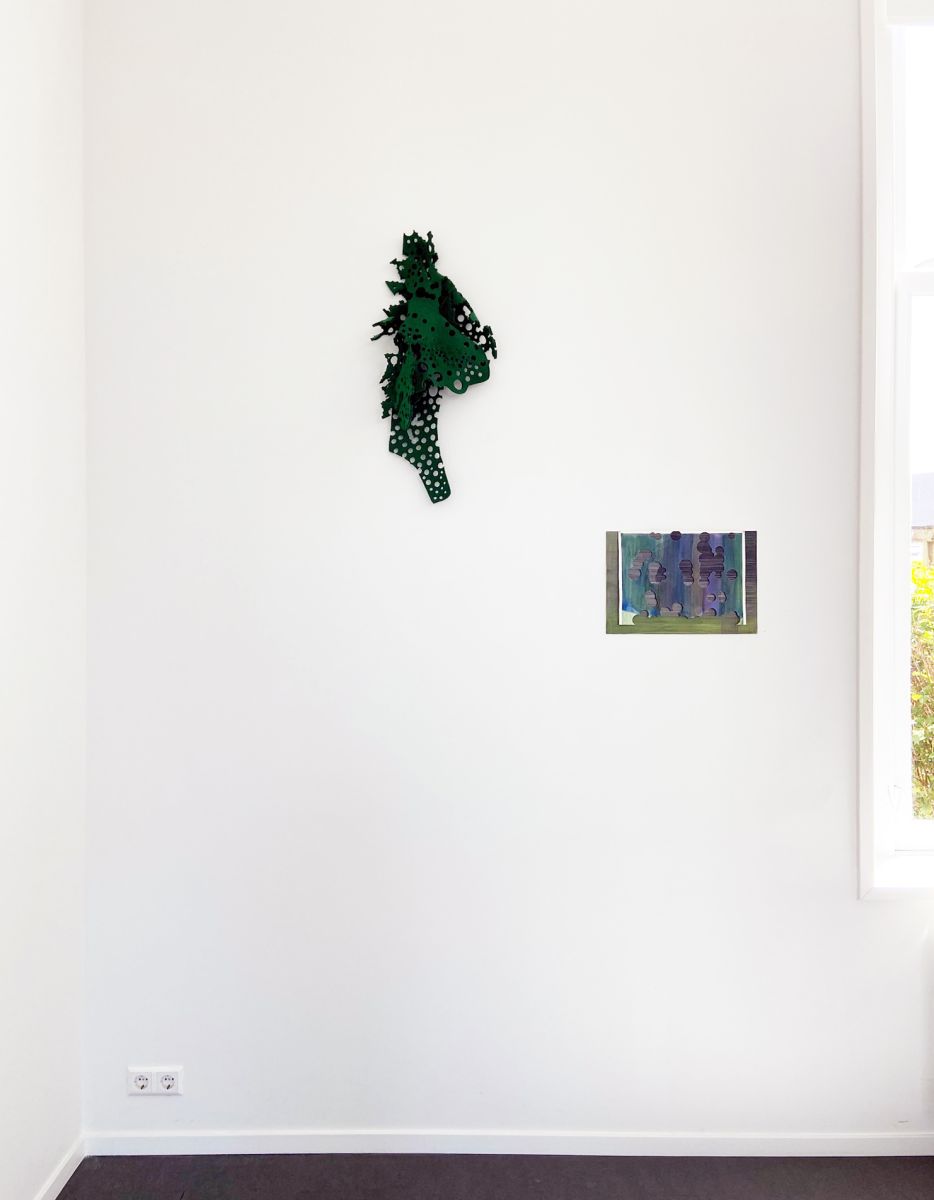
Carina Diepens
‘In the fold of the fresh green occasional gown’ (2024)
Felt, app. 78 x 40 x 20 cm.
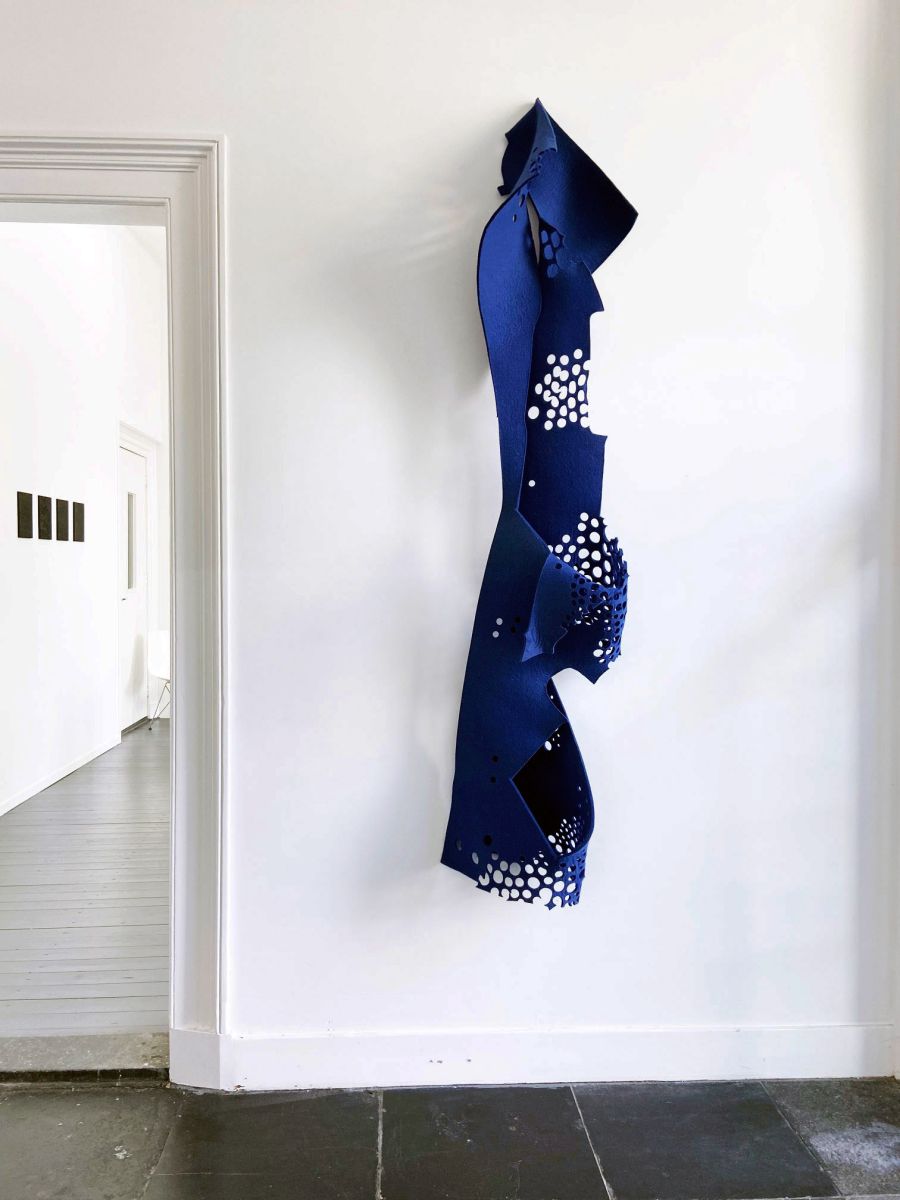
Carina Diepens
'In the fold of the cornflower blue occasional gown' (2025)
Felt, 215 x 48 x 42 cm

Carina Diepens
‘The silhouette of The Far Away Dramatic Neckline’ (2024)
Rubber, steel, 175 x 65 x 50 cm
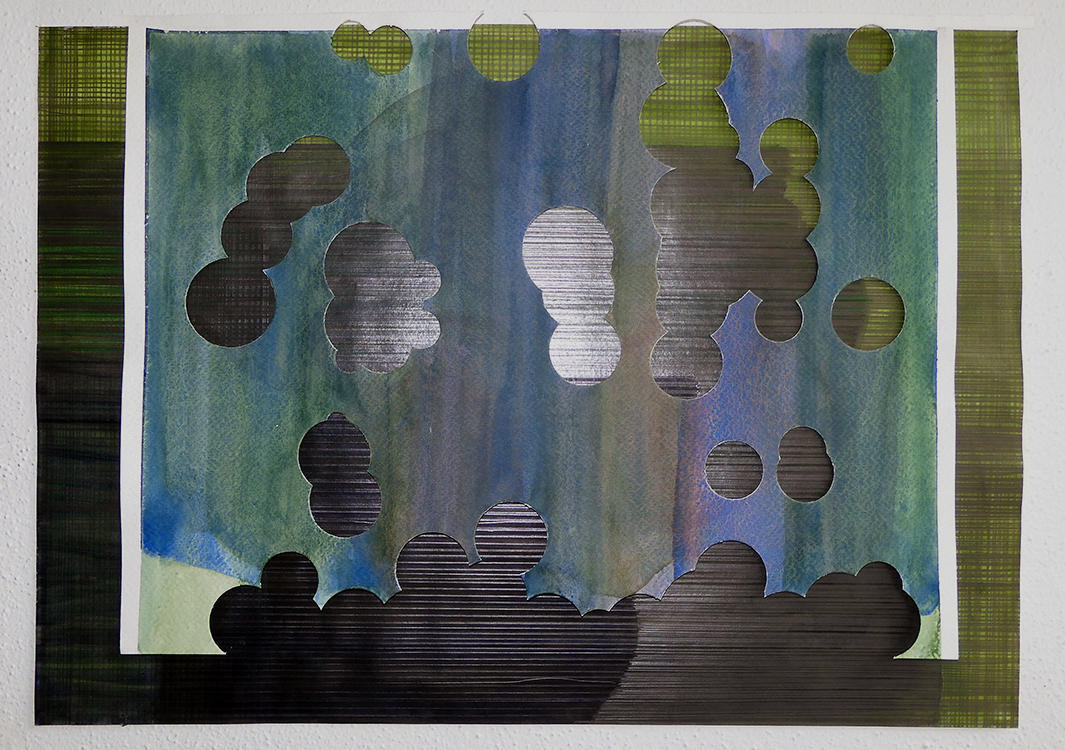
Carina Diepens
'Darkness falls in my garden' (2019)
Collage, watercolor, ink, graphite on paper 41.5 x 29.5 cm
From the series: 'It's difficult to leave the window'
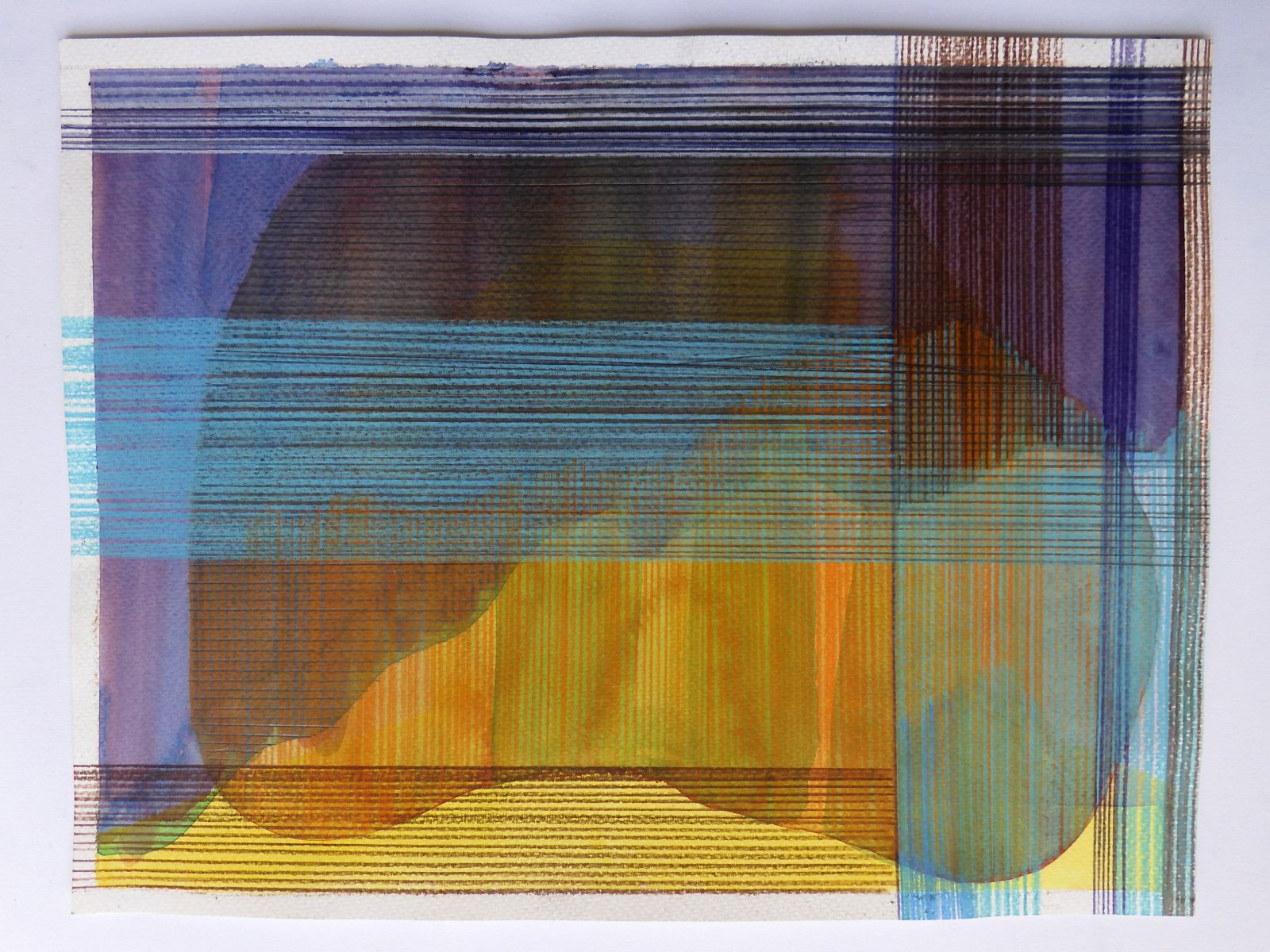
Carina Diepens
‘The island is rocking’ (2020)
Watercolor, ink, graphite and colored pencil on paper, 27 x 35 cm
Text (NL/UK) Lut Pil about Carina Diepens / exhibition 'RADAR (2020)
Text (NL/UK) about Carina Diepens
.jpg)
Atie Pruijssers
'Perforated # 1 (2015), Japanese paper, wood, 35 x 22 cm
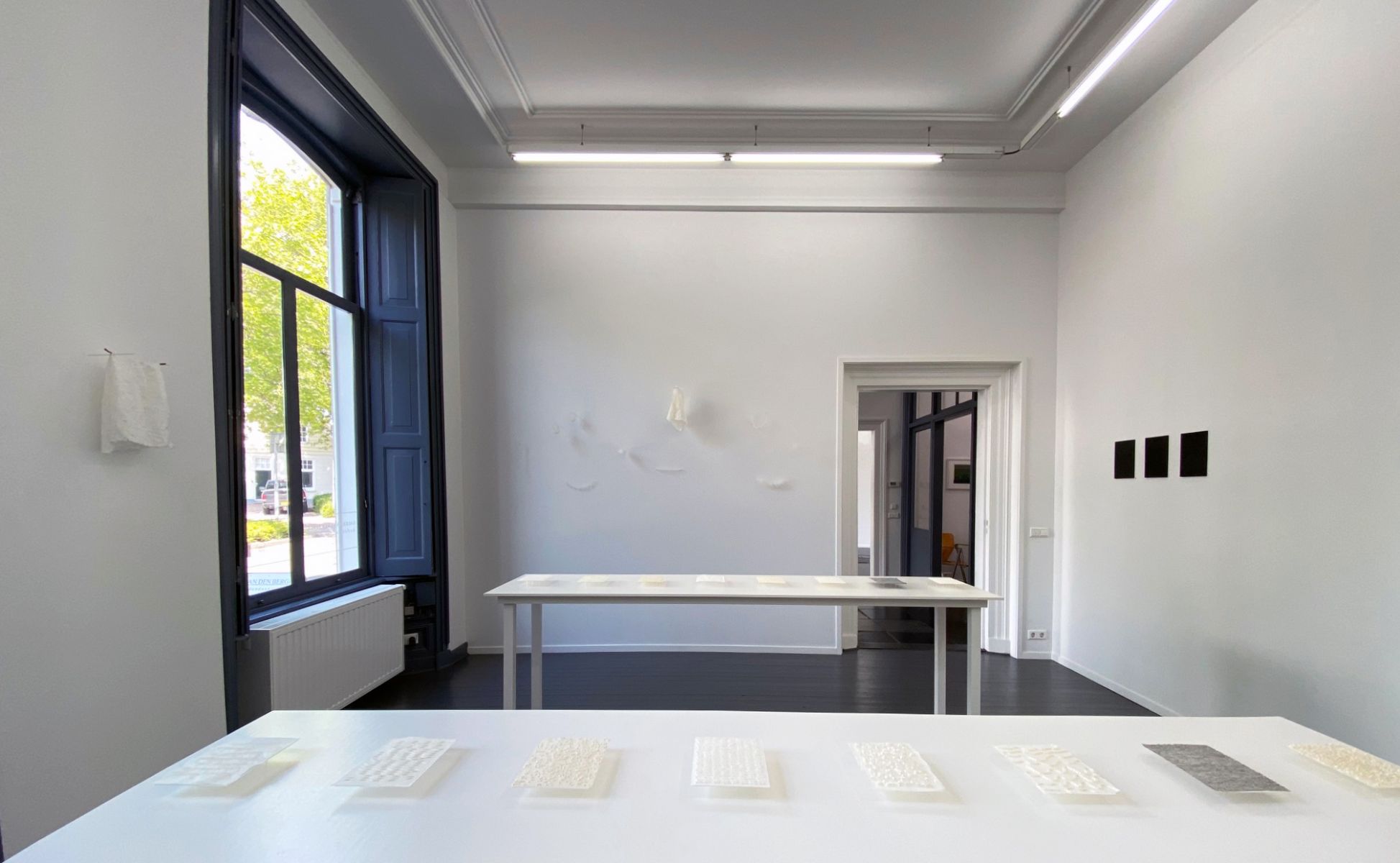
Atie Pruijssers - overview
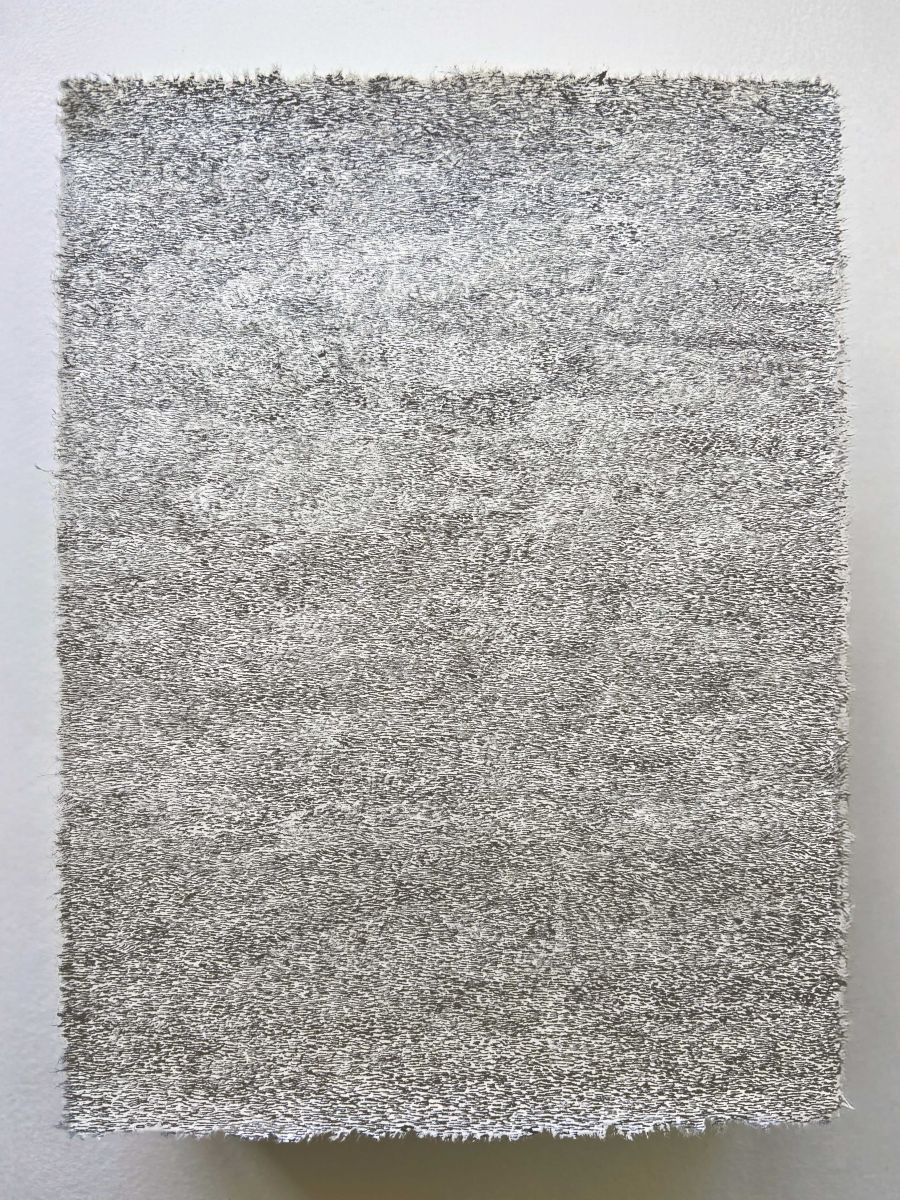
Atie Pruijssers
'Gray # 1 (2023)
India ink on Japanese paper, 18,5 x 13,5 cm
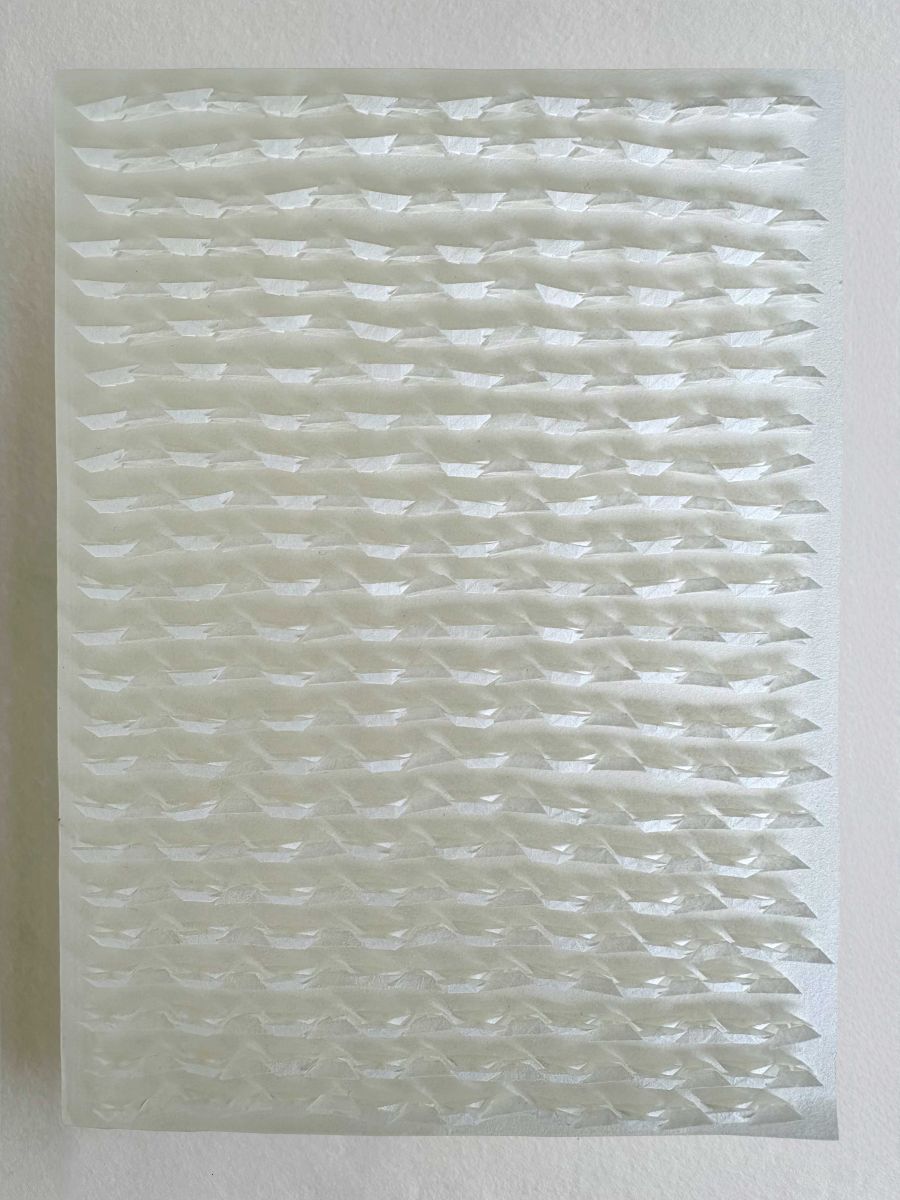
Atie Pruijssers
‘Folded # 16’ (2022)
Japanese folding technique, Japanese paper, 18,5 x 13,5 cm

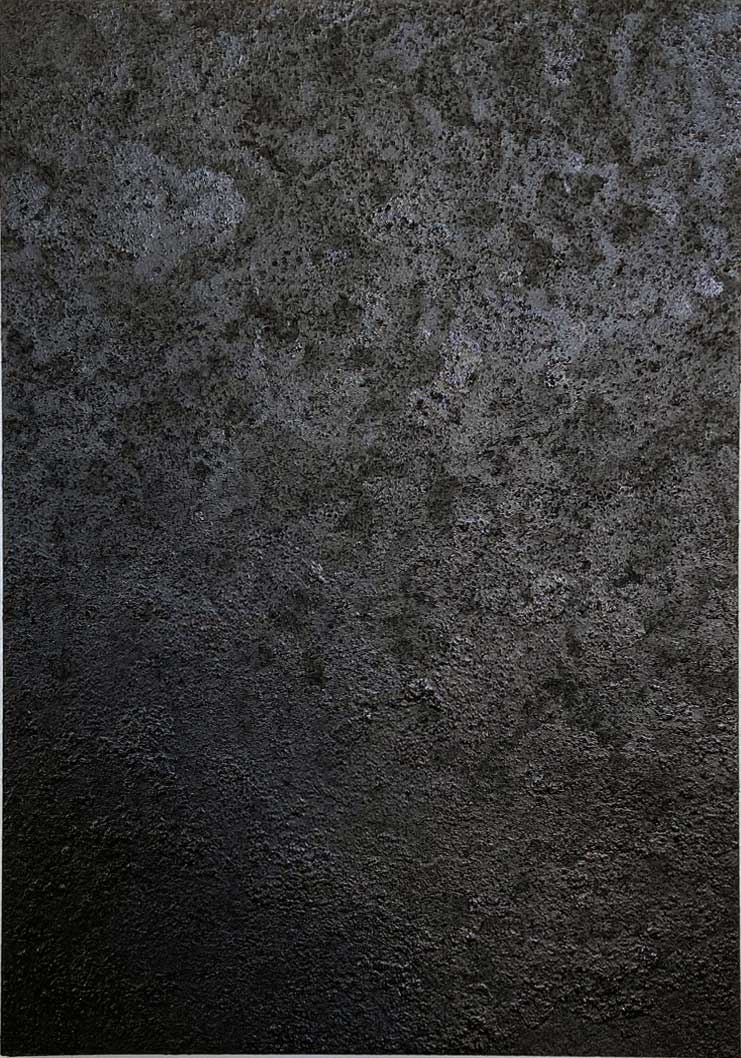
Atie Pruijssers
L: 'Black # 1' (2021), India Ink on Aquarel paper, 26 x 18 cm
R: 'Black # 9' (2024), India Ink on aquarel paper, 26 x 18 cm
Text (NL/UK) about Atie Pruijssers
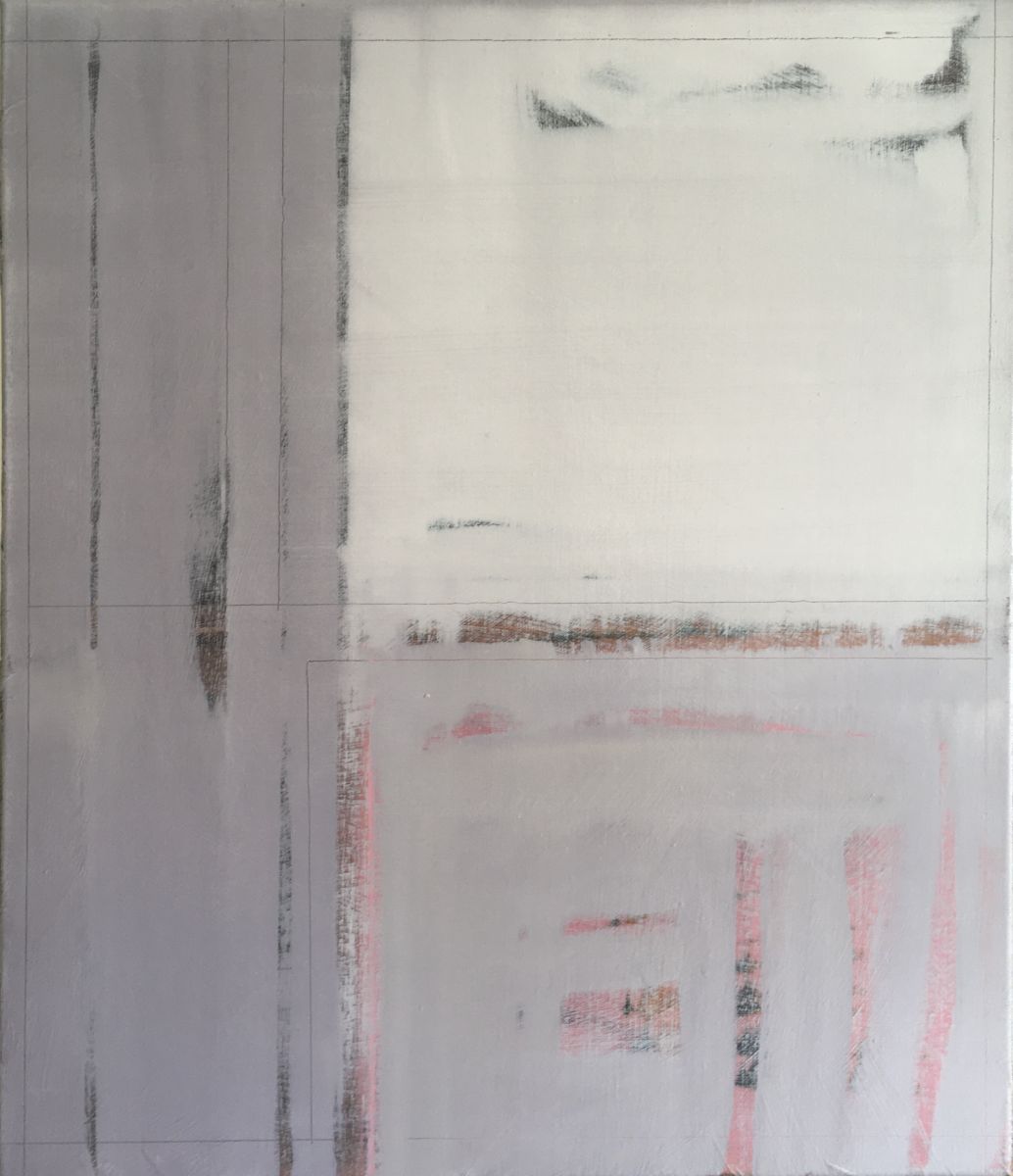
Raf Thys
Untitled 053-I-0119 (2020-2023)
Oil on canvas, 70 x 60 cm

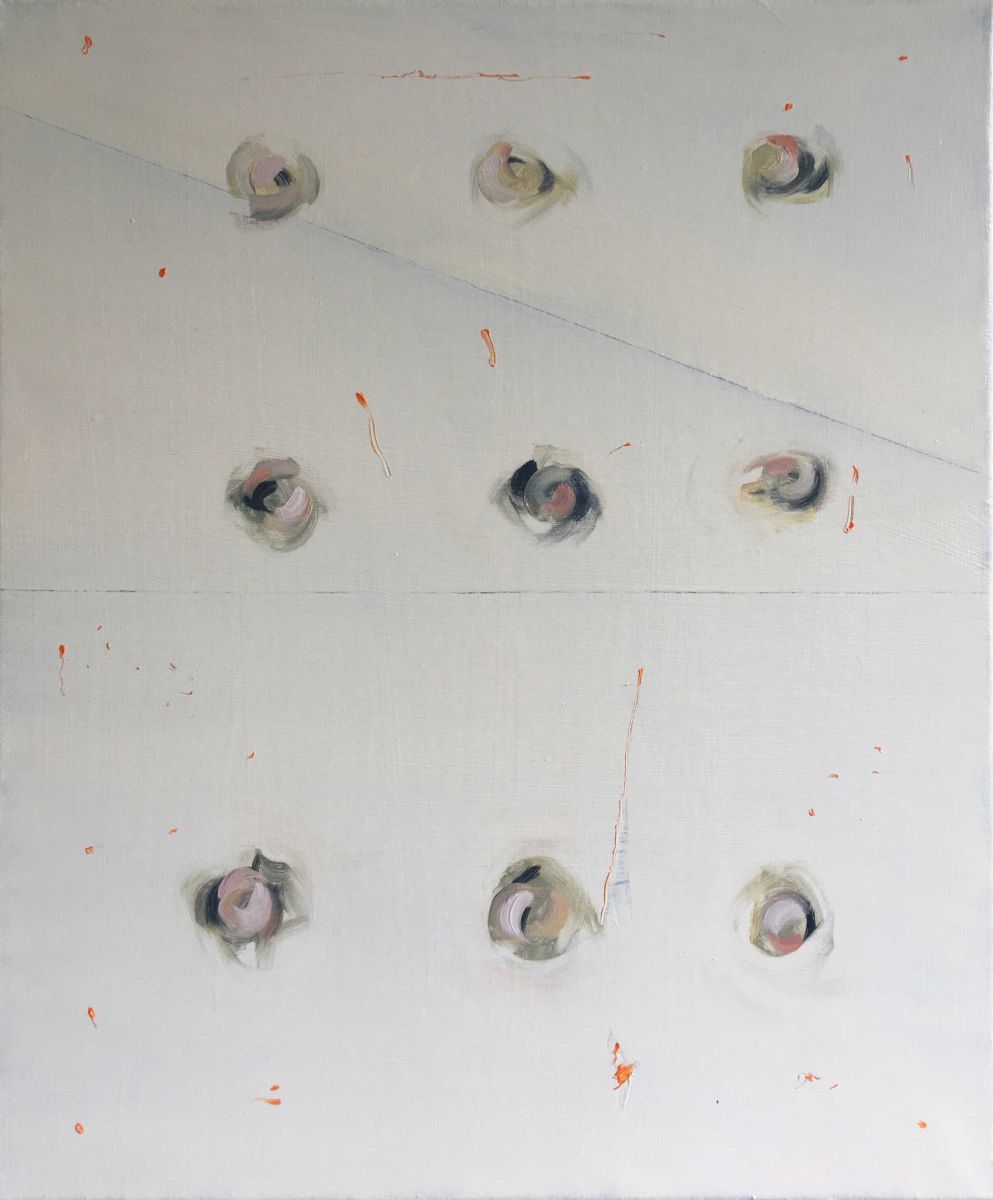
Raf Thys
Untitled 080-I-0119 (2022-2023)
Oil on canvas, 60 x 50 cm
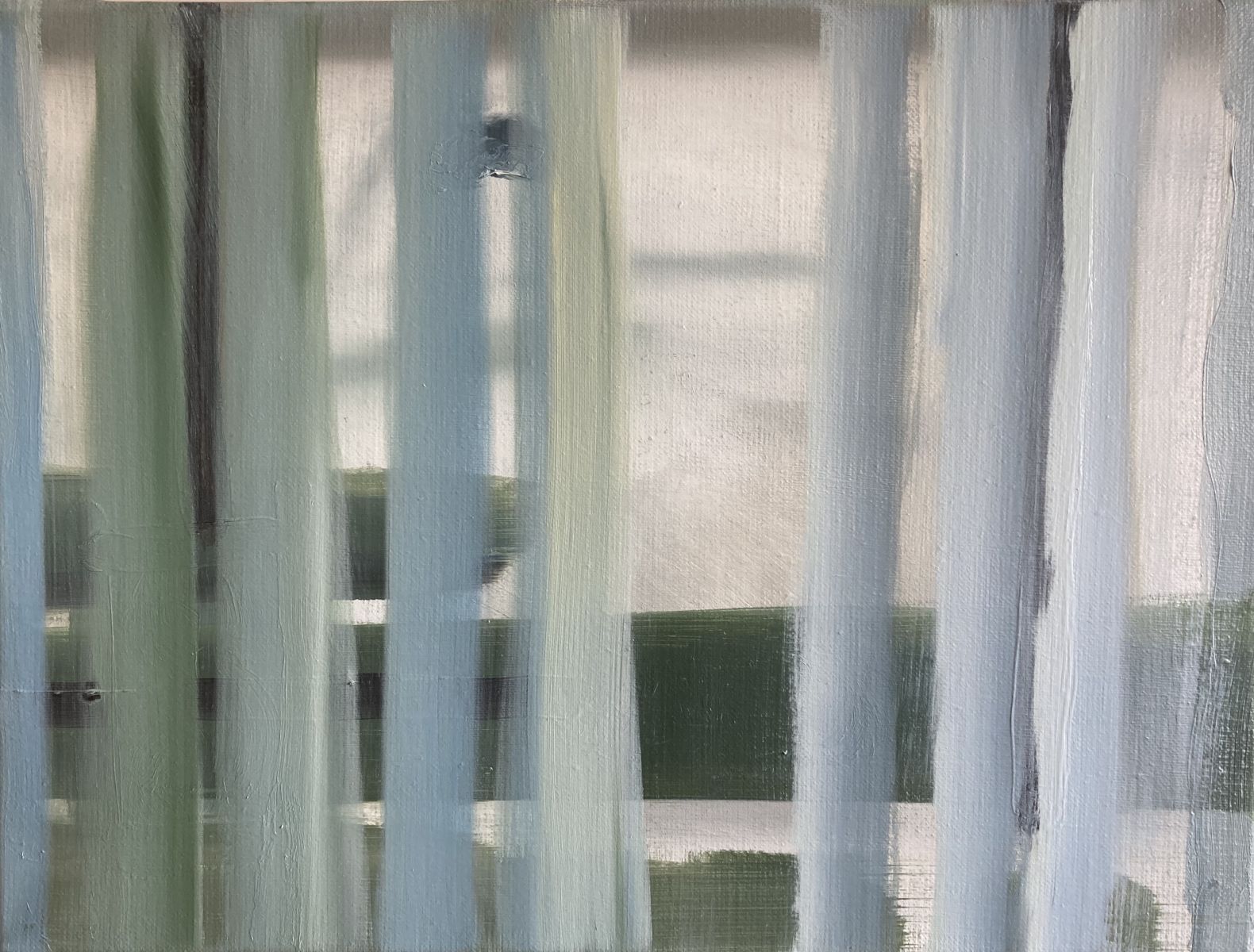
Raf Thys
Untitled (2009-2023
Oil on canvas, 30 x 40 cm
%20raf%20adj.jpg)
Text (NL/UK) about Raf Thys
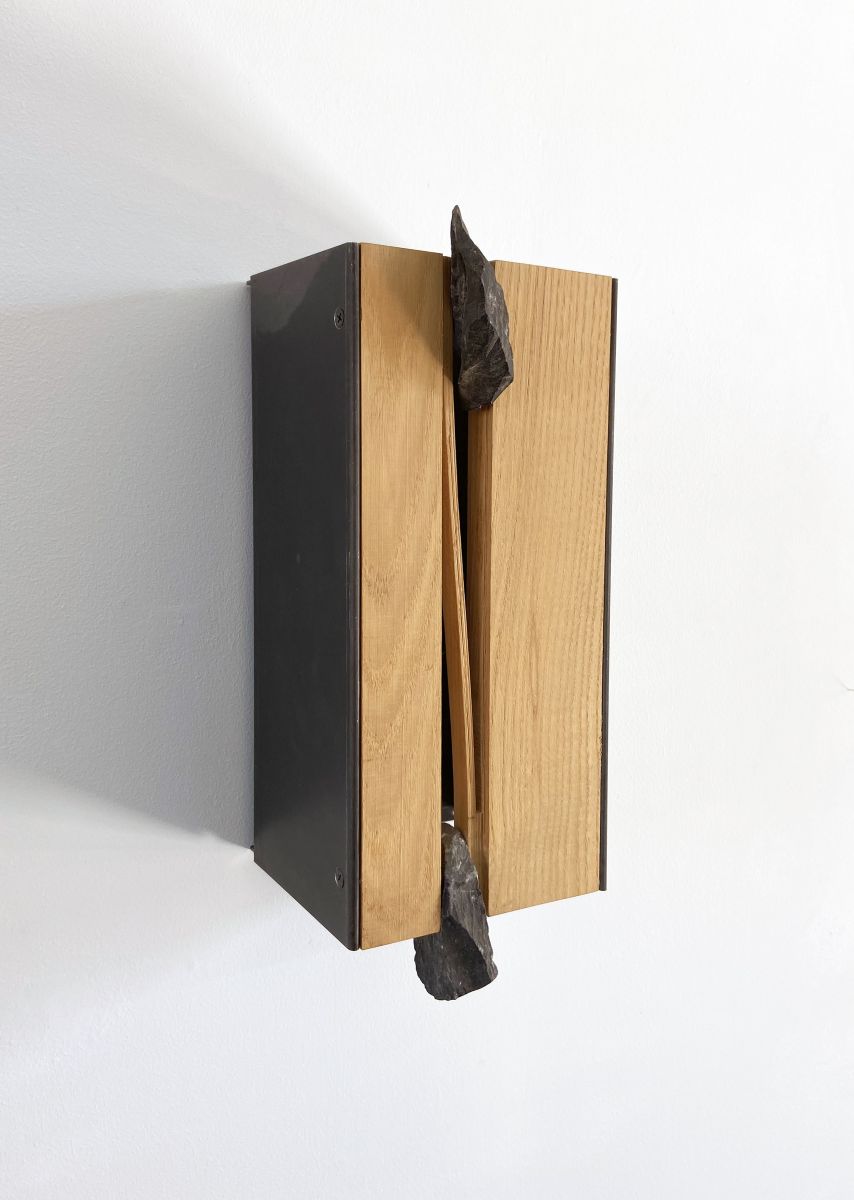
Paul Gees
‘Front 2' (2006)
Steel, wood. stones, 28 x 15 x 15 cm

Paul Gees
‘Gordijnspie’ (2009)
Steel, wood, stone, 32 x 21,5 x 9 cm
.jpg)
Paul Gees
Untitled (1992)
Various materials on paper - Framed, 60 x 48 cm

Paul Gees
Untitled (2006)
Various materials on paper - Framed, 60 x 48 cm
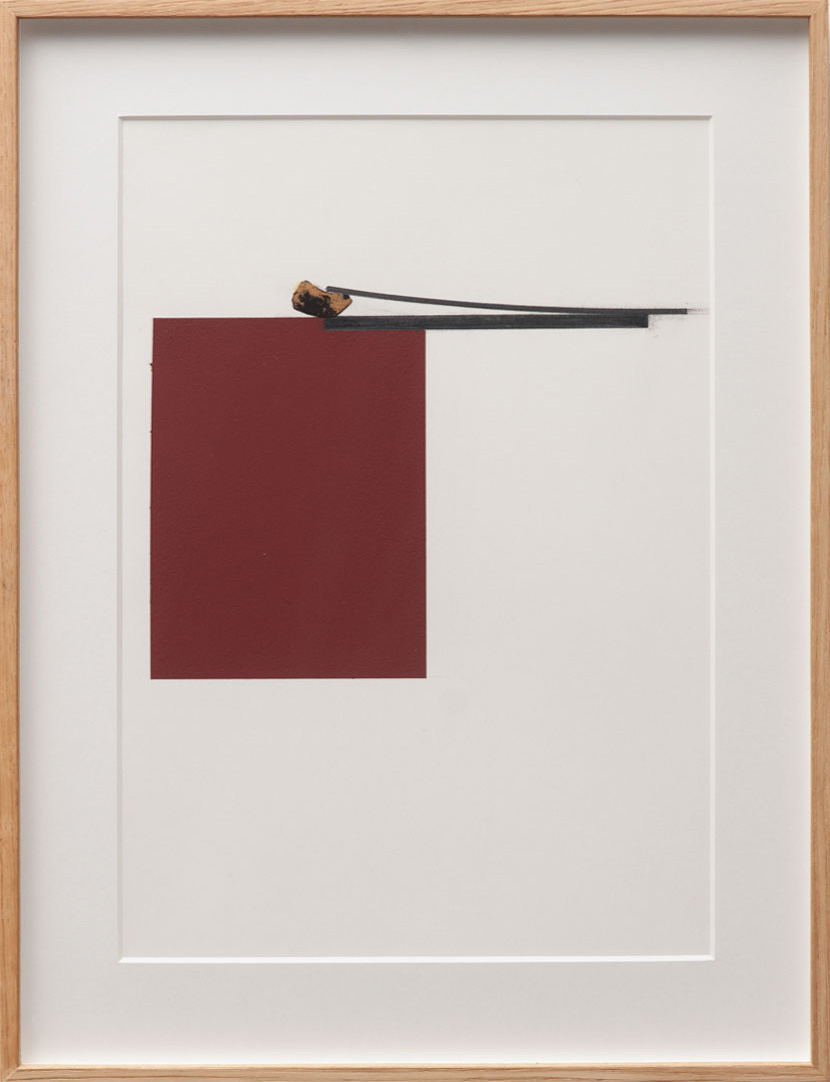
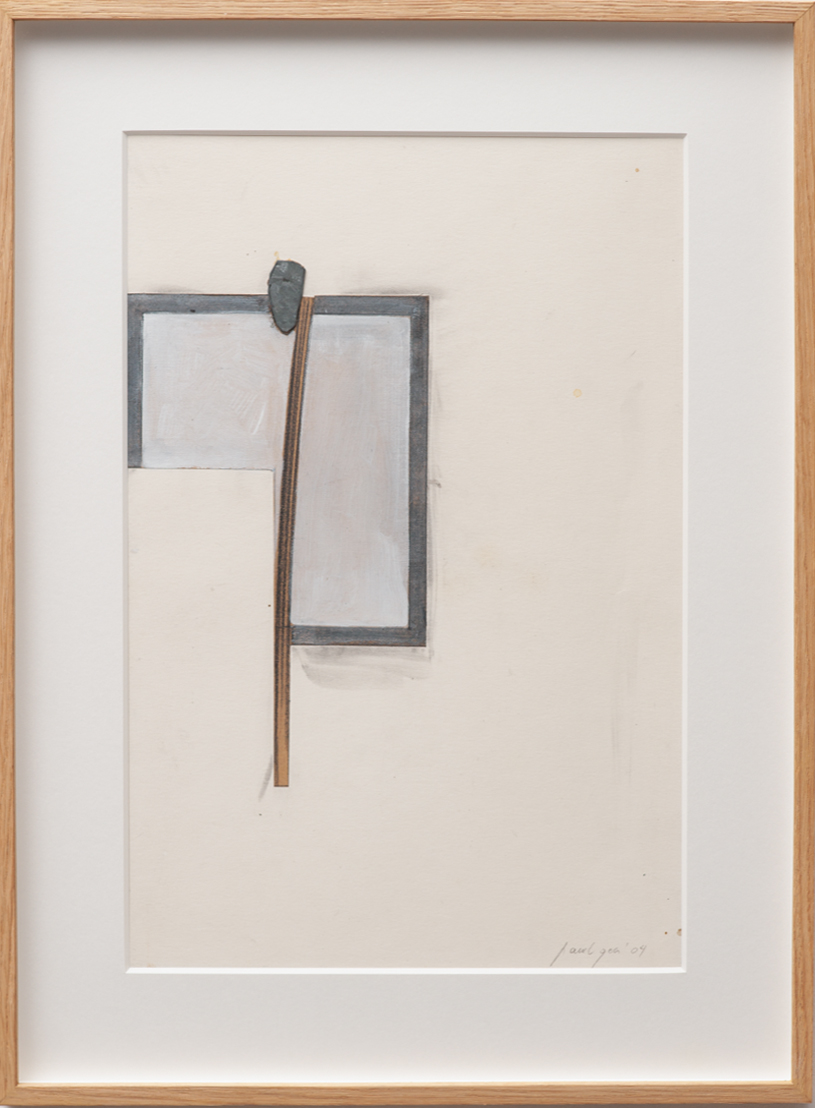
Paul Gees
L: Untitled (2003), various materials on paper, 54 x 41 cm
R: Untitled (2009), various materials on paper, 54 x 41 cm
Text (NL/UK) about Paul Gees
18/09 > 18/10
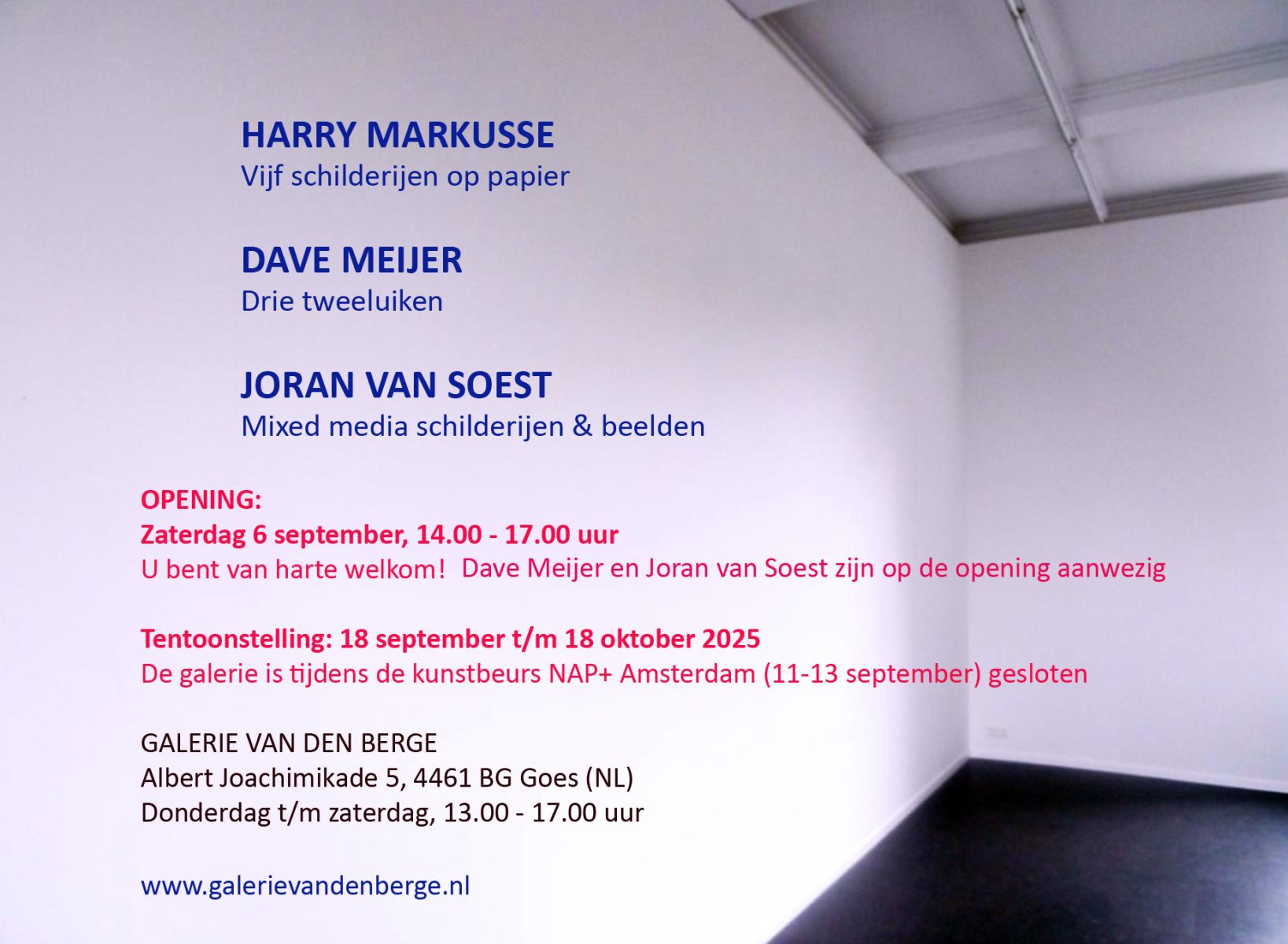
Harry Markusse - schilderijen op papier / paintings on paper
Dave Meijer - schilderijen / paintings
Joran van Soest - mixed media schilderijen / mixed media paintings
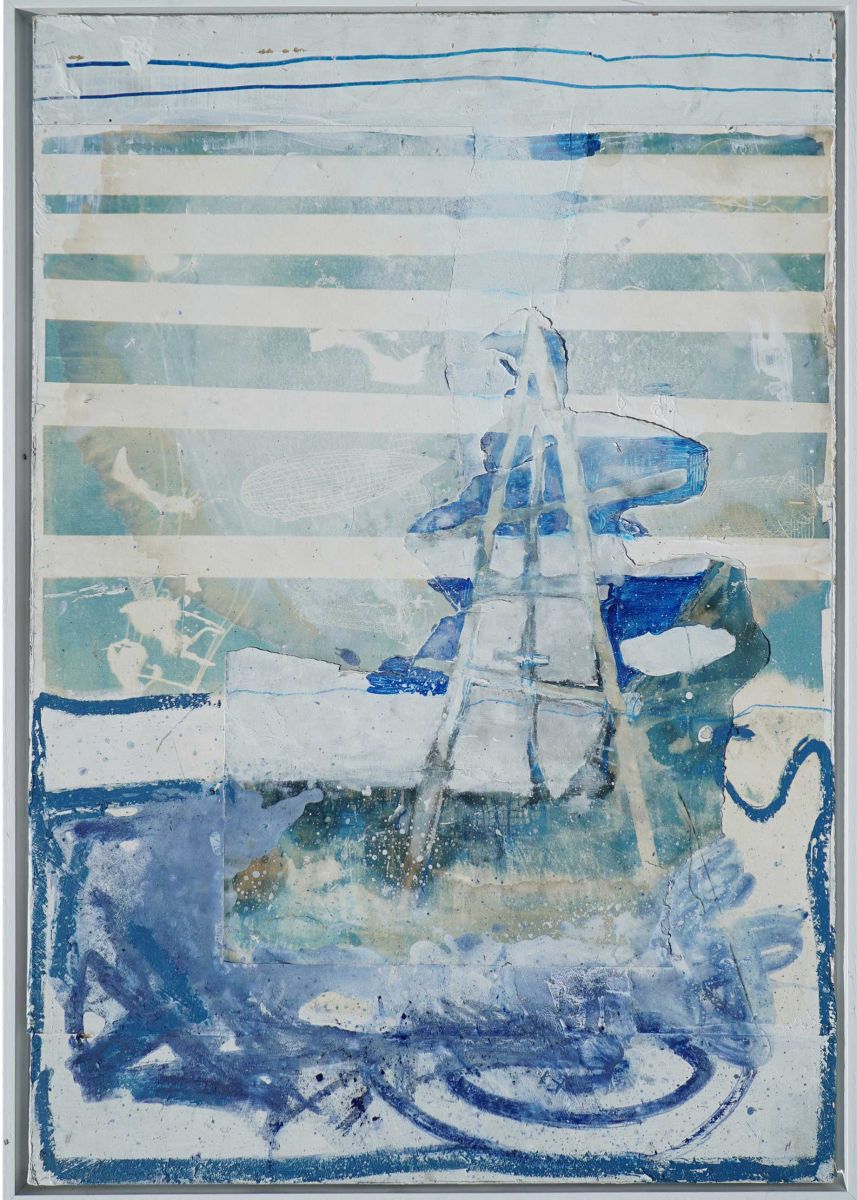
Joran van Soest
‘Scope’ (2025)
Acrylic paint, blueprint, print, paper, charcoal, pastel, pencil and ink on panel, white floating frame
87 x 62,5 cm
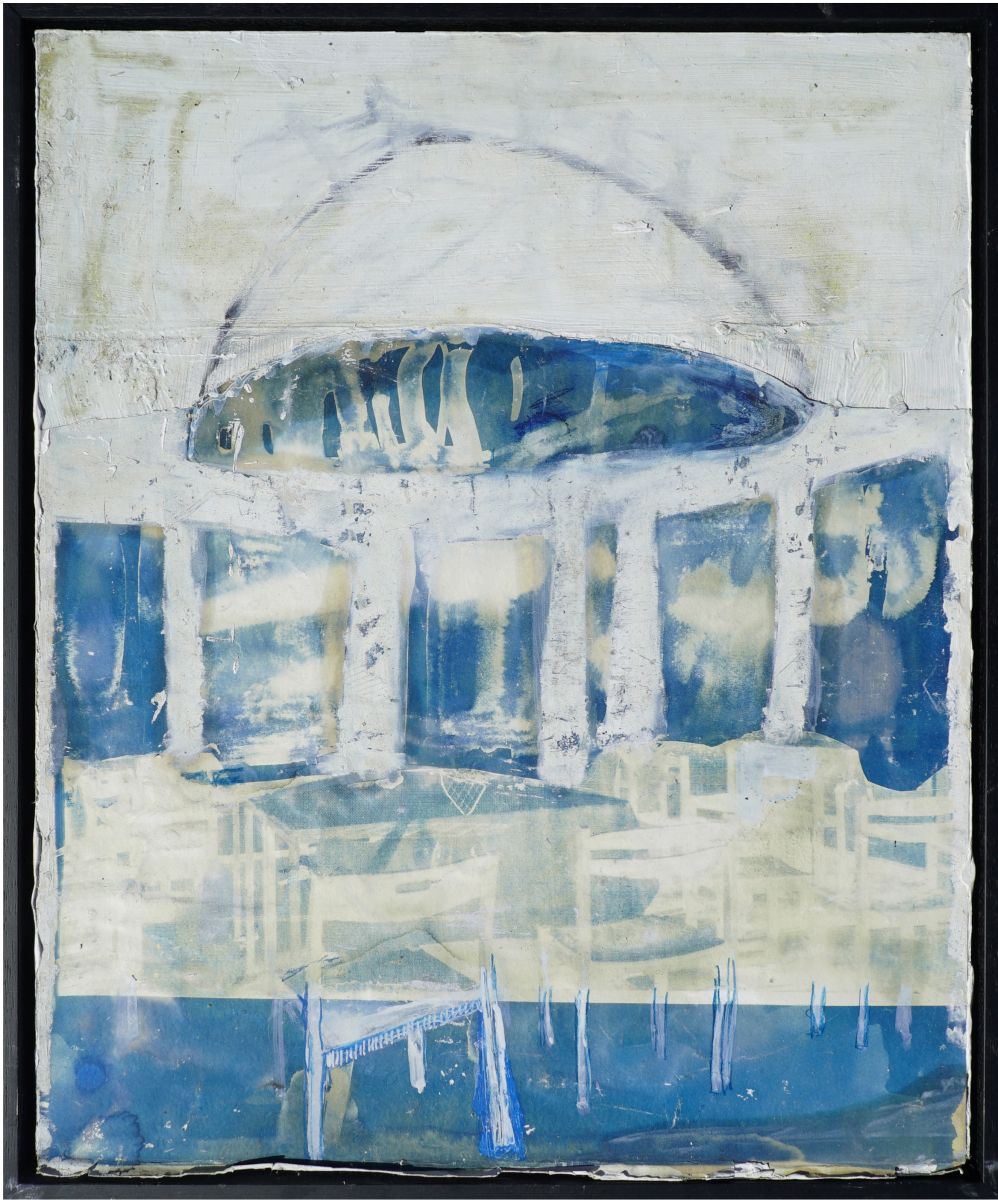
Joran van Soest
Untitled (2025)
Acrylic, pencil, ink, pastel, marker, cyanotype on panel, black floating frame
61 x 50 cm
Joran van Soest
De intersubjectieve ruimte - welk doel heeft deze ruimte tussen ons? Waar trekken we onze grenzen, overschrijden we de comfortzone van een ander of dringen we daar binnen? Zou dat een comfortabele, ongemakkelijke of zelfs uitdagende ruimte zijn om in te verkeren? De kunstenaar onderzoekt deze ‘intersubjectieve ruimte’ via verschillende media, waarbij hij tekenen, schilderen, collage, fotografie, performance en film combineert. Een dergelijke benadering daagt ruimtelijke grenzen en de eigen individuele beperkingen van de kunstenaar uit. De toeschouwer wordt geconfronteerd met de ruimte die wordt gepresenteerd en hoe hij zich daartoe verhoudt.
Joran van Soest (1994) is een in Nederland geboren kunstenaar die in 2018 afstudeerde als beeldend kunstenaar aan de Kunstacademie AKV St. Joost in 's-Hertogenbosch. Zijn relatie tot zijn omgeving staat centraal in zijn onderzoek. Van onschuldige oorsprong tot een complexe volwassenheid, fysiek gezelschap tot bedachtzame contemplatie en onderdanige macht versus overweldigende dominantie. Joran beweegt zich tussen deze uitersten en definieert zijn eigen definitie van intersubjectieve ruimte. Zijn werk resulteert in een reis die bestaat uit verschillende lagen van (on)bedoelde confrontaties met lichamelijkheid en de krachtige beeldtaal die de aandacht van de kijker opeist en vasthoudt.
The intersubjective space - what purpose does this space hold between us? Where do we draw our boundaries, transcend or penetrate another’s comfort zone. Would that be a comfortable, awkward or even challenging space to be in? The artist researches this ‘intersubjective space’ through the various media, combining drawing, painting, collage, photography, performance and film. Such an approach challenges spatial limits and the artist’s own individual constraints. The viewer is left with a confrontation between the space that is presented and how they may relate to it.
Joran van Soest (1994) is a Dutch born artist who graduated as a visual artist in 2018 from the Art Academy AKV St. Joost in Hertogenbosch. His relationship to his surroundings has been the focal point of his research. From innocent origins to a complex adulthood, physical companionship to thoughtful contemplation and submissive power versus overriding dominance. Joran moves between these extremes and defining his own definition of Intersubjective Space. His work results in a journey existing of various layers of (un)intended confrontations with corporeality and the powerful visual language that demands and maintains the attention of the viewer.
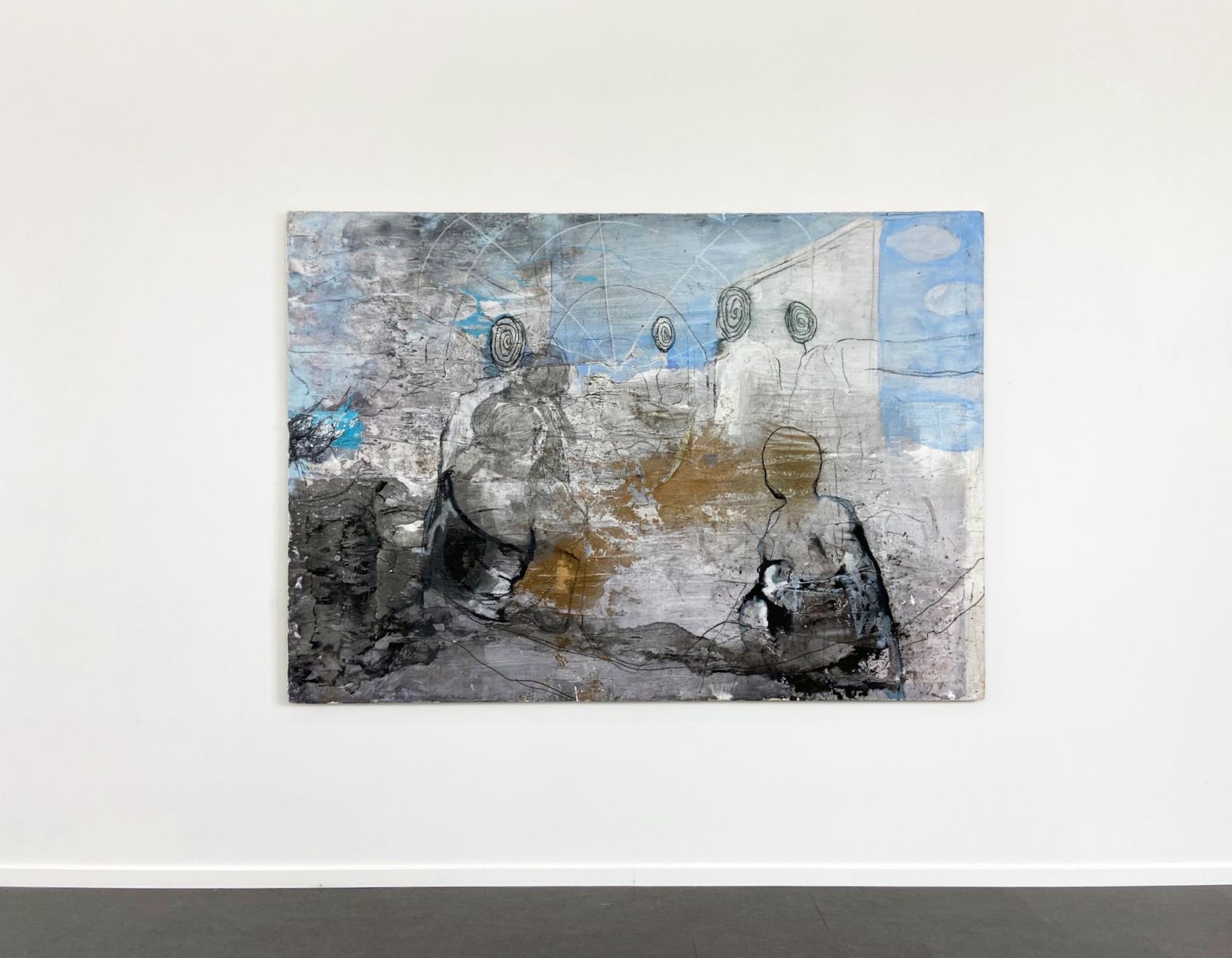
Joran van Soest
‘Meeting’ (2025)
Mixed media on panel, 145 x 206 cm
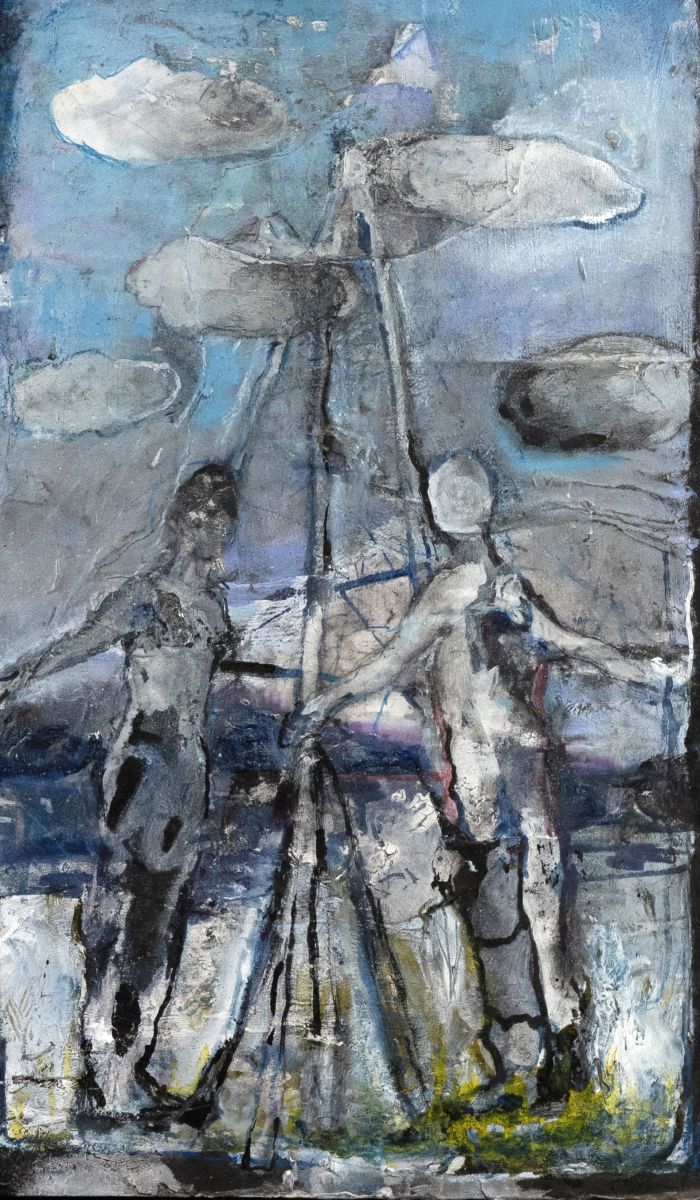
Joran van Soest
‘Connection’(2024)
mixed media on panel, 38 x 24 cm

Joran van Soest
Overview with ‘Zeppelin [floating]’ 2025
Mixed media, app. 69 x 30 x 30 cm
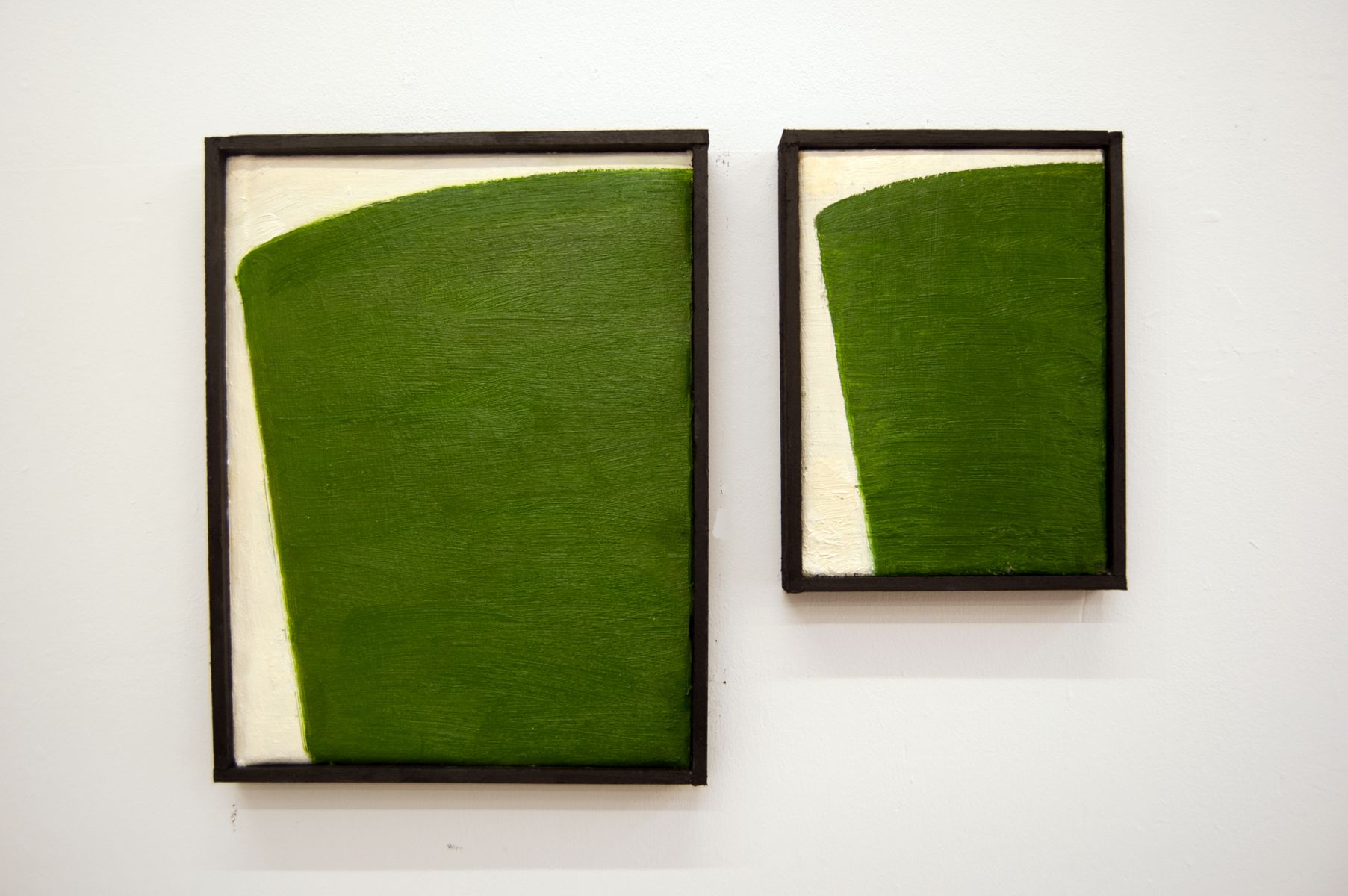
Dave Meijer
‘Een pas achteruit # 1’ (2025) - Dyptich
Oil on canvas on panel
Left: 39 cm x 30 cm, Right: 27,5 cm x 20,5 cm

Dave Meijer
‘Een pas achteruit # 2’ (2025) - Dyptich
Acrylic on canvas on panel
Left: 39 cm x 30,5 cm, Right: 27 cm x 21 cm
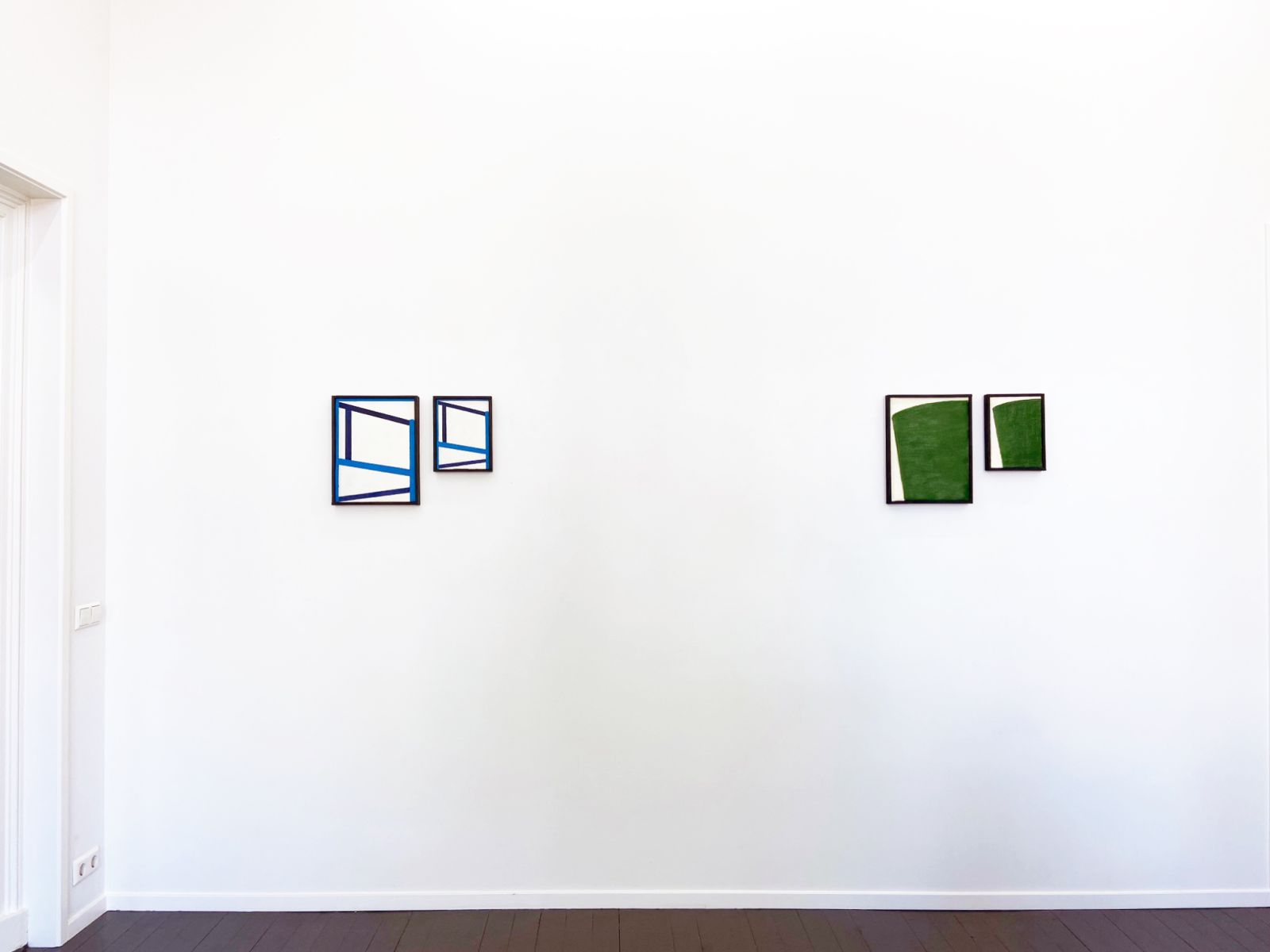
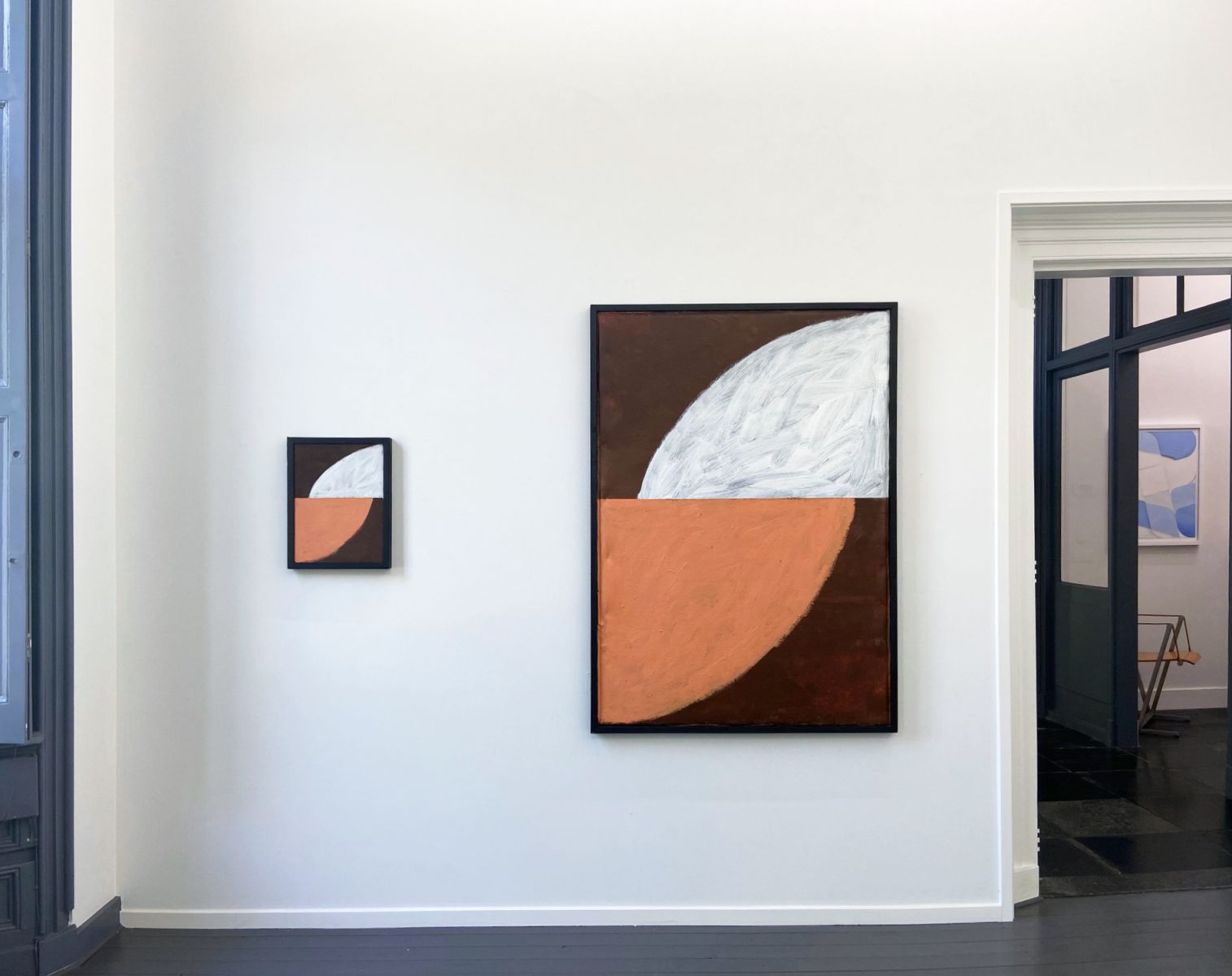
Dave Meijer
Veraf en dichtbij # 4 (2025) - Diptych
Acrylic and oil on canvas
Left: 44 x 34 cm
Right: 144 x 104 cm
Dave Meijer
Er zijn verschillende manieren om op het platte vlak de illusie van ruimte en diepte te creëren. Licht-donker contrast, atmosferisch perspectief, groot-klein, voorgrond-achtergrond, overlappen, afsnijden, hoger plaatsen, de diagonaal en het centraal perspectief, ………
Dit zijn beeldelementen die binnen het kader van een enkel schilderij kunnen worden toegepast. Alles is binnen dat ene kader tegelijkertijd aanwezig. Als een bevroren moment. Je kunt als het ware het beeldvlak in één oogopslag overzien. Er is sprake van een soort eenheid van ruimte en tijd.
Dave Meijer heeft die eenheid van ruimte en tijd letterlijk uit elkaar gehaald door een tweeluik te maken waarbij één beeld wordt getoond. Twee keer hetzelfde beeld maar dan niet binnen één en hetzelfde vlak maar binnen twee afzonderlijke kaders. Een grote en een kleine versie waardoor je dichtbij en verder weg ervaart. Het heeft iets filmisch. Hoe minimaal en eenvoudig ook.
Vrijwel ieder schilderij van Meijer is een fragment van een groter geheel. Ook hebben zijn beelden alles te maken met het zoeken naar ordening, compositie en structuur in de (zichtbare) buitenwereld. In zijn zwarte raamloze atelier kijkt hij tòch naar buiten. Vandaar de zwarte lijst die zich rond het werk bevindt.
There are various ways to create the illusion of space and depth on a flat surface. Light-dark contrast, atmospheric perspective, large-small, foreground-background, overlapping, cropping, placing higher, the diagonal and the central perspective, ………
These are visual elements that can be applied within the framework of a single painting. Everything is present within that one framework at the same time. Like a frozen moment. You can, as it were, survey the image plane at a glance. There is a kind of unity of space and time.
Dave Meijer has literally taken that unity of space and time apart by creating a diptych in which a single image is shown. Two of the same image, but not within one and the same plane, but within two separate frames. A large and a small version, allowing you to experience it up close and from further away. It has something cinematic about it. However minimal and simple it may be.
Almost every painting by Meijer is a fragment of a larger whole. His images also have everything to do with the search for order, composition and structure in the (visible) outside world. In his black windowless studio, he still looks outside. Hence the black frame around the work.
2025%2085%20x%2065%20cm%20acrylverf%20op%20papier%2C%20lijst%20met%20museumglas%20crop(1).jpg)
2025%2085%20x%2065%20cm%20acrylverf%20op%20papier%2C%20lijst%20met%20museumglas%20crop.jpg)
Harry Markusse
Left:
Untitled (blue/orange) 2025
Acrylic on paper, 85 x 65 cm, frame with museum glass
Right:
Untitled (blue/white) 2025
Acrylic on paper
85 x 65 cm, frame with museum glass
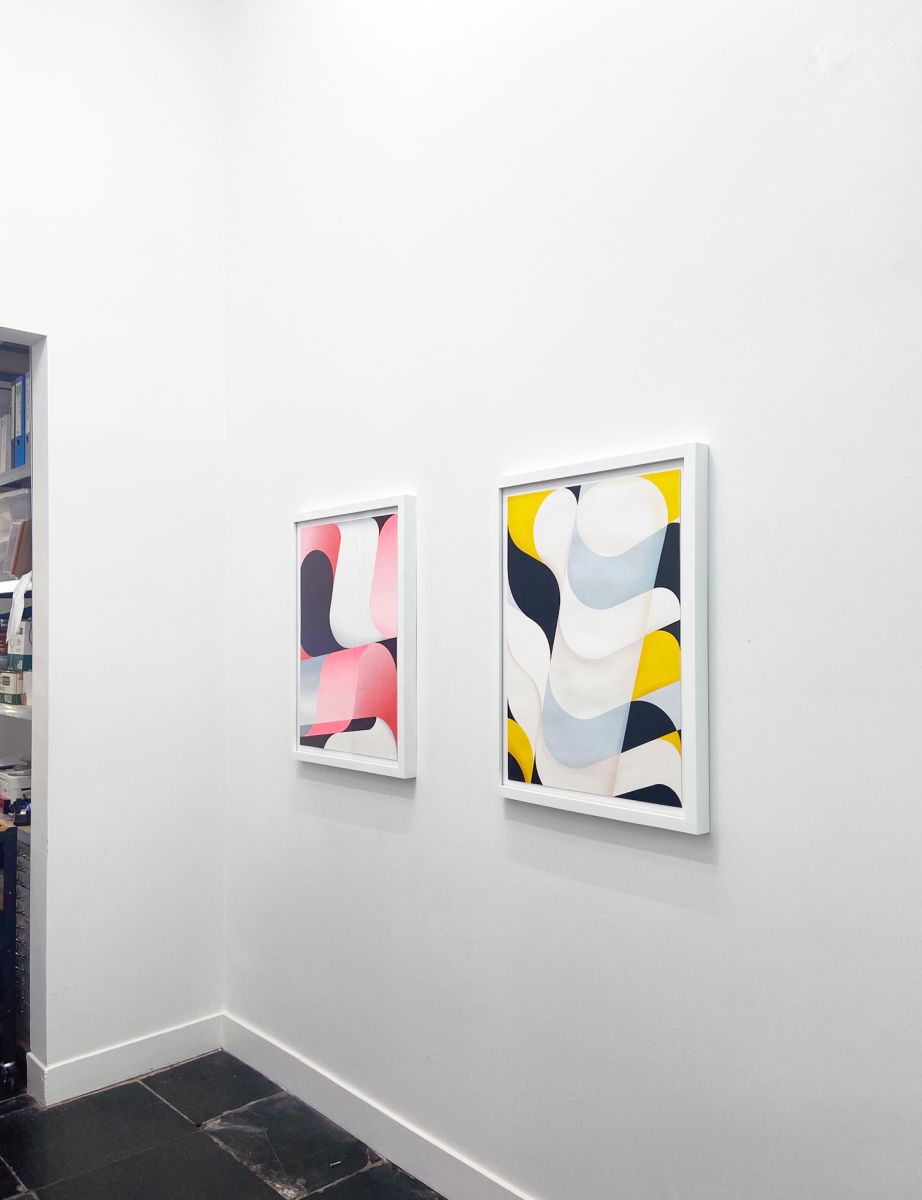
Harry Markusse
Left: Untitled [Red] - 2025
Acrylic on paper, frame with museumglass,85 x 65 cm
Right: Untitled [Yellow/Black] - 2025
Acrylic on paper, frame with museumglass,85 x 65 cm
Harry Markusse / Nieuwe schilderijen op papier.
Ik werk zonder een vooraf opgesteld plan, wat misschien tegenstrijdig lijkt voor iemand die strakke geometrische werken maakt. Hoewel mijn werk vaak strak oogt, bevatten ze imperfecties die energie en menselijkheid toevoegen.
In mijn praktijk speel ik met vorm, ruimte, geometrie en kleur. Ik ben gefascineerd door reflectie, concentrische vormen, symmetrie, het doorbreken daarvan, en de wisselwerking tussen positieve en negatieve ruimte, evenals kleurverloop.
De werken op papier ontstaan bij mij altijd op momenten dat ik voel dat er iets nieuws nodig is in mijn werk, maar nog niet precies weet wat dat is. Ik begin dan nog niet met nieuwe schilderijen op doek, maar geef mezelf dan eerst volledige vrijheid door te experimenteren op papier. Dit leidt vaak tot het ontstaan van nieuwe schildertechnieken of composities die uiteindelijk de basis vormen voor mijn schilderijen op doek.
De vijf werken die ik bij Galerie Van den Berge toon zijn het resultaat van een recente technische zoektocht. In deze serie onderzoek ik hoe ik met transparante lagen, een nat-in-nat kleurtechniek en zachte kleur verlopen (gradients en fades) nieuwe composities kan opbouwen. Door deze technieken met elkaar te combineren, probeer ik een gevoel van ruimte en diepte te suggereren, een terugkerend thema binnen mijn werk.
New paintings on paper
I work without a preconceived plan, which may seem contradictory for someone who creates rigid geometric works. Although my work often appears rigid, it contains imperfections that add energy and humanity.
In my practice, I play with form, space, geometry and colour. I am fascinated by reflection, concentric shapes, symmetry, breaking it, and the interaction between positive and negative space, as well as colour gradients.
The works on paper always arise at moments when I feel that something new is needed in my work, but I don't yet know exactly what that is. I don't start with new paintings on canvas, but first give myself complete freedom by experimenting on paper. This often leads to the creation of new painting techniques or compositions that ultimately form the basis for my paintings on canvas.
The five works I am exhibiting at Galerie Van den Berge are the result of a recent technical exploration. In this series, I investigate how I can build new compositions using transparent layers, a wet-on-wet colour technique and soft colour gradients and fades. By combining these techniques, I try to suggest a sense of space and depth, a recurring theme in my work.
%202025%2085%20x%2065%20cm%20acrylverf%20op%20papier%20lijst%20met%20museumglas%20(002)%20crop.jpg)
Harry Markusse
Untitled (Pink) 2025
Acrylic on paper, 85 x 65 cm, frame with museum glass
25/10 > 29/11
.jpg)
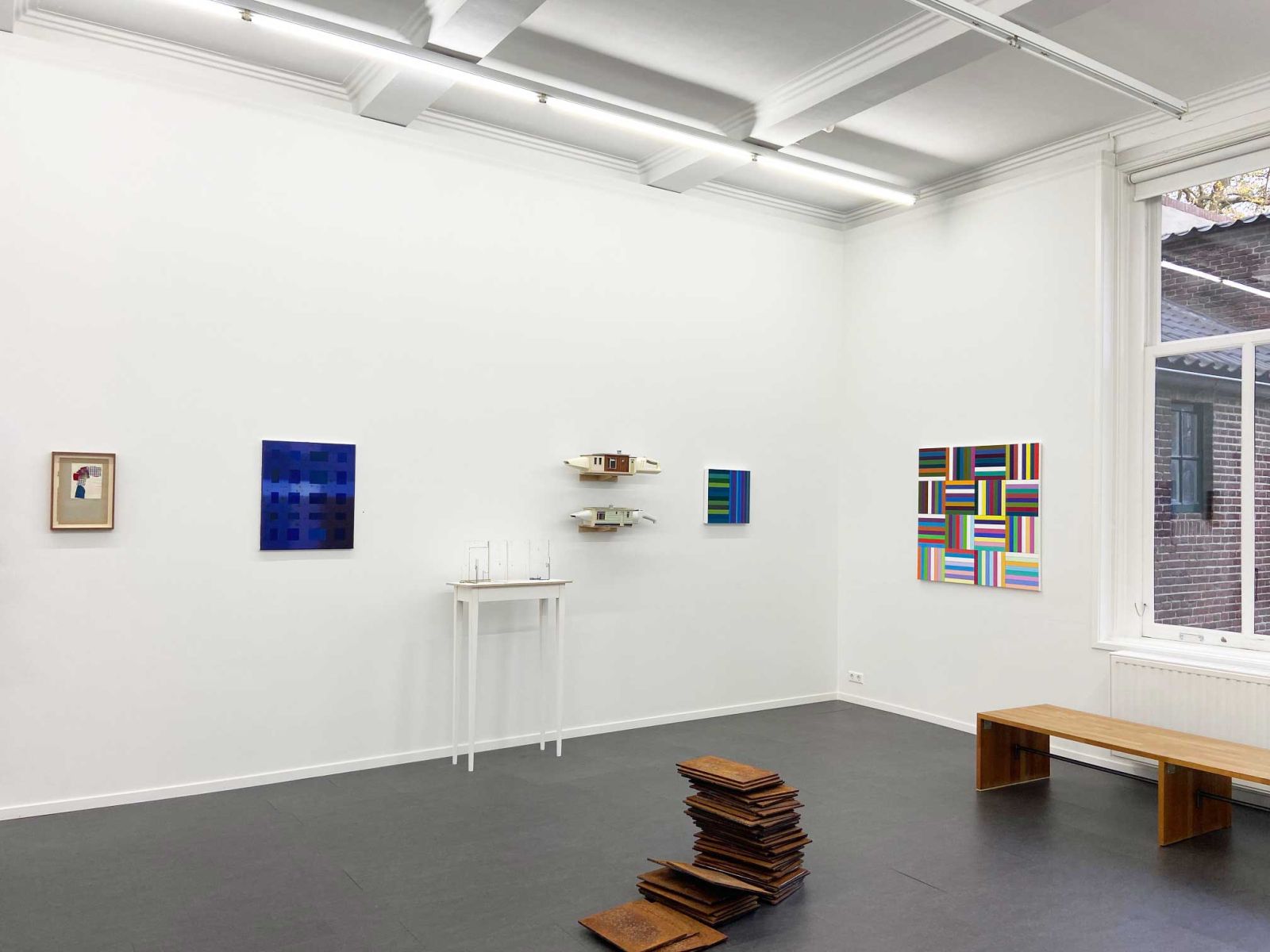
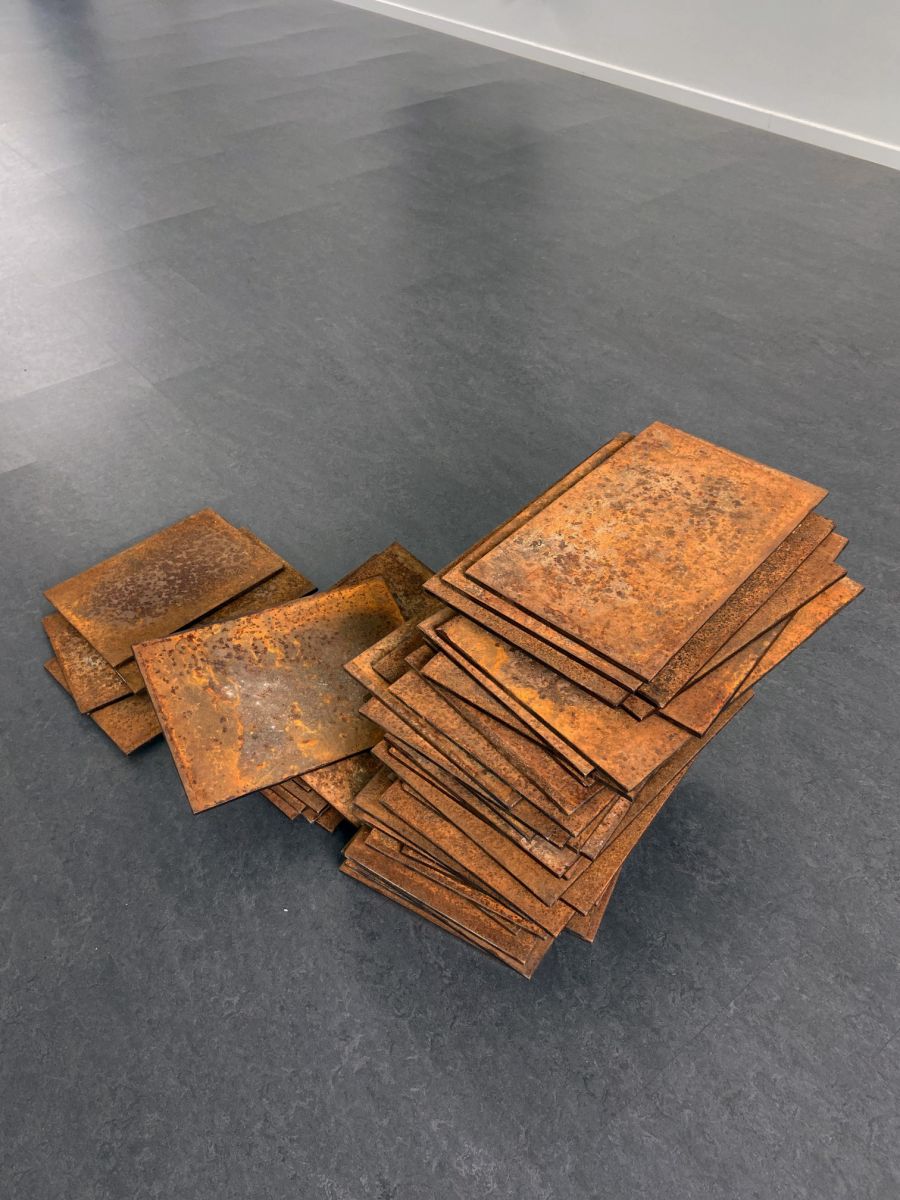
Tamara Dees
59 varieties of the size Oban
Steel, laquer, app. 40 x 110 x 60 cm
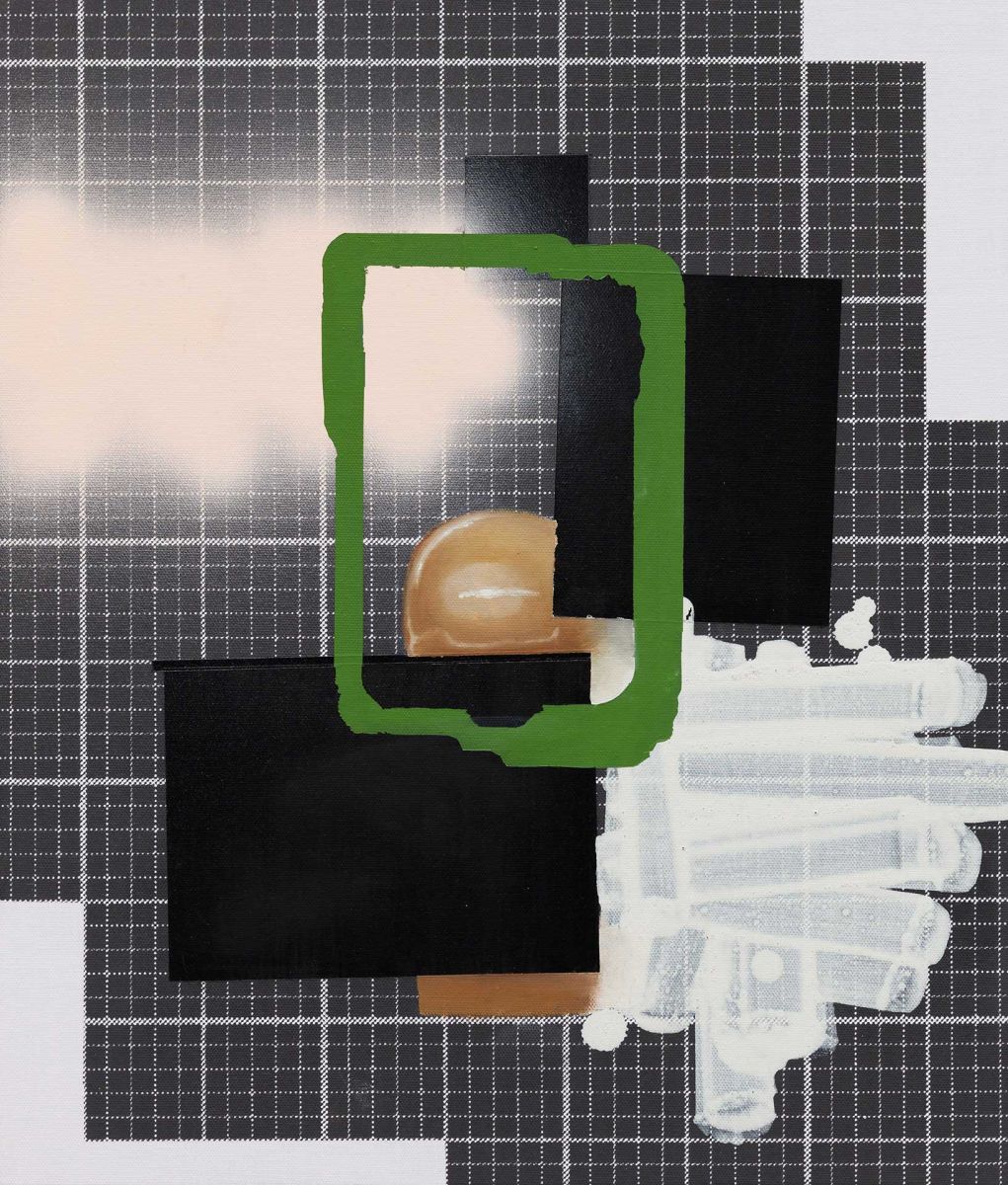
Wolfgang Ellenrieder
‘Schräge Ecken’ (2022)
Pigment, binder, oil and pigment print on linen, 47 x 40 cm
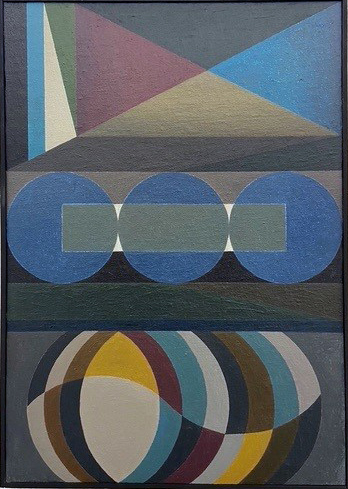
P.B. Van Rossem
Untitled tfs04 (2025)
Oil on canvas on panel, 40 x 28,2 cm
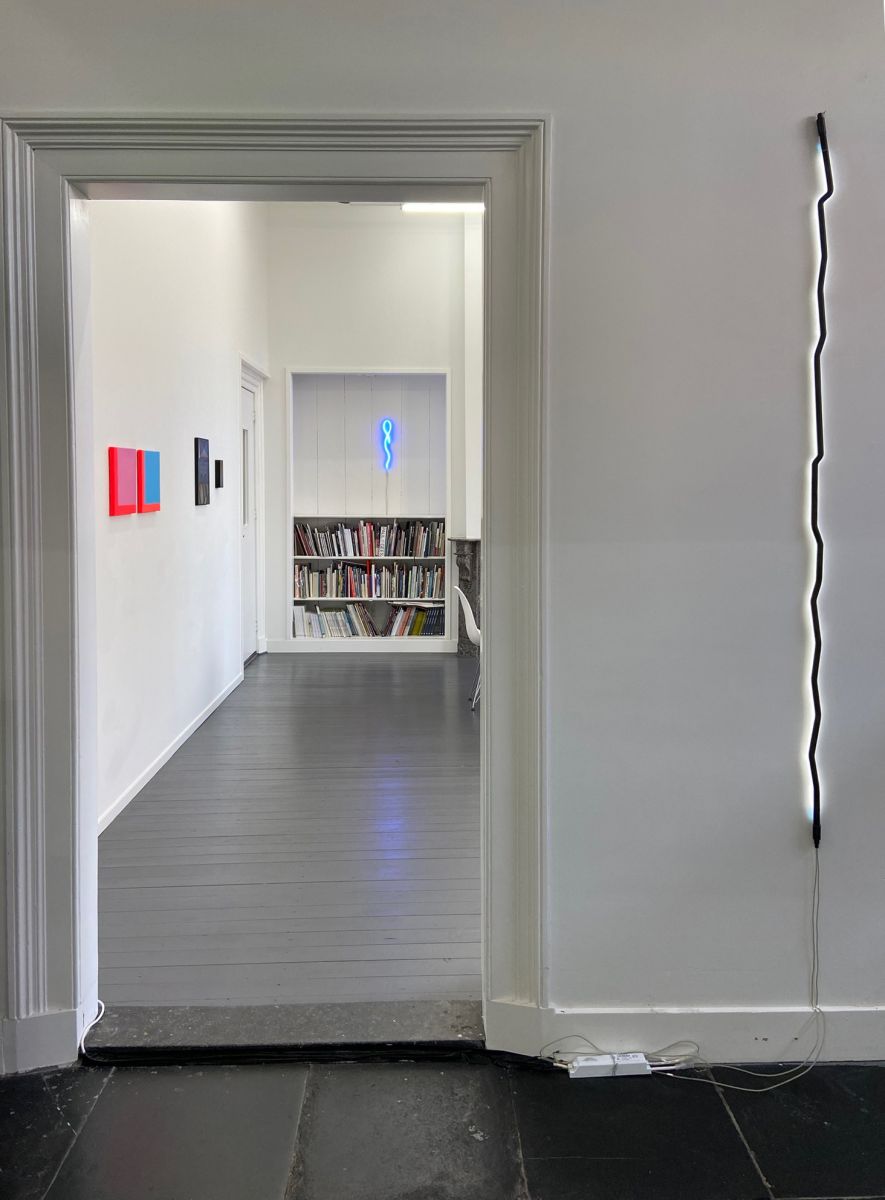
.jpeg)
.jpeg)
Jan van Munster
(L) ‘Behind Dark’ (2017) - Ed. 1/2, white glass, black paint, argon, transformer, H 190 cm
(R) 'Hanging Brainwave (2023) Ed. 4/ 6 (2023) , white glass, argon, nail, transformer, 50 x 7 cm
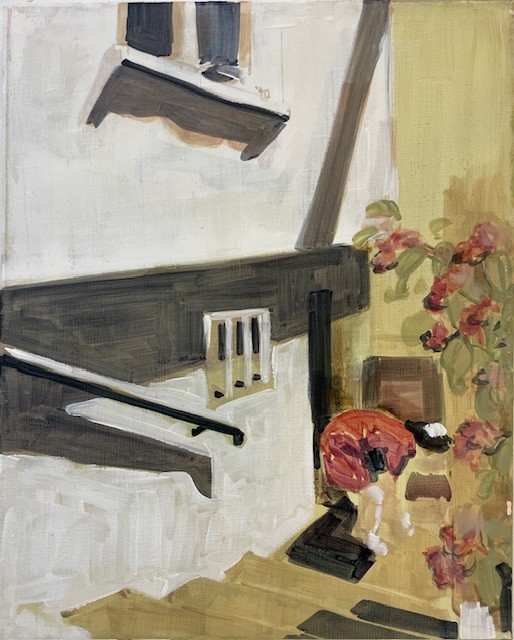
Nanda Runge
‘De lommerrijke scheve tuin van Nicole B. 1’ (2025)
Acrylic on canvas, 50 x 40 cm
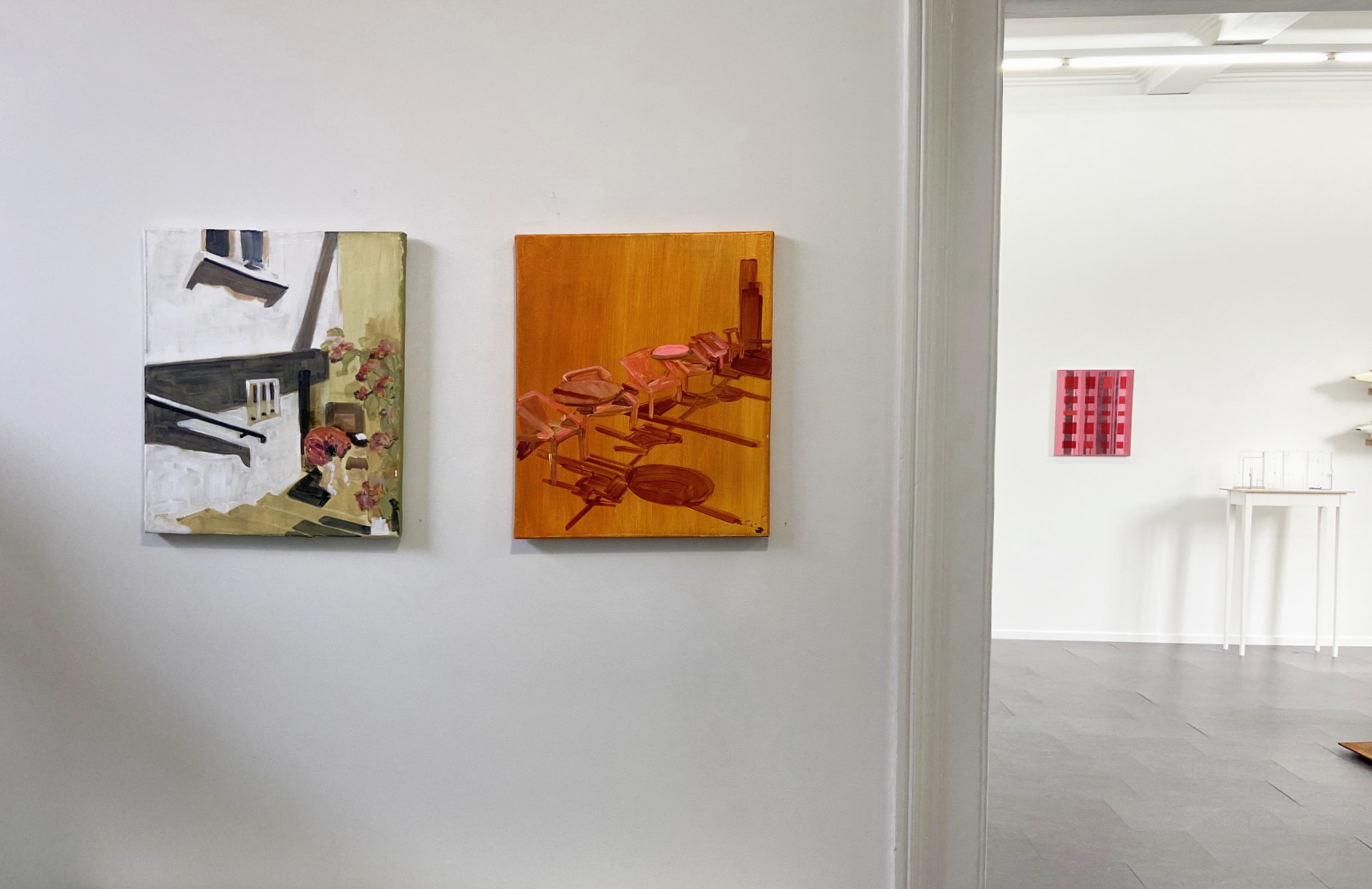
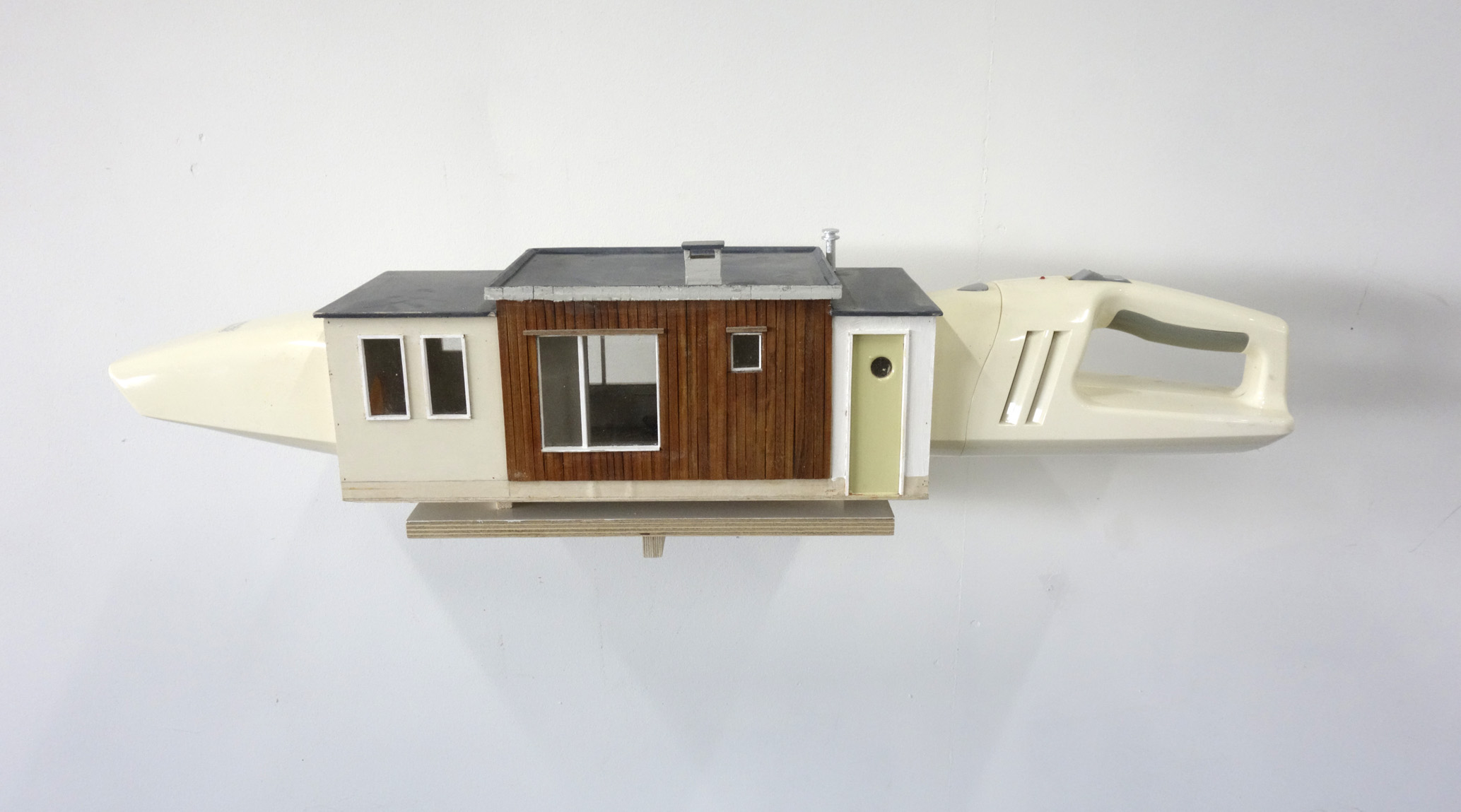
Frank Halmans
‘Kruimeldief / Dustbuster Quigg VC 5.05’( 2025)
Mixed media (Birch plywood, wood, latex, paint, glass, electronics), 74 x 16 x 16 cm
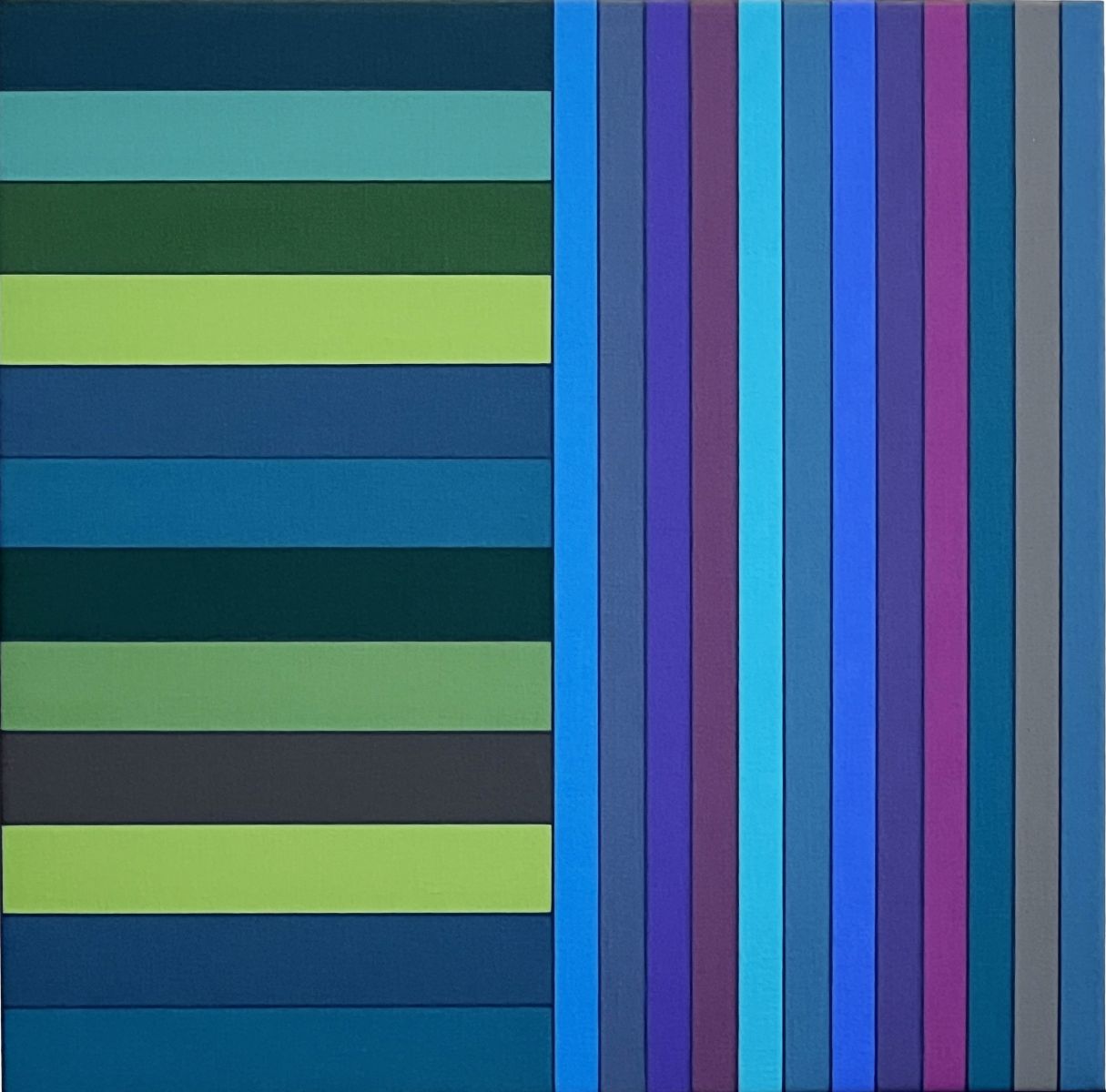
Ditty Ketting
Untitled 525 (2023)
Acrylic on linen, 40 x 40 cm Photo: Bob Goedewaagen
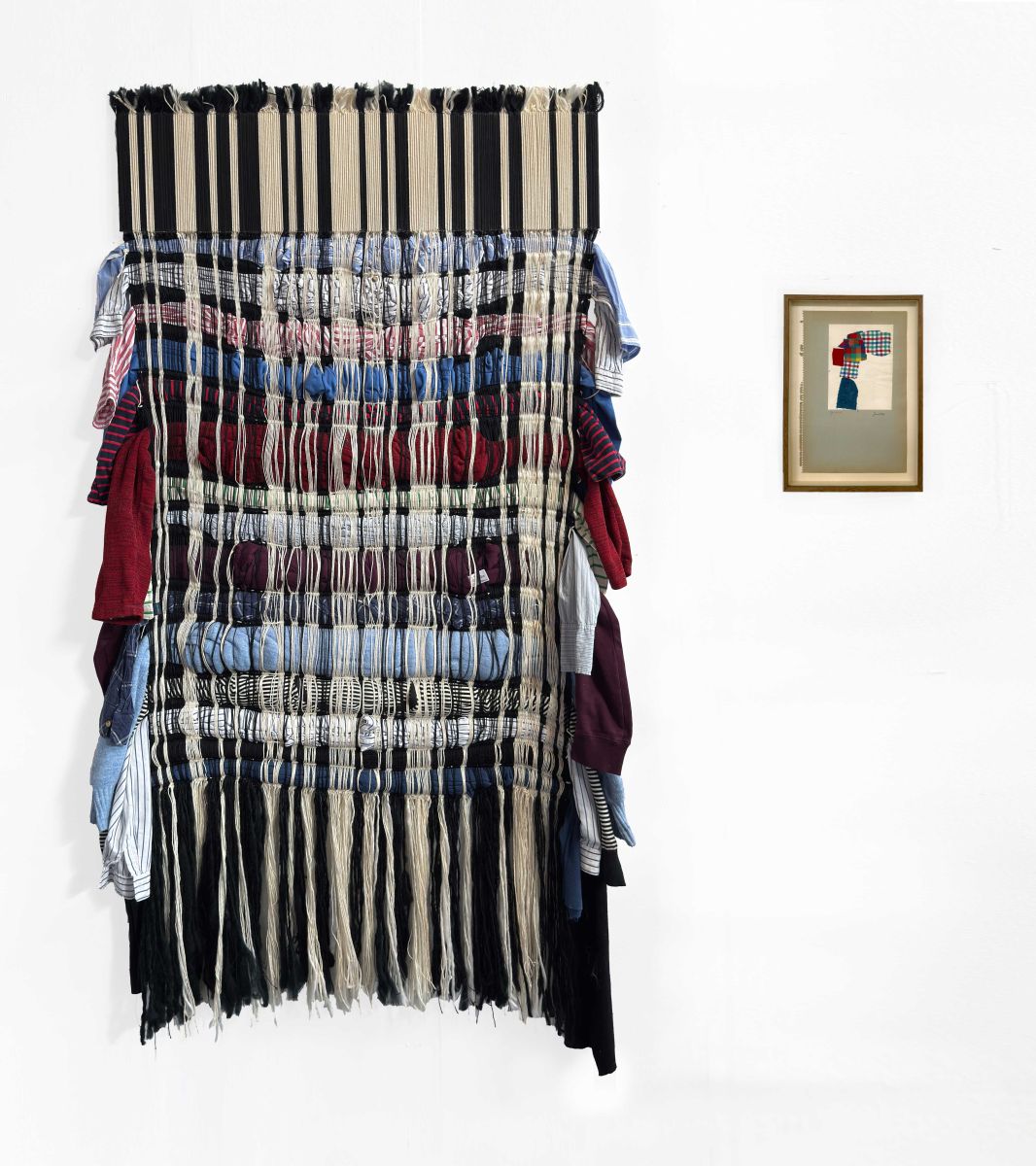
Mirjam Hagoort
ZIJ (01) AAN ZIJ (02) 1961/2023 (2025)
Diptych - Fabric, clothing & collage, 170 x 130 cm
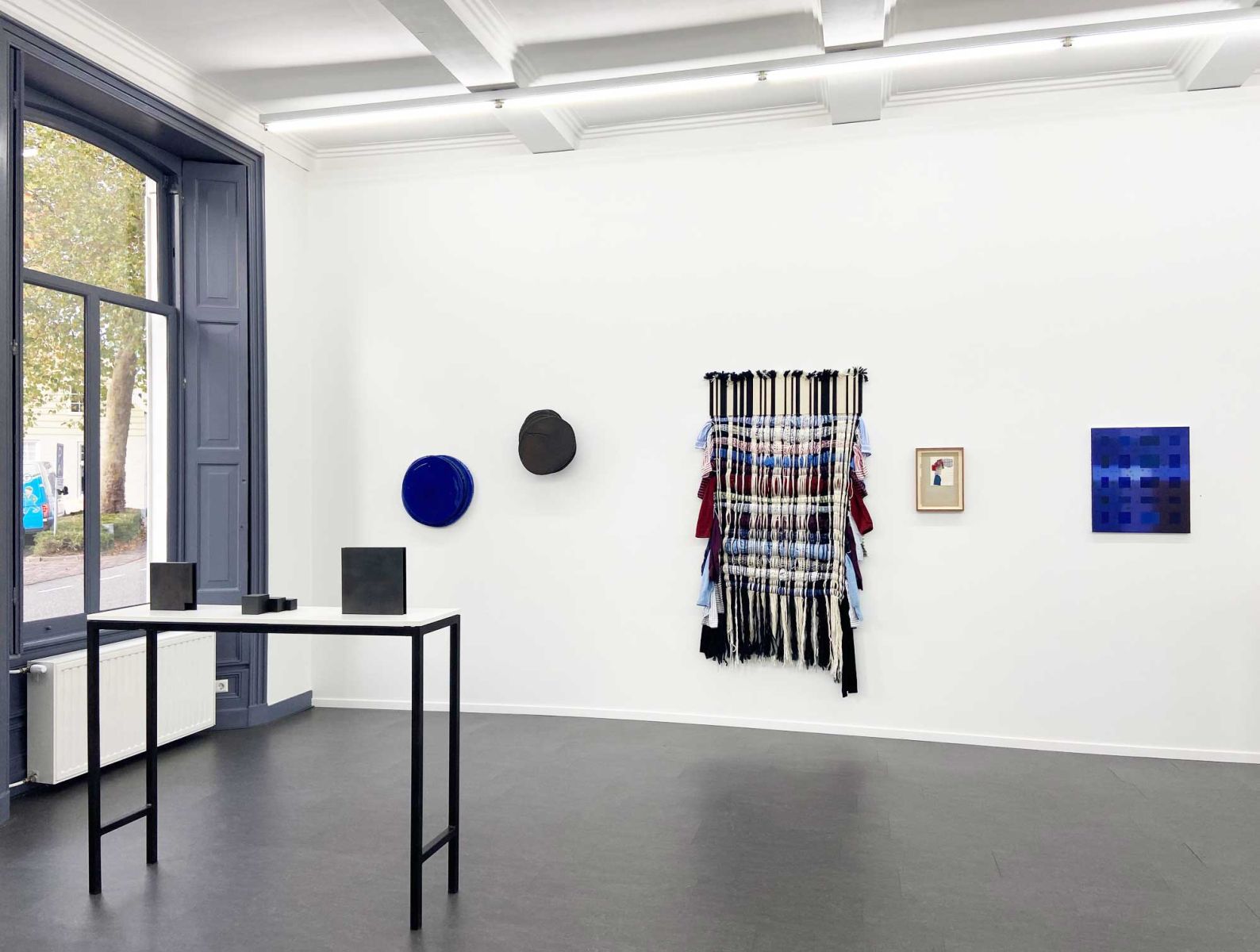
.jpg)
Ton van Kints
1+1+1 back to back, face to face # 8 (2024)
Epoxy laquer, DD laquer, paint, plywood, 54 Ø x 7 cm
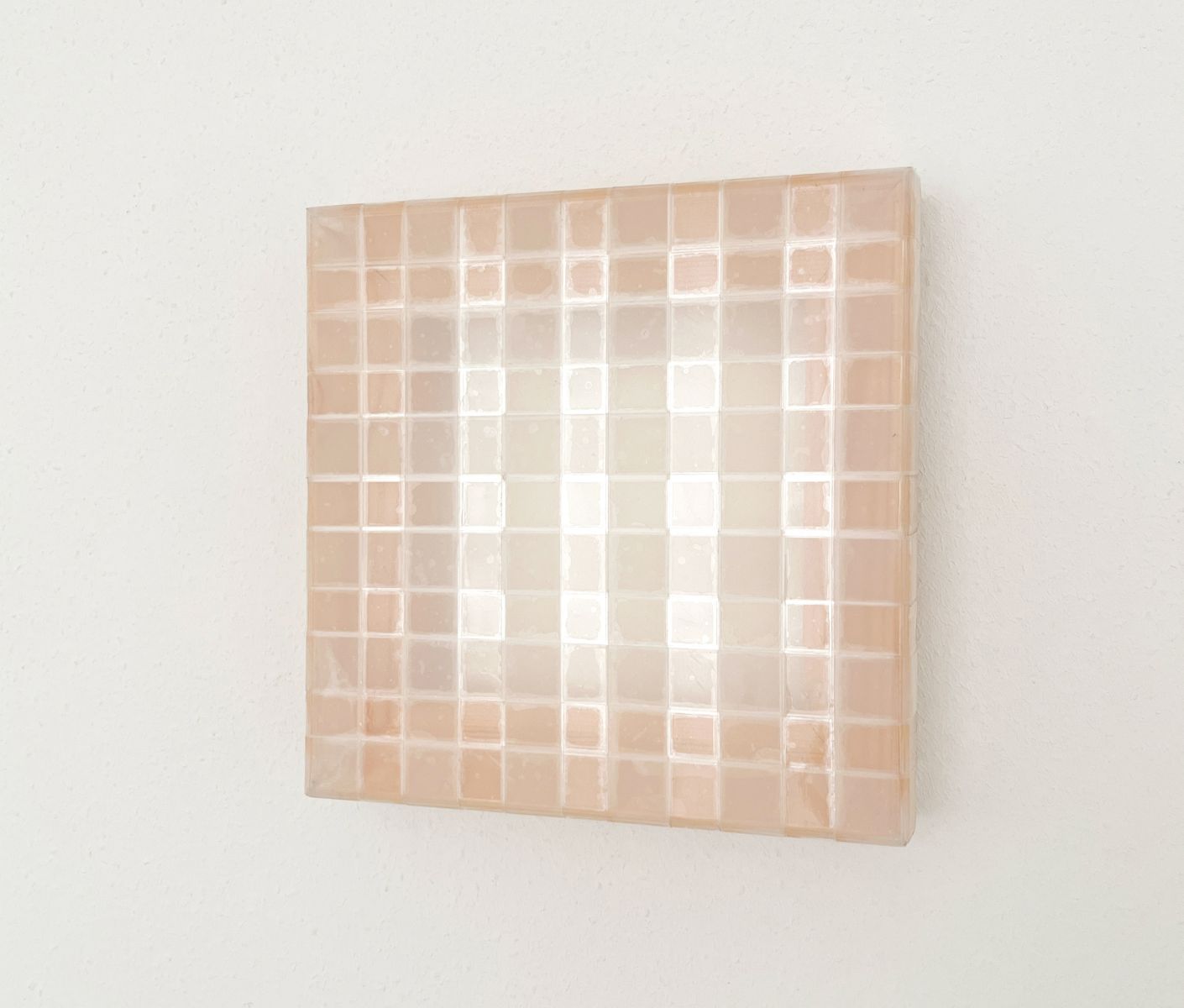
Clary Stolte
‘002541- Modulation 4 #12 / transparent’ (2025)
Tape on frame, 20 x 20 cm
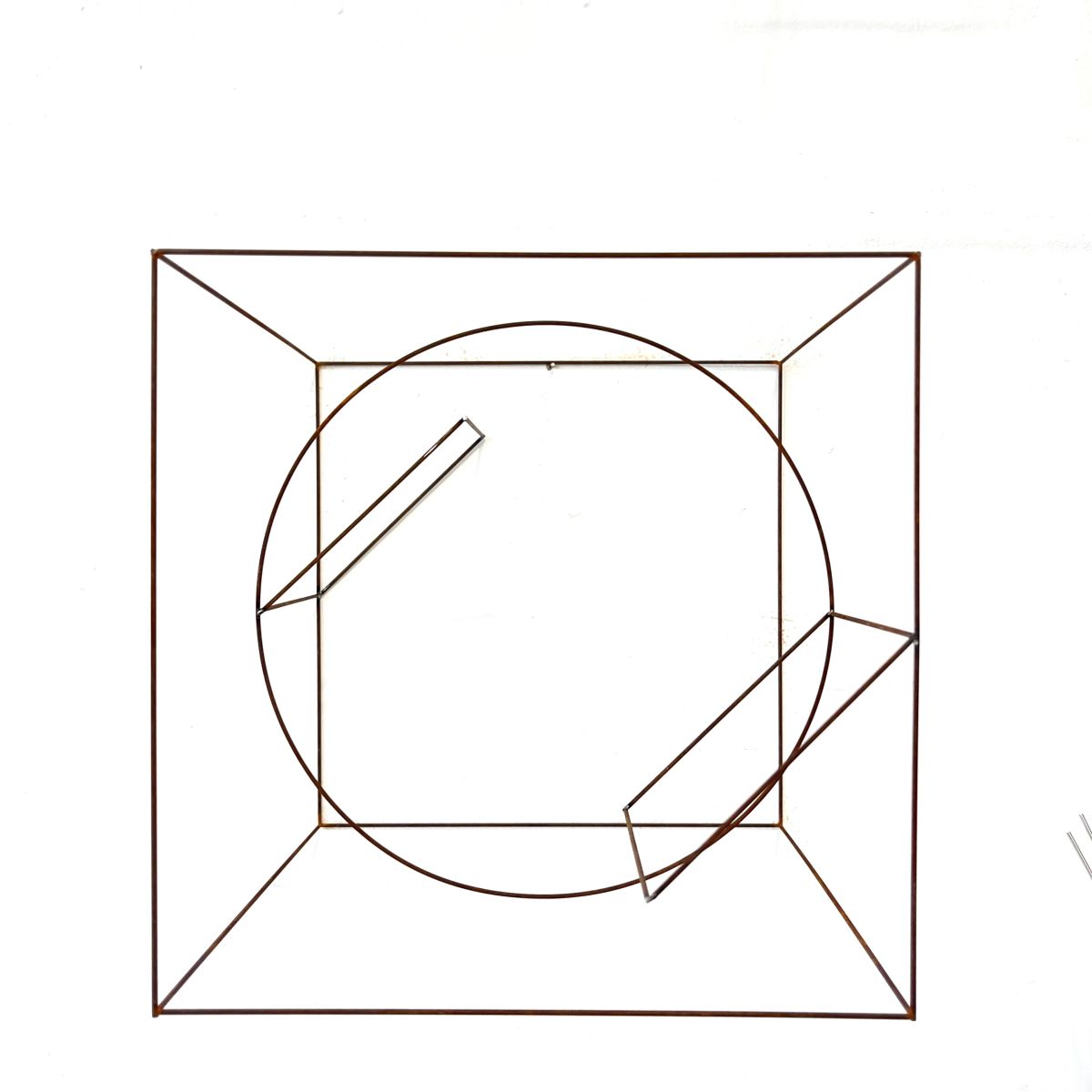
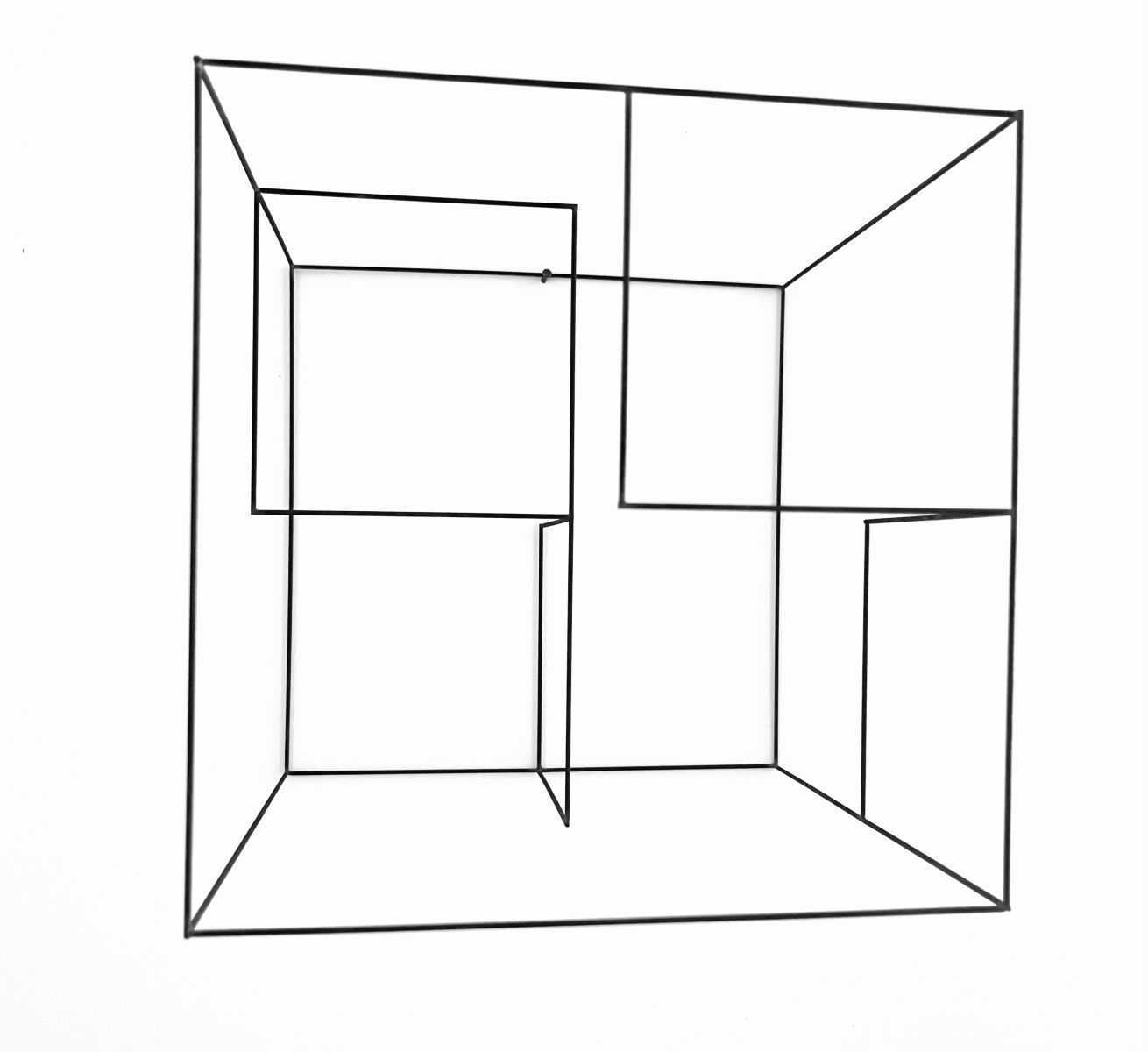
Anne Rose Regenboog
‘Cubes 06 & 05 (2025)
Steel wire, rust patina, 20 x 20 x 20 cm
.jpg)
Henriëtte van 't Hoog
‘Clouds (Purple, Gold) II’ (2023)
Aquarel, 70 x 50 cm - framed
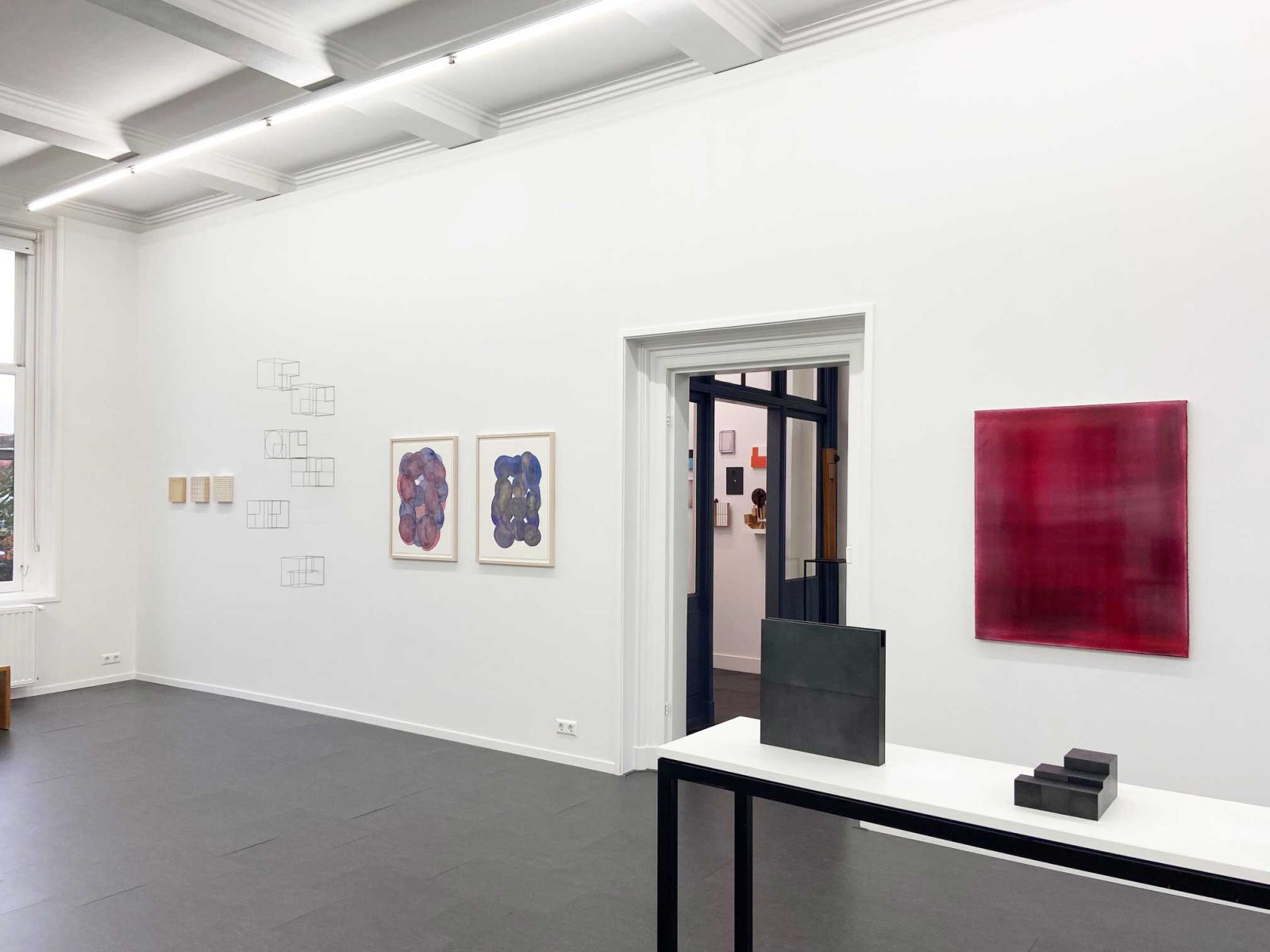
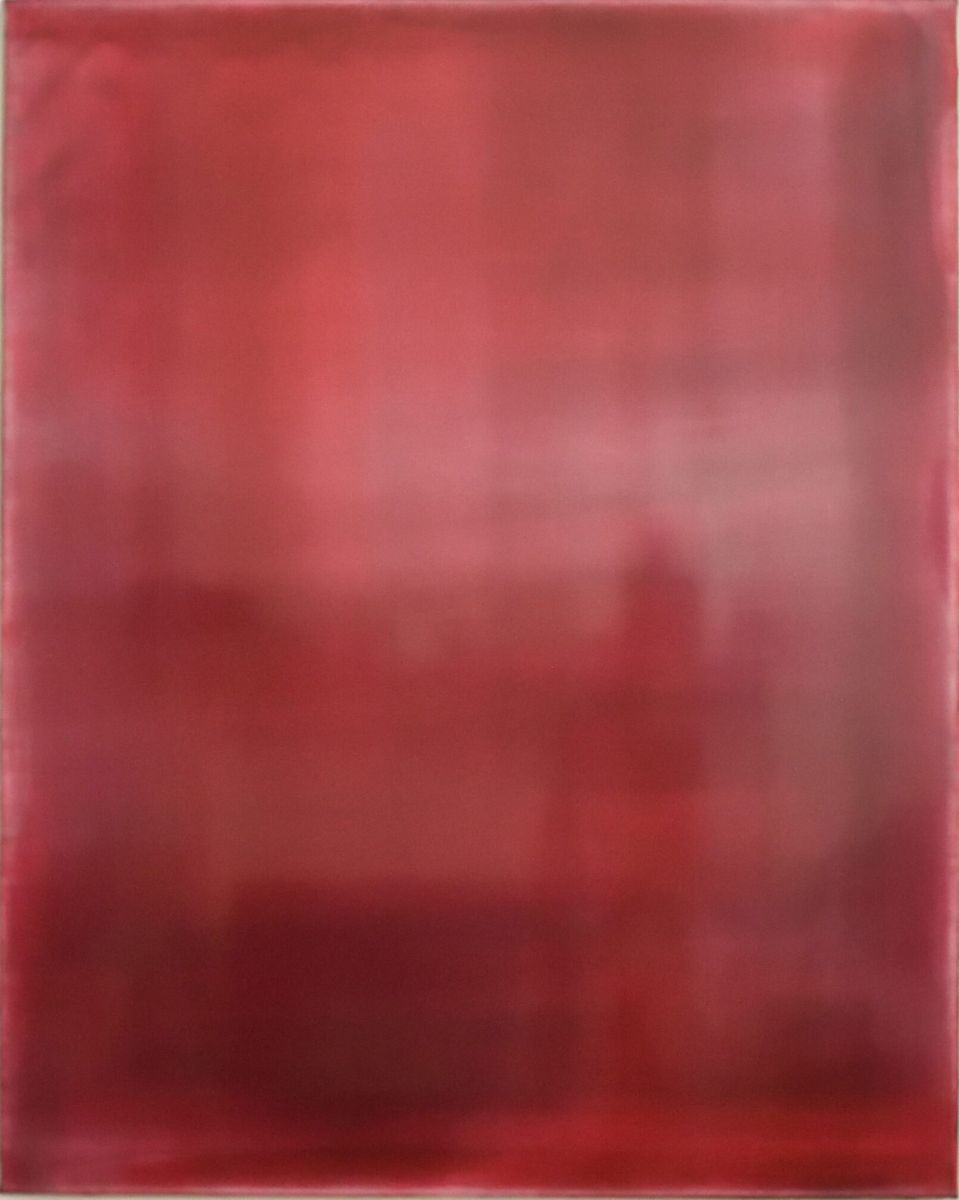
Jus Juchtmans
Untitled 20250430 (2025)
Acrylic on linen, 100 x 80 cm
%20md%20okl.jpeg)
Monika Dahlberg
‘Matumaini / Hope’ (2025)
Various materials, 44 x 14 x 17 cm
.jpeg)
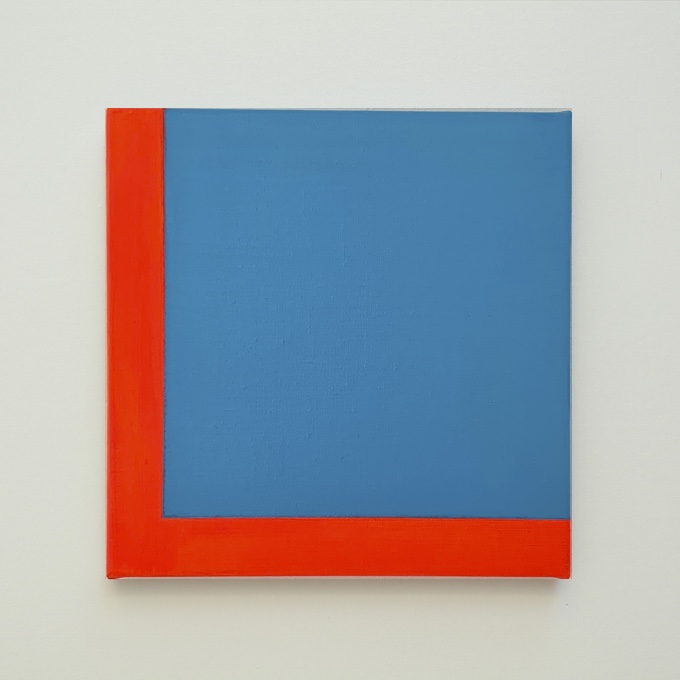
Martha Scheeren
Untitled 02 (2025) & Untitled 01 (2025)
Acrylic on linen, 30 x 30 cm
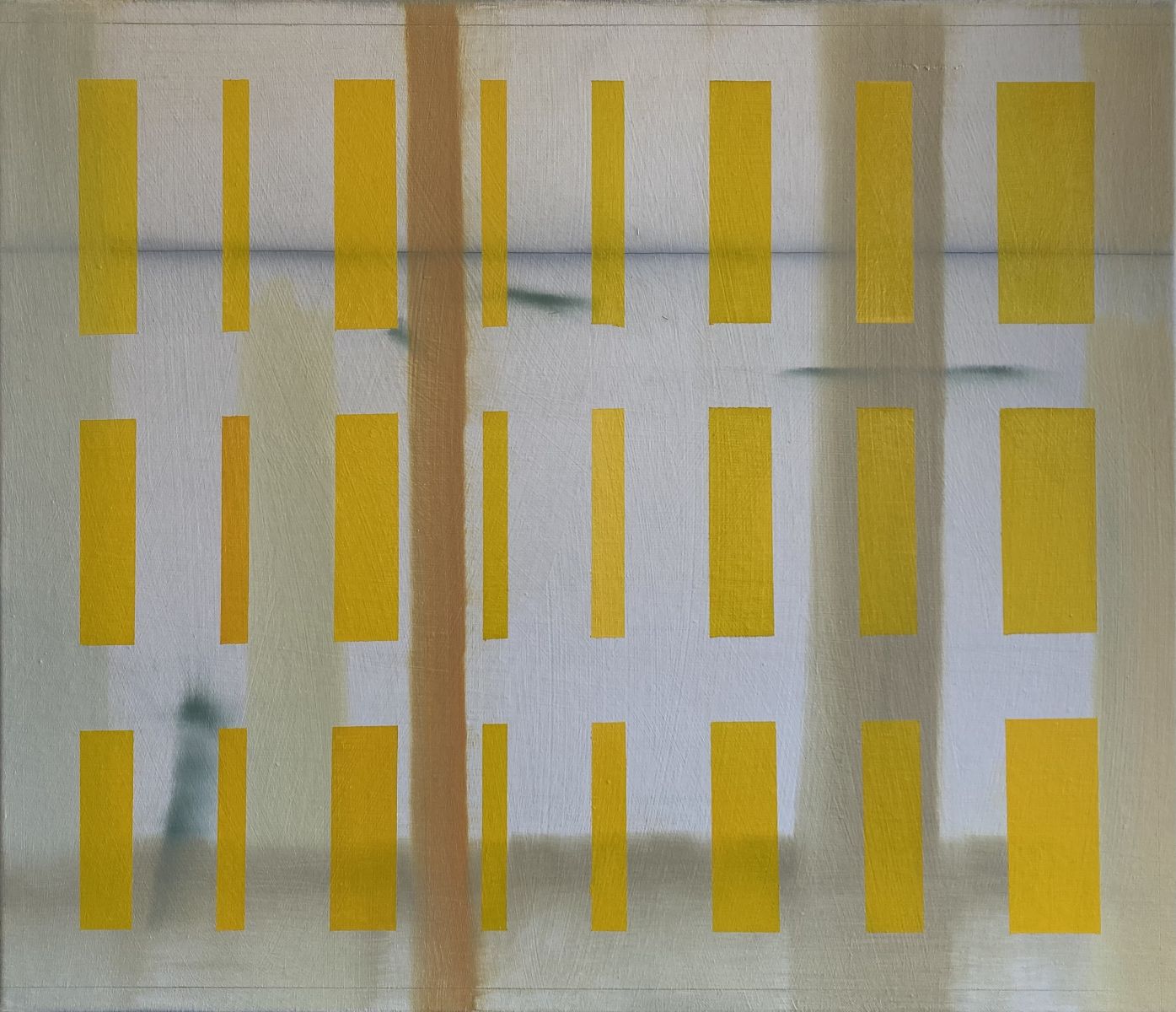
Raf Thys
Untitled [087-I-0119 2022-2023-2025]
Oil on linen, 70 x 60 cm
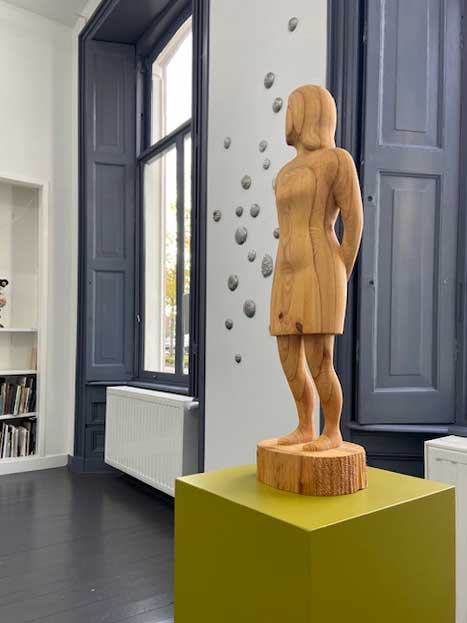
Ingrid van der Hoeven
Elle (2020)
Pinewood, 64 x 19,5 x 14,5 cm
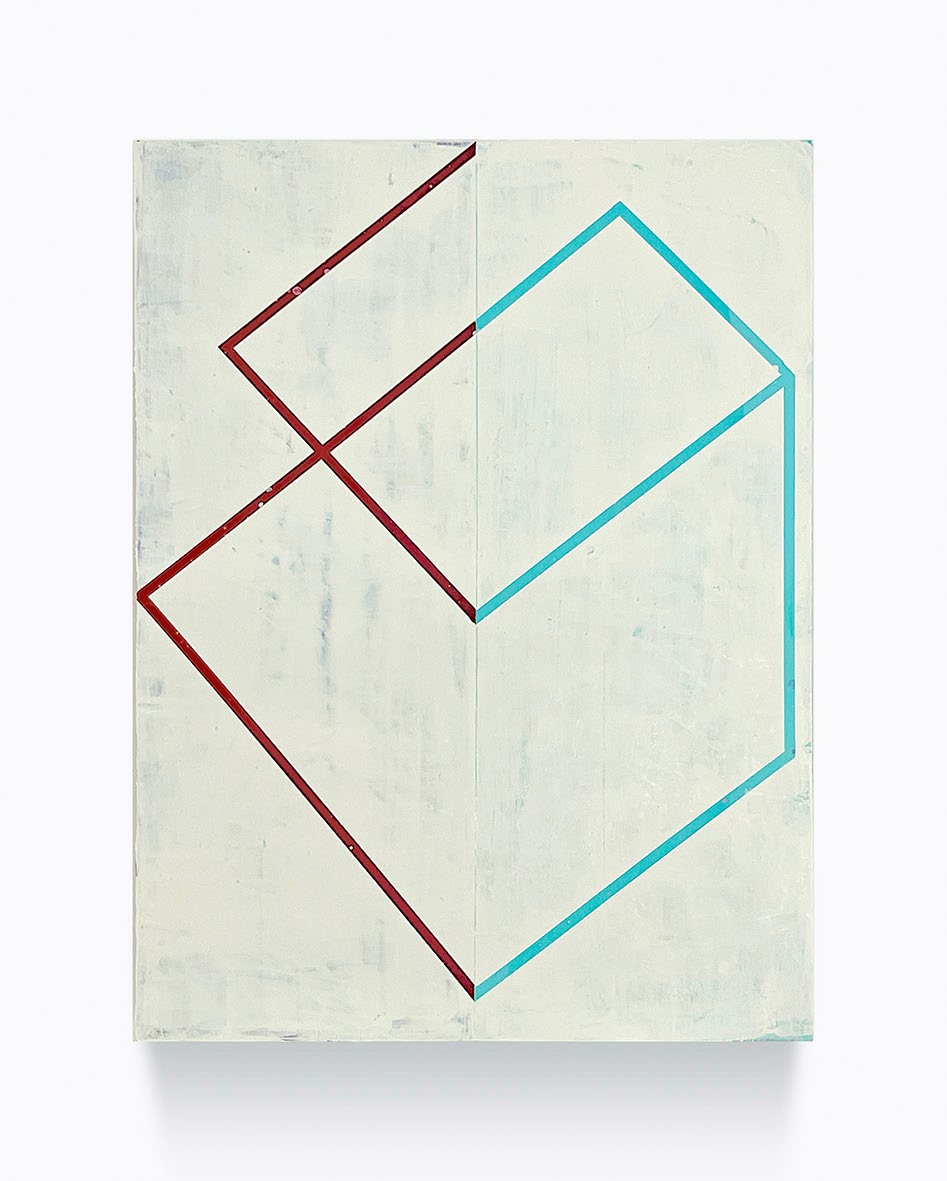
Shawn Stipling
Untitled (2025-04)
Acrylic on panel, 25,5 x 19 cm
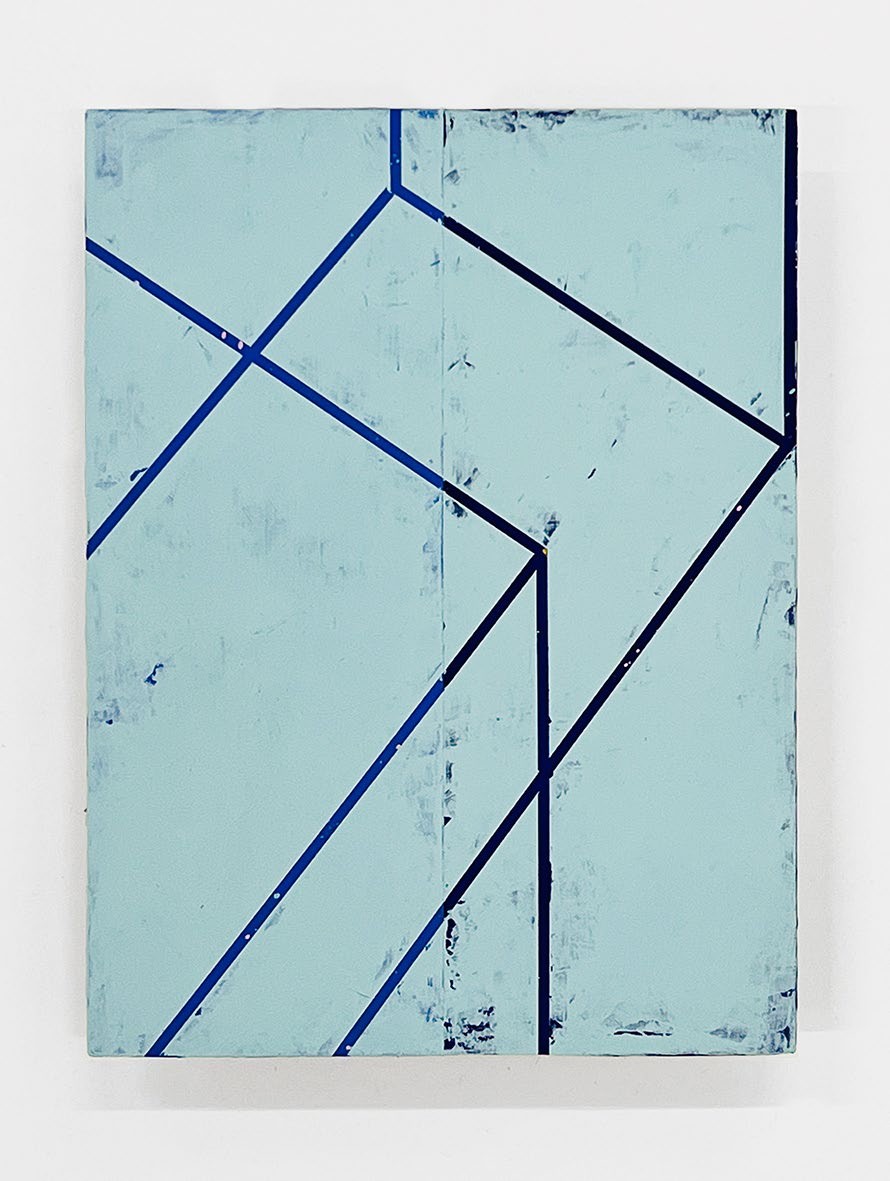
Shawn Stipling
Untitled (2025-02)
Acrylic on panel, 25,5 x 19 cm
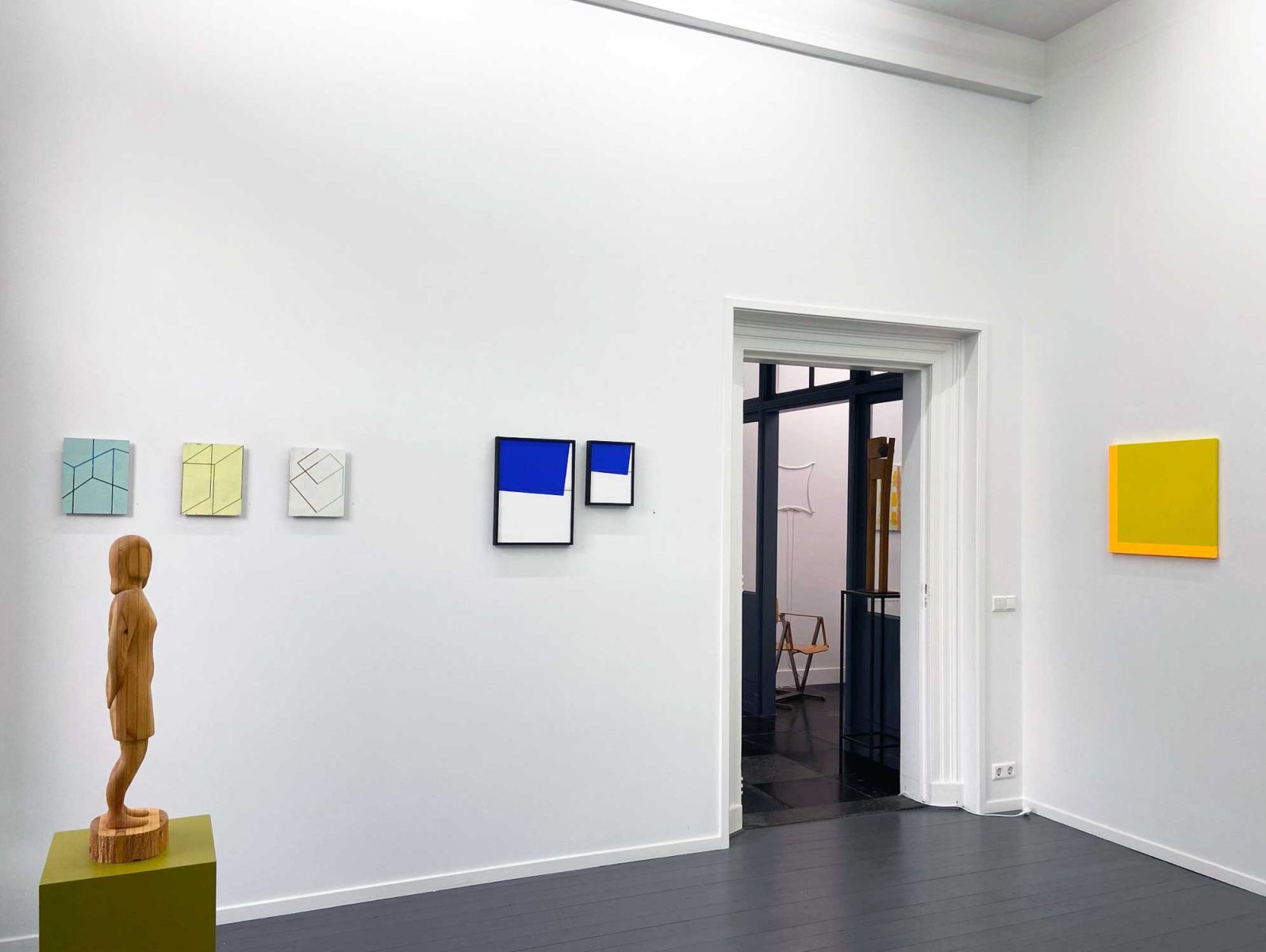
Shawn Stipling - Ingrid van der Hoeven - Dave Meijer - Martha Scheeren
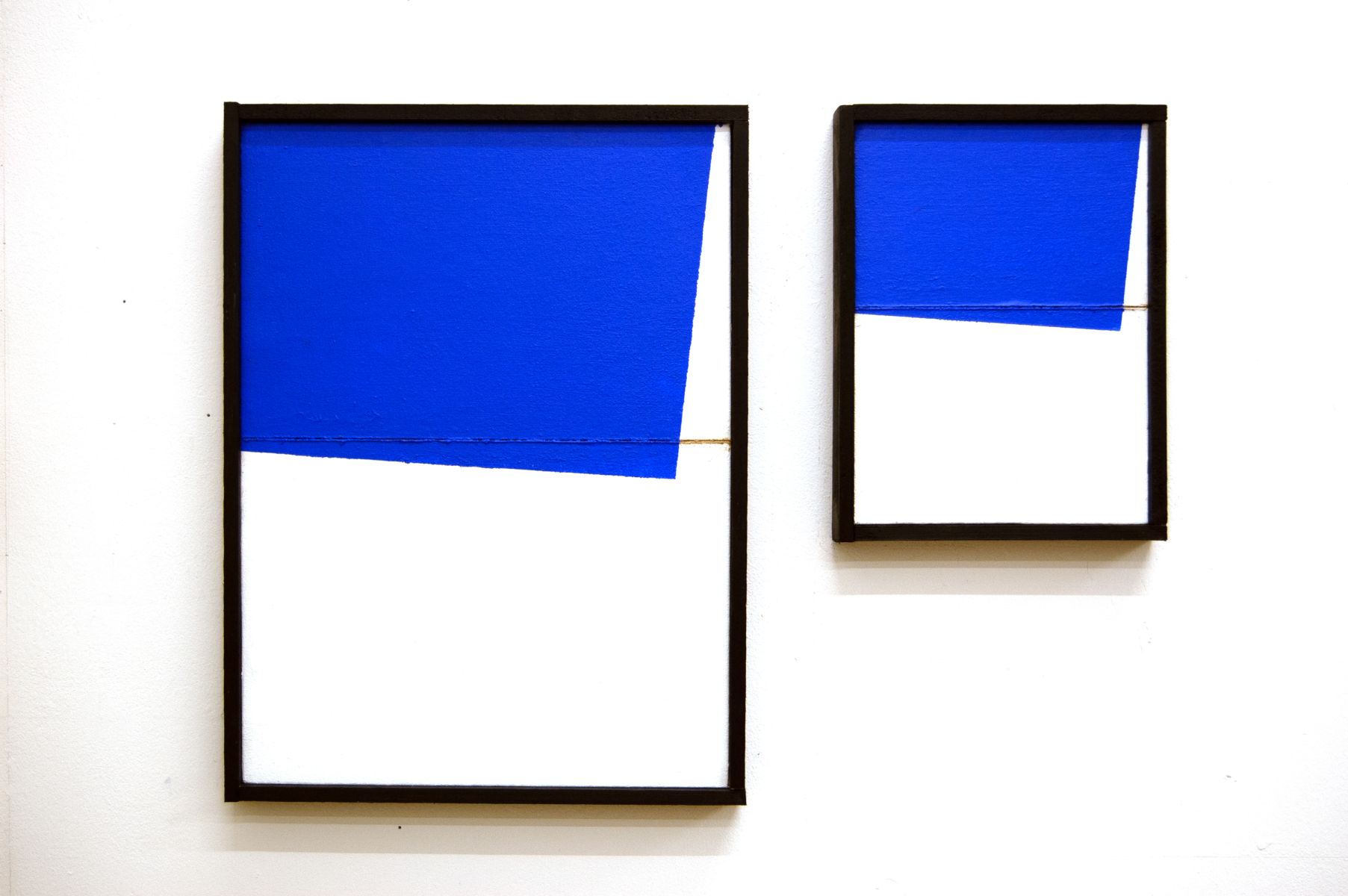
Dave Meijer
‘Een pas achteruit (6)’ 2025
Acryl op doek op paneel, (L) 44 x 33 cm, (R) 27 x 20,5 cm

Dave Meijer
‘Untitled (L-59)’ 2024
Oil on panel, 18 x 25 cm
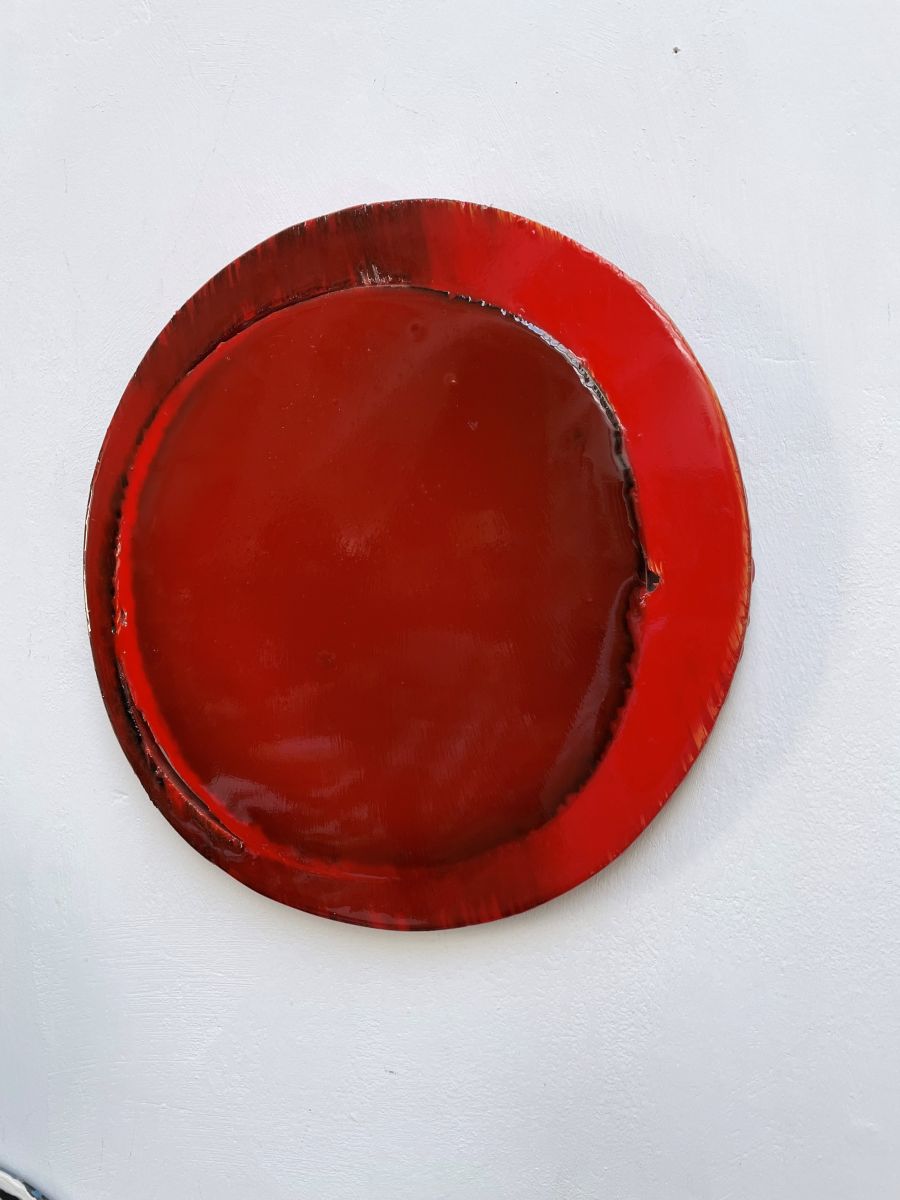
Ton van Kints
‘Sharing Air Red 2’ (2023)
Epoxyresin on plywood Ø 34 cm
.jpg)
P.B. Van Rossem
Untitled (2025)
Oil paint, eggshell on canvas on panel, 20 x 29,9 cm

CABINET
Kunstbeurzen / Art fairs 2025
Art Rotterdam 2025
28/03 > 30/03
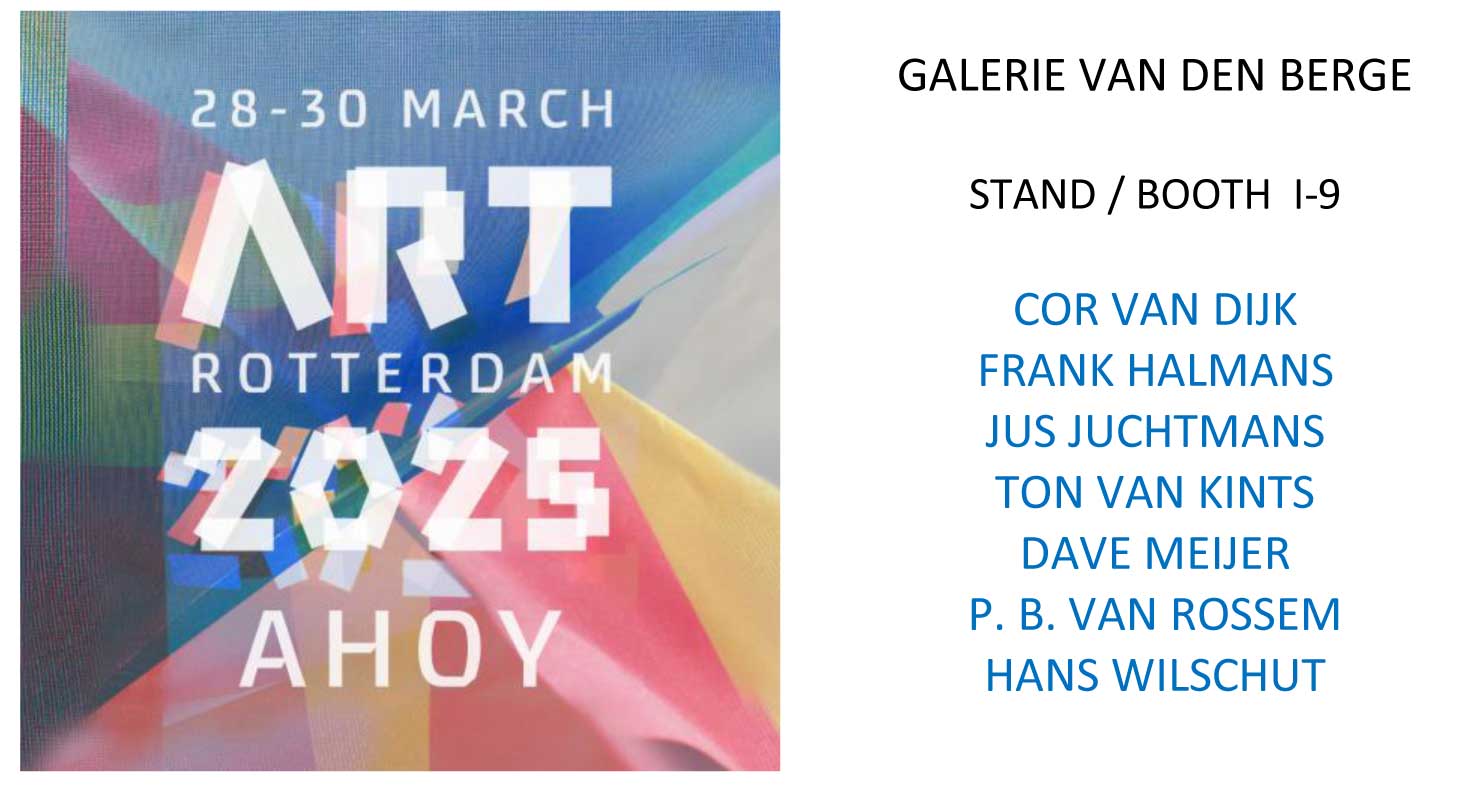
ar%2025%2002%20adj.jpg/image0%20(002)ar%2025%2002%20adj__600x450.jpg)
ar%2025%2001%20adj.jpg)
ar%2025%2003%20adj.jpg/image0%20(002)ar%2025%2003%20adj__427x320.jpg)
NAP + Amsterdam Art Fair 2025
11/09>14/09
